


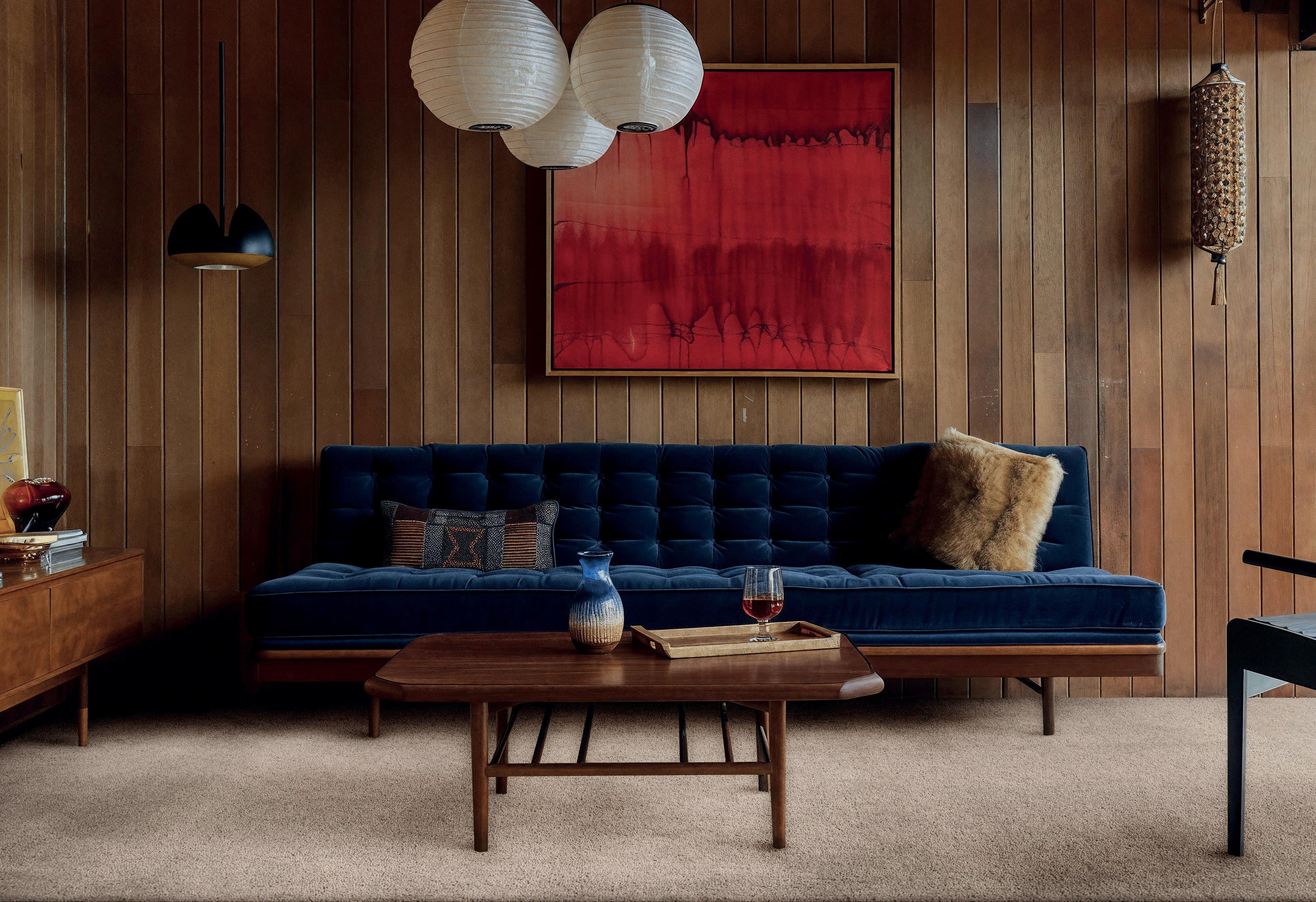
DESIGN







DESIGN


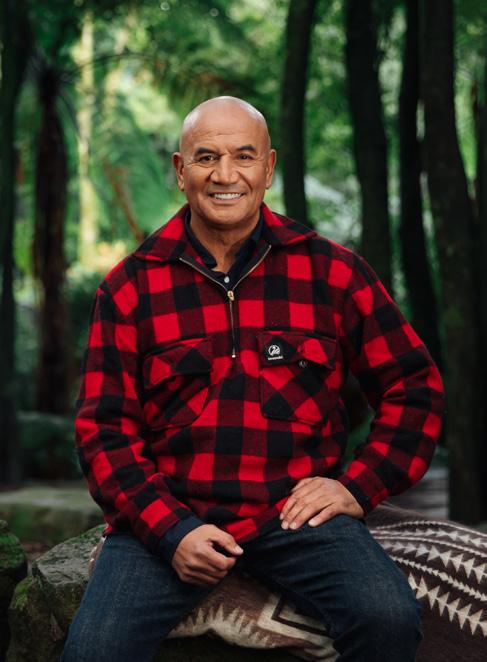

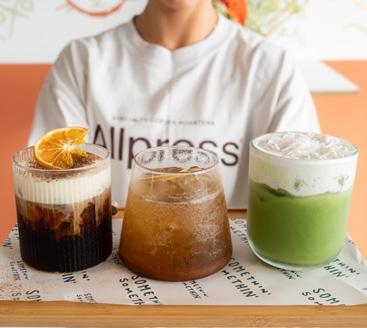
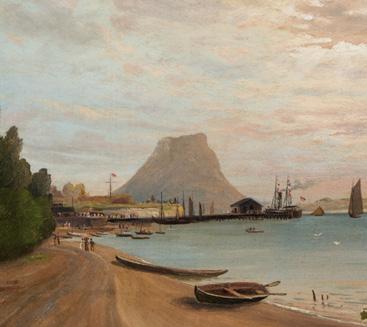
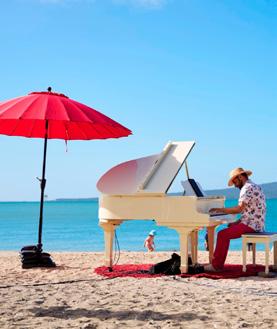


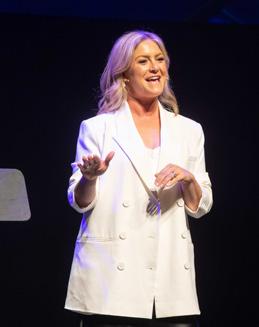
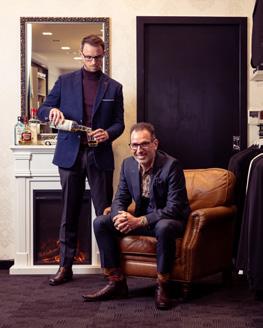
20 Temuera Morrison̓s on fire
30 Tauranga Festival — it’s showtime!

34 Te Puke̓s Christmas angel
37 Rising to the top at ACG
42 Sir Gordon Tiejens’ new legacy
46 PYO flowers with love
48 Te Puia in a new light
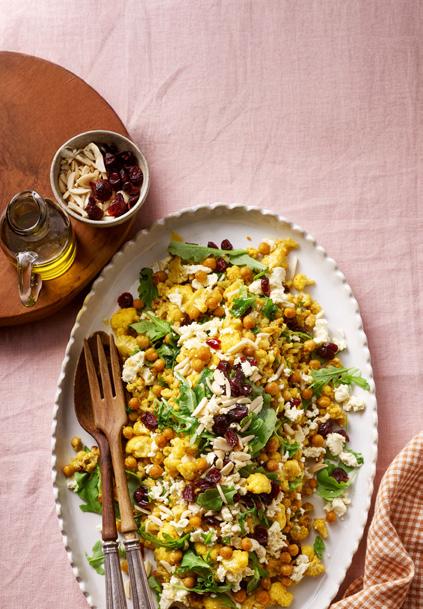
52 Tauranga Museum’s ancient wonders
54 BOP Gin-maker success
58 Anna Cameron̓s top recipes
62 Culinary community heroes
68 Good eggs — farming with heart
74 Artist Q&A with Jackie Barklie
78 Fashion with Nicky Adams
85 Cashmore Clinic: Glow up time
88 Medispa: High-tech solutions
91 Shelly Pullar: Hair for the season
93 Janine Tait’s recipes for life
94 Bay Paediatrics new ADHD clinic
98 HYROX is here
100 Be sleep savvy
106 Bond & Co celebrates 10 years
110 Interiors: Buttery soft appeal
114 Oliver Road Real Estate
120 Landmark Homes on show
124 Bespoke shutters
128 Mitigating financial stress
129 BWN̓s Unstoppable women
130 Cool gadgets tested
131 Macca’s serving up life skills
136 Radio personality Hayley Bath
139 Parenting with connection
142 East Coast roadie
145 The wonder of Zealandia
146 Golfing gals’ getaway
148 India: Land of colour
150 Destination Seoul

Monitor your skin regularly and watch for any changes in moles, freckles, or sunspots. If you notice a spot that doesn’t heal, changes in size, shape, or colour, or begins to bleed, seek prompt medical evaluation.
At the Da Vinci Clinic, our plastic surgeons specialise in comprehensive skin cancer care—from early detection and accurate diagnosis to effective treatment with optimal cosmetic outcomes.
Make regular skin checks a priority, and experience the reassurance of being under our specialised, watchful care. BOOK YOUR SKIN CHECK TODAY.
DIRECTOR
Michele Griffin 021 183 4618 michele@unomagazine.co.nz
DIRECTOR
Rebecca Meyer 027 469 6177 rebecca@unomagazine.co.nz
EDITOR
Hayley Barnett hayley@unomagazine.co.nz
FASHION EDITOR
Nicky Adams nickyadams@xtra.co.nz
DESIGNER
Annabelle Rose
ASSISTANT DESIGNER
Hannah Mahon
SOCIAL MEDIA MANAGER
Amy McKenzie
Happy Hank Media
SUB-EDITOR
Shiree Schumacher
CONTRIBUTORS
Nicky Adams
Amber Armitage
Jo-Marie Baker
Monique Balvert-O'Connor
Hayley Bath
Anna Cameron
Katie Cox
Jess Easton
Jo Ferris
Liz French
Salina Galvan
Alan Gibson
Stacey Jones
Jahl Marshall
Kathrine McDonald
Graeme Murray
Quinn O'Connell
Karl Puschmann
Jamie Troughton
Kristin Ward
Julie Zhu
SUBSCRIPTIONS unomagazine.co.nz/shop
PRINTER Webstar
DISTRIBUTOR Are Direct PUBLISHED BY SAO Media Limited
UNO is a quarterly publication: ISSN 2744-7901 © Copyright 2025. Articles and illustrations may not be reproduced in any form without the permission of the publisher. The opinions expressed are not necessarily those of, nor endorsed by, SAO Media Ltd, unless stated otherwise. While every effort has been made to ensure accuracy at the time of printing, the publisher shall not be held responsible for any actions taken as a consequence of information contained in this publication.
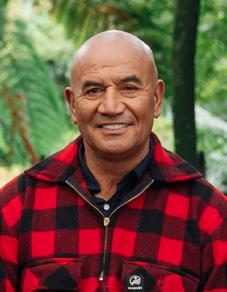
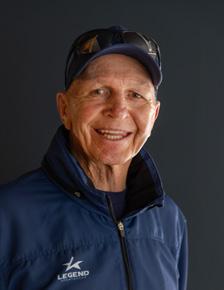
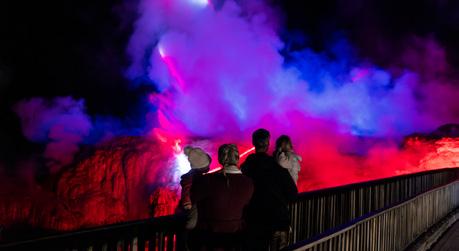
This Spring, UNO is celebrating legends screen legends, sporting greats, cultural icons. And leading the charge is our cover star, a legend who truly needs no introduction.
For 30 years, Temuera Morrison has been a fixture of our national identity here in Aotearoa. His breakout role as Dr Ropata on Shortland Street instantly caught our attention, but his portrayal as Jake “the Muss” Heke in Once Were Warriors was what really saw him being sewn into our cultural fabric. Today, behind the iconic roles, lies a lesser-known passion. A self-described foodie nomad, Temuera steps into a new role in his latest TV show, Earth Oven, where he travels the globe exploring diverse cuisines and cultures. Sitting down with Karl Puschmann, he shares the story of this delicious new adventure, and how a few unexpected Hollywood moments helped
bring it to life (page 20).
Another legend we’re proud to feature is Sir Gordon Tietjens. Best known as the powerhouse coach behind the All Blacks Sevens, Sir Gordon has transitioned from the rugby field to the business world, becoming a brand ambassador and co-founder of Legend Sportswear here in New Zealand. He speaks with Nicky Adams (page 42) about building a values-driven business and redefining success.

And finally, we turn to a natural wonder that really has stood the test of time — Rotorua’s Pōhutu Geyser. Now, thanks to Te Puia’s new Mārama Geyser Light Trail, this geothermal icon is being presented through a dazzling nighttime experience of lights and music. Photographer Graeme Murray captures the spectacle on page 48.
Here’s to the legends.
Hayley, editor

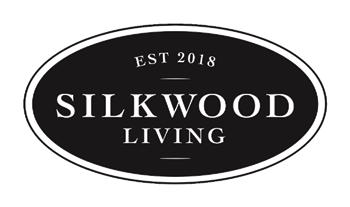
Our premium Poly Lumber furniture crafted in the USA by Berlin Gardens and Artifex Designs is made from High Density Polyethylene, a durable recycled plastic that never needs painting or staining, and will not rot, splinter, or degrade. Built with marine-grade stainless steel hardware for exceptional corrosion resistance, it’s perfect for our harsh coastal conditions. Each piece features Sun Guard Technology, with UV-protected pigments to resist fading, and can be fully customised in endless colour and design combinations to complement your home. Deep seating squabs are upholstered in renowned Sunbrella fabric, offering vibrant, fade-resistant colours and outstanding durability. Backed by warranties ranging from 20-25 years against cracking, peeling, chipping, and rotting, this furniture combines superb craftsmanship, premium materials, carefree long-lasting comfort so you can relax in style for years to come.
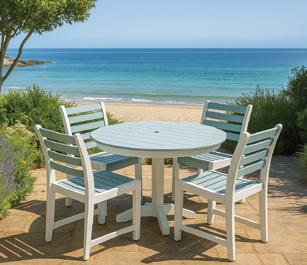



Meet some of the talented creatives behind the Spring 2025 issue of UNO.



As a former New Zealand Herald journalist and Bay of Plenty Times chief reporter, Jo-Marie Baker has been telling local stories for 25 years. Today, she runs her own copywriting business, Tailor-Made Media, producing written content that spans every industry imaginable. From fresh website copy to engaging case studies, press releases, award submissions and more, Jo-Marie is a skilled interviewer who helps clients shine, and ultimately win new business. She has relished the chance to dust off her reporter’s notebook by contributing several articles to this edition of UNO
Kristin Ward wrote this edition’s parenting column for UNO on page 139. She leads the Parent Coaching team at Parenting Place, bringing warmth, wisdom and a down-to-earth approach to helping families across Aotearoa to thrive. Her work focuses on equipping and empowering parents to stay on the same team as their kids — even when the behaviours are tricky — and she believes there are plenty of practical, everyday things that all parents can do to build strong, connected relationships with their children and teens. Kristin is a registered social worker, and together with her husband and three kids, they are involved in respite foster care as a whānau.
After nearly 12 years of sharing recipes on her website and social media channels for Just A Mum, Anna Cameron has now published her first cookbook of the same name. It brings together very special family recipes, popular favourites from her website, and delicious new ones created exclusively for this book. Since starting in 2014, her website has had over 35 million views, and Anna has loved connecting with people through the shared experience of home cooking and baking. In this issue, Anna kindly shares four of her recipes that feature in her new book. Check them out on page 58.




We’ve found the latest products for your mind, body and home.
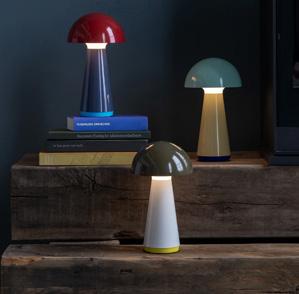
Now here’s a bright idea. The Bob Table Light by Remember is a stylish, splash-proof LED lamp with three brightness levels and up to 35 hours of cordless glow, both indoors or out. Or meet Bobbi, Bob’s smaller sidekick, with the same warm light, but even more portable. RRP$139 for Bob and RRP$89 for Bobbi. PAPERPLANESTORE.COM

Think you’ve got detective skills? Case Closed delivers immersive mysteries set in New Zealand, complete with evidence, twists and suspects. Perfect for game night or a solo sleuthing session. RRP$40. CASECLOSEDGAMES.COM
Fresh, feel-good blooms with a twist! Wonky Flowers rescues perfectly imperfect stems, whether too tall, too short, or just surplus, and delivers them nationwide. Less waste, more joy and all locally grown. RRP from $52 plus delivery WONKYBOX.CO.NZ


Bold and punchy AF, this non-alcoholic Mango Margarita from Free AF brings the heat. Juicy mango, zesty lime and that signature Afterglow™ warmth means zero booze with zero regrets, and 100 percent attitude. RRP$29 for a six-pack. AF-DRINKS.COM
Nestled in Judea, Tauranga, Second Nature Botanicals crafts eco-luxe home essentials, all handmade and hand-poured without machines. With pure essential oils and refillable glass bottles, it’s a thoughtful approach to natural, sustainable living. Use code UNO to get 15 percent off your first order. From RRP$20. SECONDNATUREBOTANICALS.CO.NZ


Dive into creativity with this eco-friendly 3D Lobster Wall Art. Made from recycled cardboard and vegetable ink, it’s a fun, vibrant way to explore sea life and inspire ocean love. RRP$45 PAPERPLANESTORE.COM

Collagen just got smarter. Born in Aotearoa, Everee Women is a next-gen ovine collagen powered by Ovitage, backed by science and tailored for every life stage. Stir it into coffee, smoothies or soups for daily, delicious support. RRP$89. EVEREEWOMEN.COM
Show off your heart of gold. Cathy Pope and Daisy Dagg’s Love Notes collab is a limitededition jewellery set celebrating femininity and connection. Only 100 rose quartz and gold vermeil sets available. RRP$229. CATHYPOPE.CO.NZ

Beloved Kiwi accessories label Deadly Ponies marks 20 years with Thorn of Plenty, a bold, earthy collection inspired by gardens and growth. Classic shapes meet fresh tones like Radicchio, celebrating beauty in the unexpected. Pictured: Mr Sling in Radicchio RRP$769. DEADLYPONIES.COM
Say goodbye to itchy bites. heat it® turns your smartphone into a chemical-free relief device, simply using heat. Clinically proven, travel-ready tech that zaps bites fast. RRP$79.95.
HEAT-IT.CO.NZ

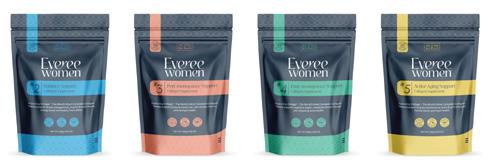




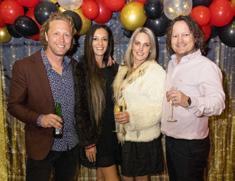


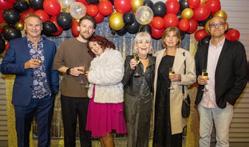

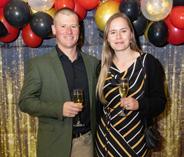

Set against the backdrop of vintage aircraft at The Classic Flyers Museum, the Westpac Chopper Gala raised vital funds for the Aerocool Rescue Helicopter, ensuring that this life-saving service has the best possible equipment for every rescue mission.




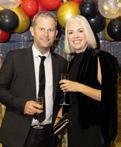
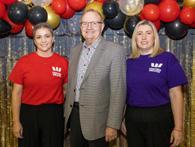
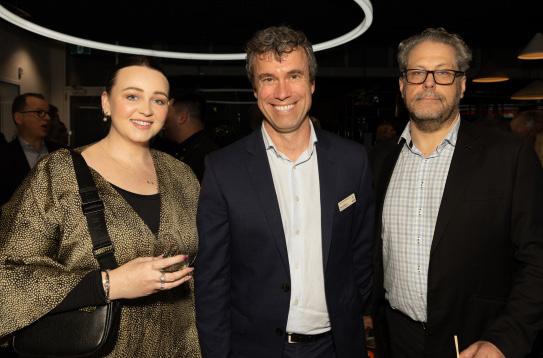



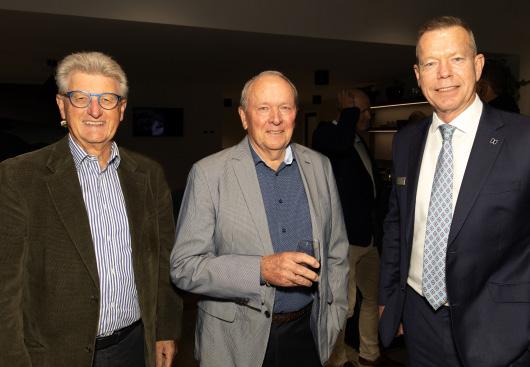





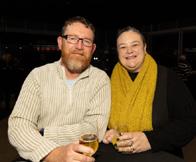
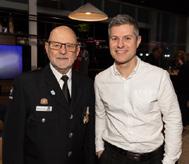


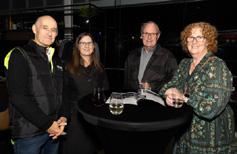
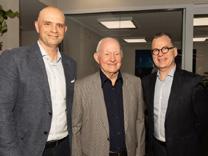
Coombes Johnston BMW reopened its doors as part of BMW Group’s Retail.Next refurbishment. The timely celebration coincided with the dealership’s 30th year of operation and the donation of an ambulance to St John’s, to continue their support of the Bay of Plenty region for another 30 years.

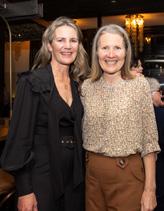

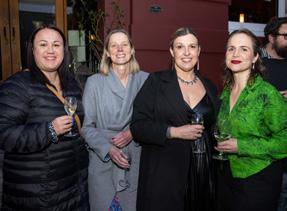

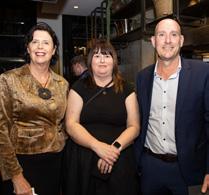
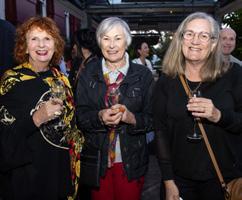
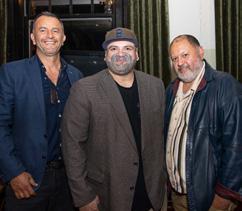
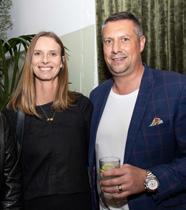


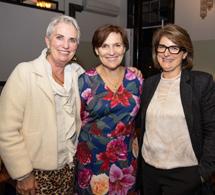
At an intimate gathering at Clarence, guests celebrated the upcoming November reopening of TOI Tauranga Art Gallery, where they met featured artists and got an exclusive first look at the gallery’s bold new brand.

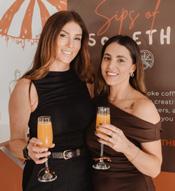
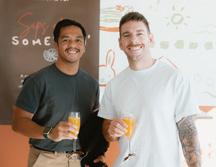


Mount Maunganui café Somethin’ Somethin’ launched the Bay’s first curated bespoke coffee menu, crafted for culture shapers and coffee lovers.

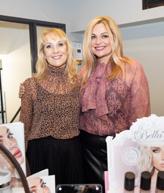
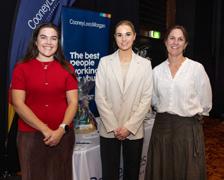


4.
7.


Powered by the Tauranga Chamber of Commerce and held at Tauranga’s Baycourt, the Business Women’s Network Speaker Series ‘Unstoppable’ brought together four iconic female speakers and bold change-makers from around the country for an inspiring evening of connection and storytelling.


3.

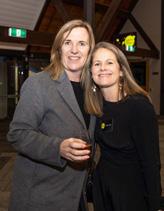
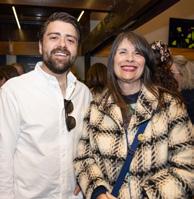
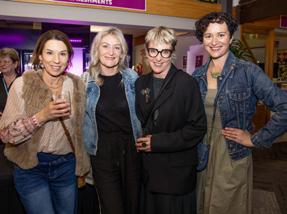


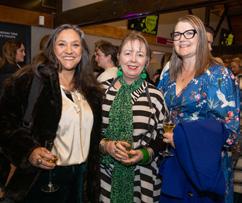
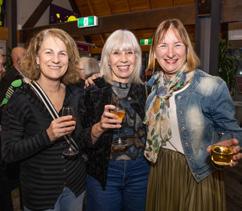


The 2025 Tauranga Arts Festival launch unveiled a dazzling lineup of theatre, music, comedy and dance, promising a vibrant programme that’s set to light up Tauranga.






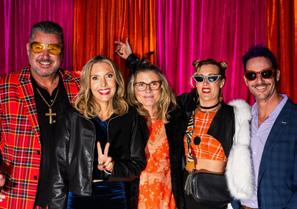



This year’s Thrift Shop Ball was bolder, louder and thriftier than ever. Brought to life by Rozella and her dream team, this year’s event, held at Totara Street, delivered wild self-expression, killer outfits and pure dance floor magic.


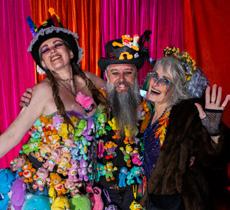


He’s been a Fett, a Mus and a Ropata, but now Temuera Morrison is stepping out from behind the characters to play his most honest role yet: himself. Earth Oven is a world journey steeped in culture and kai. The Bay’s most globally famous resident explains all to Karl Puschmann .
The origins of Temuera Morrison’s new TV series sound like a shaggy dog story. To hear him tell it, Earth Oven is the result of an unlikely chain of events that begins on an ordinary morning and then twists and turns to end with an impromptu hāngī at his house with an A-List Hollywood star and a cadre of bikers.
As you might expect from a globally famous actor, Tem’s a terrific storyteller. We’re enjoying the sun in the garden bar of a gastropub in P ā p ā moa, and he’s acting out all of the various roles within his story with the same dedication to his craft that has seen him land lead roles in everything from the Star Wars franchise to Shortland Street over his storied career. However, the real Oscar-worthy moments in this morning’s performance are when he shakes his head in disbelief at the cascading chain of events.
Earth Oven is a hybrid travel/cooking show that sees Tem travelling the globe to learn and experience how other indigenous cultures cook food underground, in the same manner as our hāngī. In the show, he travels
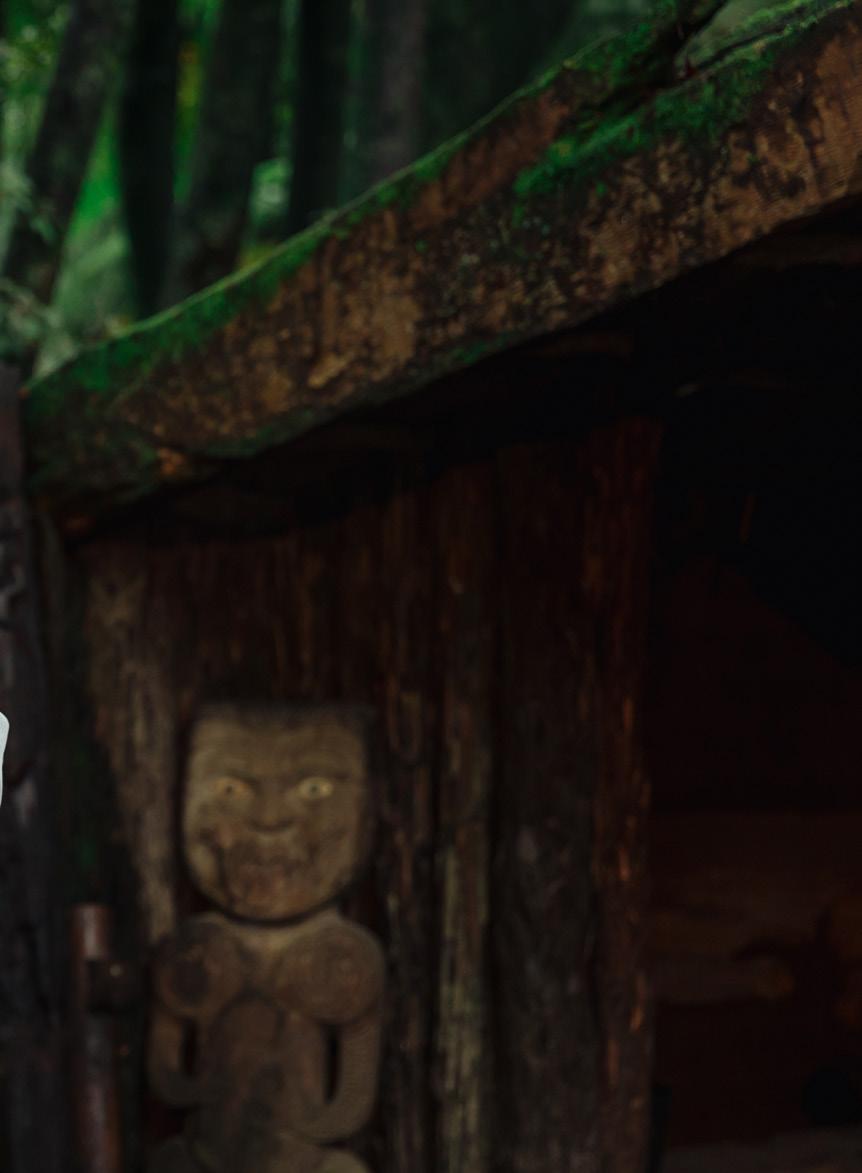
from the deserts of Jordan to the oceans of Chiloé and even across the ditch to Australia, amongst many other countries that, surprisingly, utilise this traditional cooking method.
With the show’s focus on food, it’s only fitting that Tem’s story begins after breakfast. He’d finished eating and had gone for a walk along Maketū Beach, where he resides, on a rare day off when he ran into a friend. His mate was about to head off to Newdicks Beach to cater for a Whakaata Māori [Māori Television] film crew who were shooting the documentary series Kairākau there. With nothing on his schedule for the day, Tem offered to give his buddy a hand.
“So we get there. I’m carrying in all the food, and people are turning around going, “Hey! Who’s that fella?”. I say, “Got a bit of a hāngī for your lunch today, boys, all right?’. Then I start ordering everybody around. ‘Hey, hey, hey! I need some more tables here. Where’s the rubbish bins? Get all those bloody extras out of here!’.”
He grins and says, “I’m placing everything down the way I see it on the movie sets I’ve been on. My mate’s
quite impressed. He goes, ‘This fella knows what he’s doing’. So I’m there, doing the catering and then I find out Jason’s coming down to Rotorua and going to see Cliff.”
From anyone else, this would sound like an epic namedrop moment. But for Tem, Hollywood star Jason Momoa and Rotorua actor Cliff Curtis are pals. The trio have recently worked together on Apple TV’s big-budget Hawaiian historical drama, Chief of War
“‘Going to see Cliff?’” he repeats, shaking his head in mock indignation. “‘What the hell? How come I don’t know about this?’. I’m straight on the phone to Jason; ‘Where’s my invite? You better come and see the Chief before you go and see the other fella, okay?’”
He laughs at the memory. “I said to him, ‘Stop in Maketū, and then you can carry on to Rotorua.
I’ll put lunch on for you fellas.”
For Tem, eating together is about more than just the meal. It’s about connection and respect, linking his Māori traditions and showing hospitality as a universal value. Indeed, after I arrived for UNO’s interview, the first thing he did was offer to get us whitebait fritters for lunch. So, inviting Jason for lunch was almost an instant reaction. What he didn’t realise, however, was that Jason wasn’t travelling alone.
“I said to him, ‘How many for lunch?’” He pauses a beat before delivering the punchline.
“Twenty-two.”
It turns out Jason was leading a convoy of his motorcycle club, Redrum MC, an indigenous biker group from Los Angeles.
“I turned to the same mate I’m doing the catering with and said, ‘Bro, Jason’s coming to town. We’ve got to do a hāngī. We can’t just put on a barbecue. We got to give him the real deal.’.”
They finished up on the set and rushed over to Tem’s. It was while the pair were putting their day’s second hāngī down that Tem had a flash of inspiration. He and a director friend had been talking about doing a show together based on the ideas of food and cultural connection. This spontaneous lunch turned out to be the perfect chance to not only capture proof-ofconcept footage that the idea could work and be entertaining, but also to give the footage some Hollywood star power to help attract funding.
“We filmed the whole day. Jason and all his bikies turned up, we fed them all and we filmed it. It was beautiful.
Then, with satisfaction at a job well done, he beams, “The hāngī came out great, too.”
“ THERE'S NO HIDING BEHIND A CHARACTER. IT'S MY OWN CHARACTER.. . ”

While Temuera Morrison has played many iconic characters over the years, like Doctor Hone Ropata in Shortland Street, bounty hunters Jango Fett and Boba Fett in the Star Wars franchise, and the terrifying Jake the Muss in Once Were Warriors, he says his role as the host of Earth Oven has been his biggest, scariest challenge. This is because, as the show’s host, he’s playing himself.
“There’s no hiding behind a character. It’s my own character, which I normally keep hidden,” he admits. “I’m still coming to terms with it. I’ve had a look at a

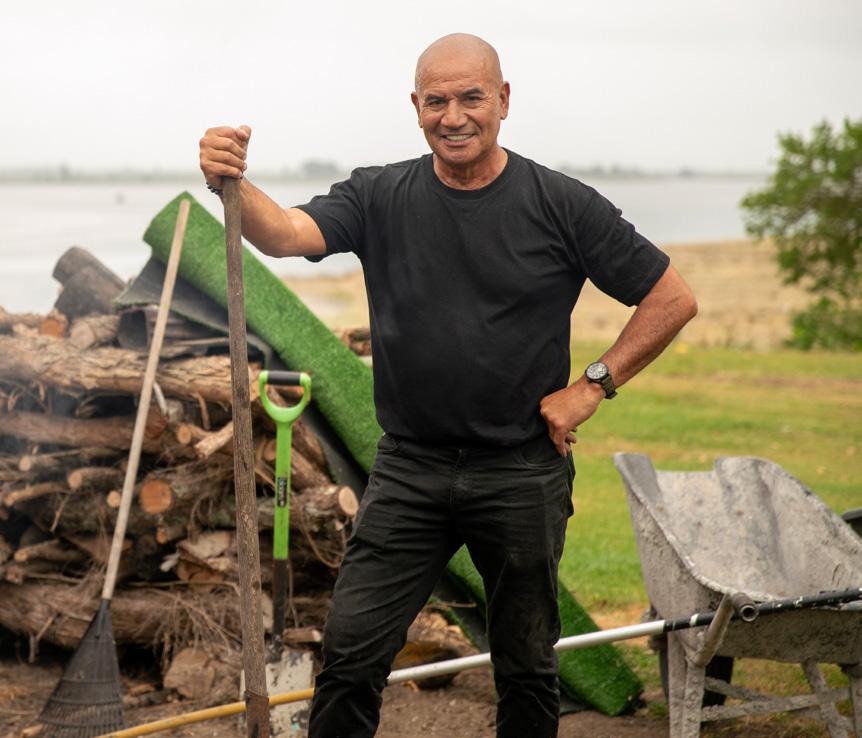

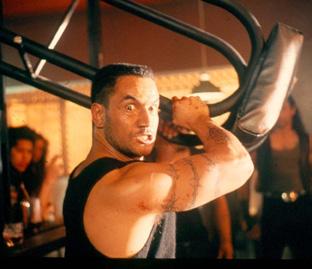

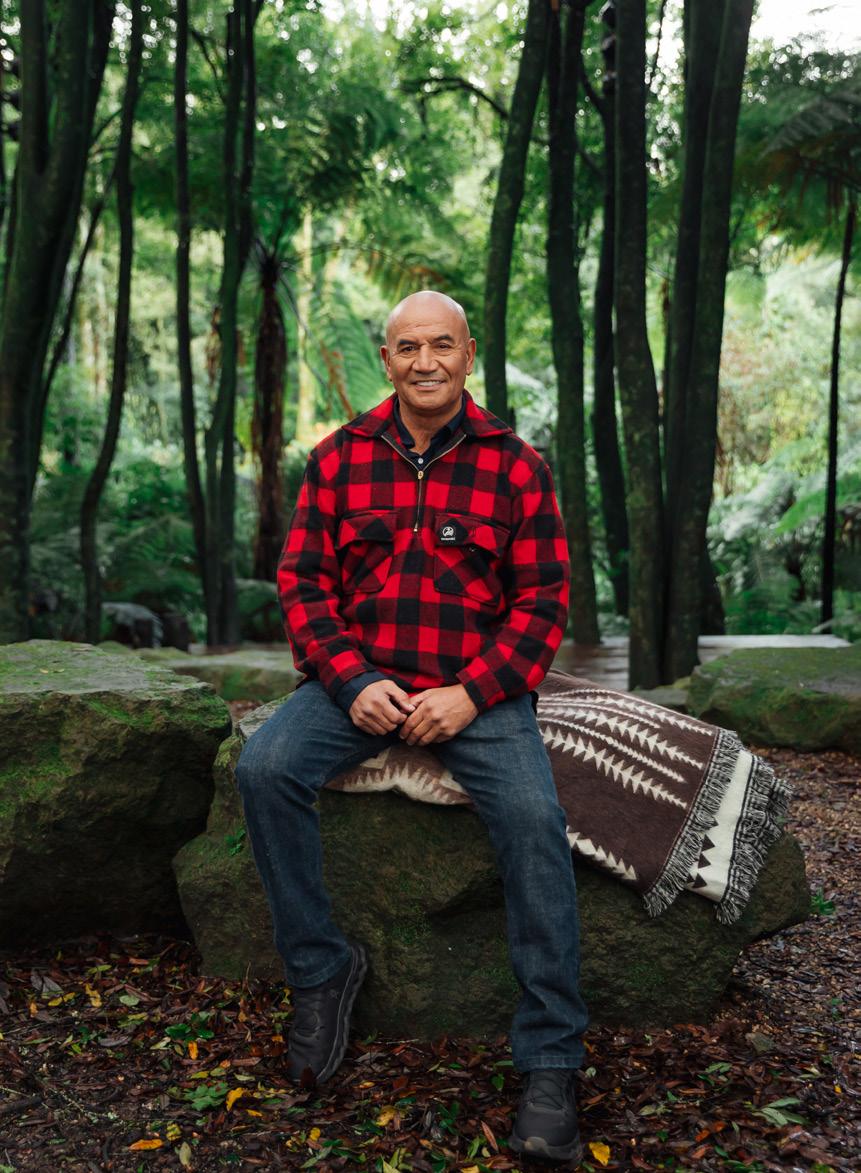

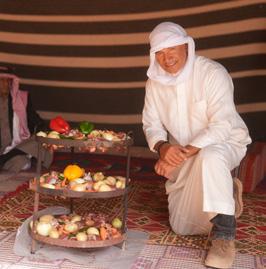

couple of episodes, but I didn’t know what to think by the end. I’m baring my own personality. It’s a feeling of vulnerability.”
This feeling was fed by his lack of expertise or knowledge when it comes to food and food prep.
“I’m no cook, I’m no chef,” he says. “I didn’t even know what I was doing. I was a bit naive.”
What troubled him most was his inexperience in discussing food.
“When you’re doing a cooking show, you need adjectives. You need descriptive words. You need to be able to discuss flavours and textures. I had none of that,” he sighs. “I didn’t have that vocabulary.”
The funny thing is, as a viewer, it’s precisely his lack of expertise that turns out to be the show’s special sauce. You know his reactions are genuine and his comments on the various cooking techniques and new tastes are sincere. It also allows him to act as a stand-in for the audience watching at home.
“I was outside my comfort zone, so I just played on it a bit. That’s just the clown in all of us. I’ve got a bit of the clown in me, too,” he grins. “It’s in my family. On our Morrison side, we’ve got a few clowns. We’re performers. We’d be on the stage with Uncle Howard. We’d set up the microphones and sing the ‘oohs’ and ‘ahhs’ on some of his big numbers. Then
we’d come out and do the haka, and he’d bring us on to do bits and pieces.”
Uncle Howard, of course, being the renowned Kiwi entertainer, Sir Howard Morrison.
“I saw Uncle Howard work a lot. We were brought up singing. So on the show I was opening myself up a little bit,” he says, before, perhaps, realising he’s opening himself up a little bit again. Instead of continuing along that train of thought, he smiles warmly at his memories and shifts gears, saying, “But it was a warm, warm experience, and very cultural.”
He starts talking about his travels on the show.
He speaks of gathering shellfish with an old lady in Chile, South America, who reminded him of gathering mussels with his auntie along the beach, of horse riding with the Mapuche Indian, which saw him, “reliving my childhood on the horse. Trying to stay up and hold on tight,” and of cooking a whole pig in an imu, Hawai’i’s version of a hāngī.
“The whole pig went in! We put it in at 6pm and cooked it overnight,” then, chuckling, he says, “We couldn’t be bothered having it for breakfast, so we left it in all day.”
He shows me photos on his phone of his time with the Bedouin in Jordan, travelling on a camel into the desert, whose offer of a simple cup of coffee instigated a ritual with strict protocols that are laden with meaning.
“ I WAS OUTSIDE MY COMFORT ZONE, SO I JUST PLAYED ON IT A BIT. THAT'S JUST THE CLOWN IN ALL OF US... IT'S IN MY FAMILY. ON OUR MORRISON SIDE, WE'RE PERFORMERS. ”
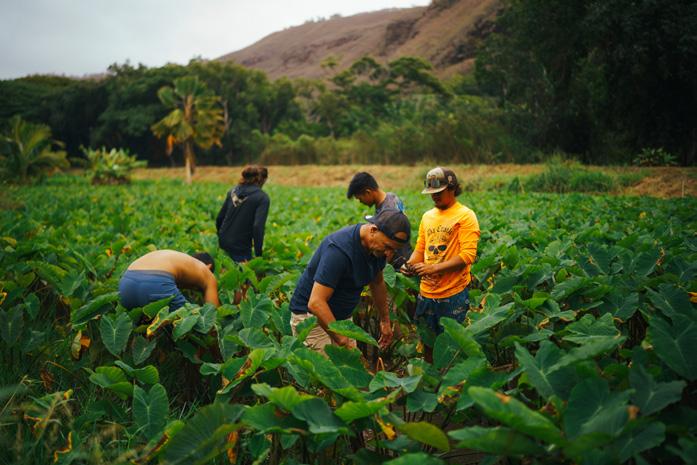



“We’re out in the middle of nowhere. It was beautiful. We got there by camel. And then we’re about to have coffee with the Bedouin warrior who’s roasting the beans and everything. There’s quite a cultural significance when you have coffee. It’s a man-on-man business.”
Partaking in and respecting the foreign cultural traditions was something he took extremely seriously. During the coffee ritual, you can see his concentration, to ensure he’s using the correct hand to do things that we don’t give a second thought to, like, for example, holding his cup or how it’s placed
when it’s empty. “It’s quite sacred and respected. They only share certain moments with their close ones,” he explains. “Opening your mind to that cultural depth is something I really enjoy.”
It was also something made more challenging by the fact that throughout the series, most of his verbal communication was through an interpreter. However, he quickly found that no matter where in the world he was, words became increasingly less important in communicating. As he was so hands-on in the preparations and because it’s such physical work, he quickly forged bonds with his hosts.
“ TRAVEL OPENS YOUR MIND UP. I'M GETTING OVER TO THESE PLACES, SHARING FOOD WITH THESE FAMILIES, RIGHT ACROSS THE WORLD. AND YET, THERE ARE ALL THESE COMMON THINGS: SITTING DOWN, CONVERSING. ”
“I read once that the ocular dialect needs no translation. So for me, working all day with a guy who doesn’t speak my language, you just know what he wants. You know what he’s talking about. Even though they’re speaking Spanish, Indian or Hawaiian, you don’t actually have to ask what they’re saying. You just have to be present. There’s a natural camaraderie that you build up.
“I respected them, and we became very good friends. Because we ’re going, our mission is to cook this. You ’re going to teach me, and I ’ ve got to do as much as I can. I’d get stuck in. By the end of the day, I ’d be covered in dirt. By the time we’d put it all down, I ’d be ready for a beer.”
“After being around food all day long, you’re very thirsty. But, you’re not that hungry,” then he laughs and says, “Sometimes you don’t even worry about the food. The drinking gets in the way. It’s thirsty work!”
While we’re all familiar with hāngī, it’s fascinating to learn how other cultures, separated by vast oceans, developed similar cooking methods with their own unique spin due to their environments. And while he
says he “picked up a few tricks” when it comes to putting on his own hāngīs going forward, for him, Earth Oven is more about that human connection that sharing a meal with someone creates.
“I think we’ve really got some magical moments. When I’m being hosted, I always feel humble and always get emotional when people take time out of their day to host me and my crew,” he says. “That’s where I’d always get emotional, at those moments when we’ve actually sat down, and finished the food. I always felt a bond and wanted to thank them.”
“There’s a saying, ‘What is the most important thing? It is people.’ I love that saying. And that’s what I learned on my travels. Travel opens your mind up. I’m getting over to these places, sharing food with these families, right across the world. And yet, there are all these common things: sitting down, conversing. It reminded me of what we used to do growing up, when we all got together in summertime as a family in Hangatiki for Christmas to share in the haymaking.”
Then he smiles warmly and says, “So, it was quite a spiritual journey for me,” before tucking into the whitebait fritters that have just arrived for lunch.
Earth Oven screens on Sky Open, Neon and Sky Go from November 5, 2025.
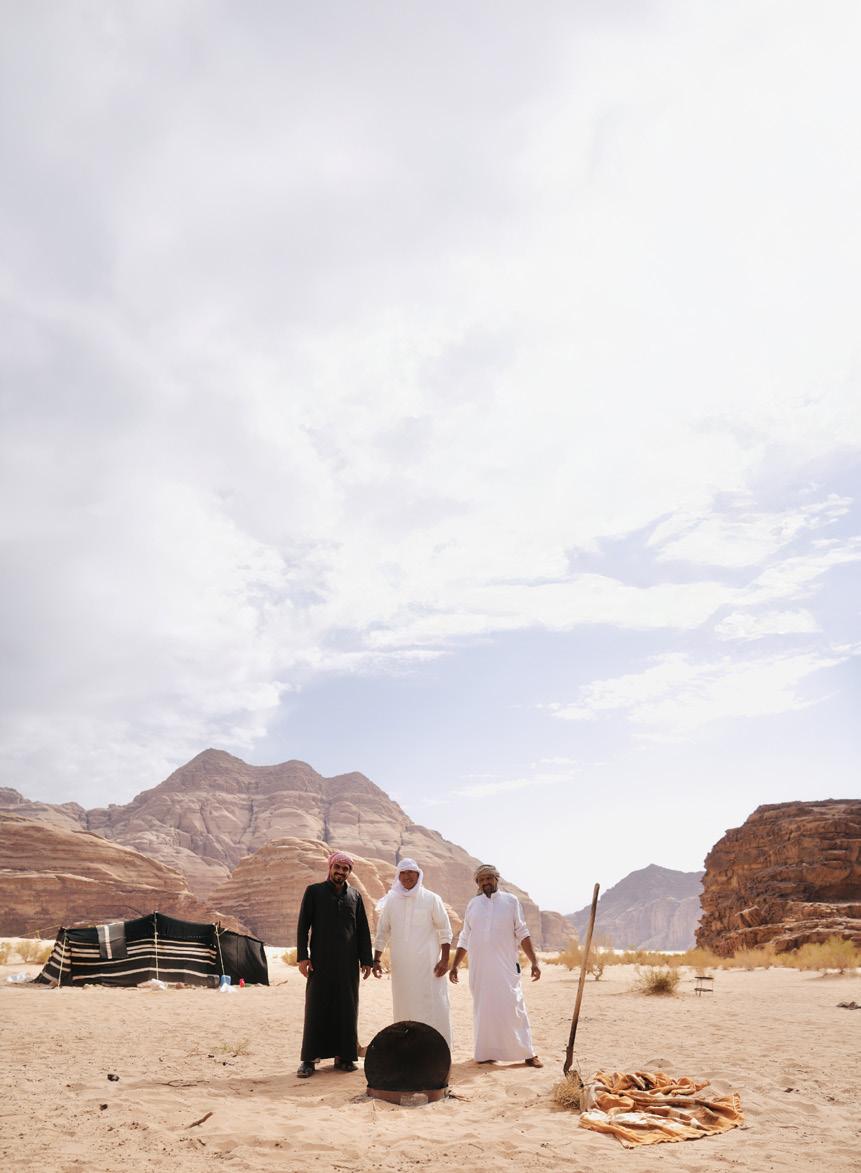
In Jordan, Tem lends a hand preparing the zarb the Bedouin hāngī equivalent.
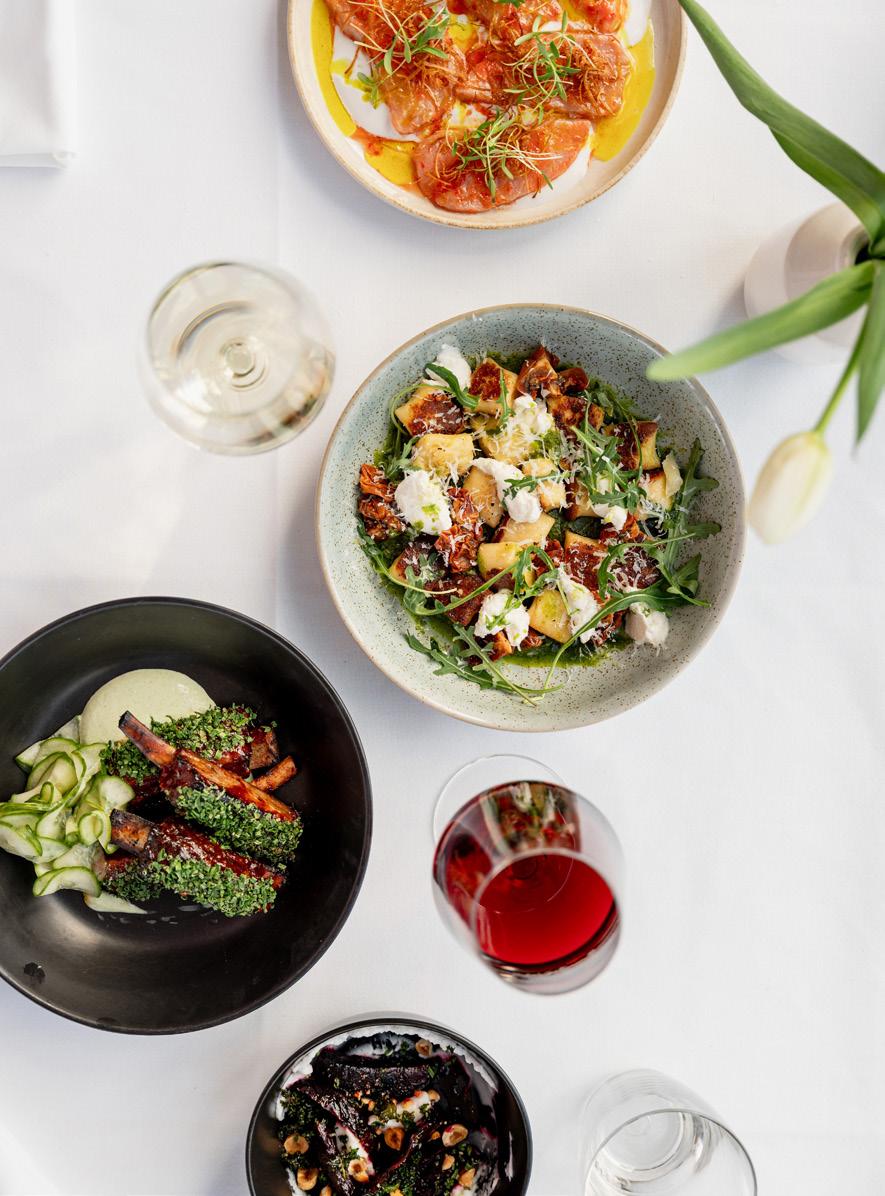

When food, culture and creativity collide to make our region the place to be.
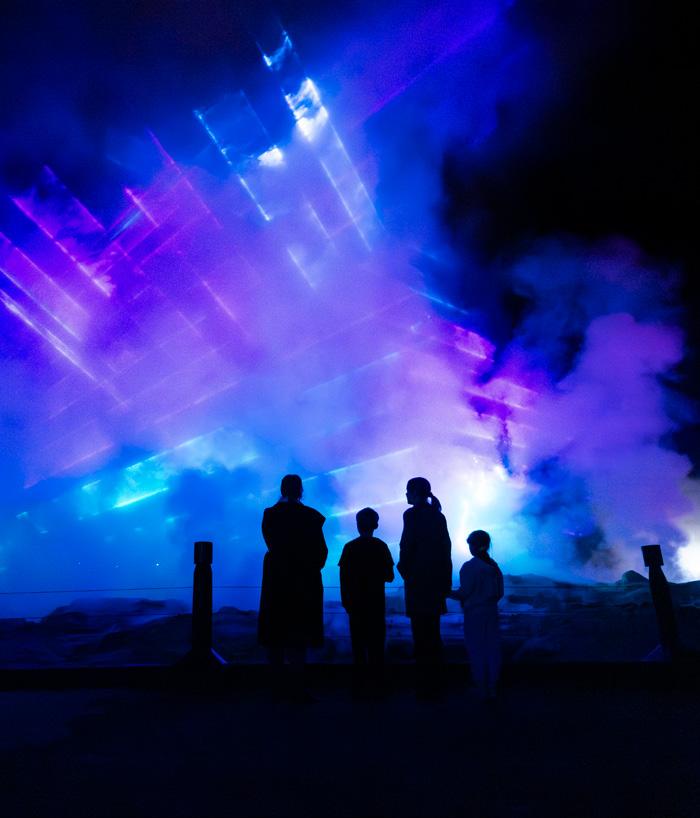
A wondrous new geothermal nighttime experience
PAGE 48
The distilleries putting Bay gins on the map
PAGE 54
Heading back to the BOP
PAGE 38
Initiatives feeding those in need
PAGE 62
Tauranga Arts Festival will come to life with a dazzling circus, bold beats, sharp wit and homegrown brilliance.
WORDS MONIQUE BALVERT-O’CONNOR

Internationally acclaimed circus performers, musicians, authors, actors and comedians will be amongst those set to thrill at the 2025 Tauranga Arts Festival. Taking to our stages will be the likes of Cirque Bon Bon, Tami Neilson, Hayley Sproull,
Rhys Mathewson, Te Radar, Chelsea Winter and Catherine Chidgey to name but some. It’s an impressive line-up that also includes plenty of local talent keen to delight the crowds at their city’s flagship art festival event, kicking off over Labour Weekend.

Ayesha Kee doesn’t plan on raising the roof of the Carrus Crystal Palace, but she’s sure hoping she’ll have that glorious tent rocking.
The Tauranga DJ queen can’t wait to “slay the disco way” during the Tauranga Arts Festival where she’ll help fulfil many a dazzling disco dream. Ayesha will team up with powerhouse vocalist Lisa Tomlins to deliver a Queens of Disco event. Expect the most iconic disco anthems ever to hit the dancefloor. Think Diana Ross, some Pointer Sisters, Bee Gees… feel good music, Ayesha says, that’s likely to seduce many, of varying age groups, onto the dancefloor.
By day Ayesha is a community development manager at Kaiwhakahaere Whakawhanake Hapori. By night, well, that’s alter ego time.
“I have always loved music but never learnt an instrument, so I got into deejaying about 20 years ago. I love it so much as there’s the opportunity to take people on a musical journey, and you just make people happy,” she beams.
Tauranga’s proud to claim her. While Ayesha’s only been Tauranga based for 10 years, Ngāti Ranginui is her iwi and Ngāi Tamarāwaho her hapu.
She will be one of an array of local talent in the spotlight over festival week.
UNO is proud to be sponsoring what’s expected to be a hugely popular festival event: comedian Hayley Sproull’s show The Baroness. It’s so named as Hayley is The Baroness sky-rocketing towards 40,

with a “happily untenanted” womb and a life of love, leisure and lingus. Hayley feels less barren and more Baroness.
As a Baroness, her focus is on making “martinis, not milk. She changes her mind, not nappies. She wants durries, not diapers.” Tauranga Arts Festival attendees can rest assured she’ll be delivering not a child, but copious amounts of chuckle-worthy moments.
Tauranga Arts Festival general manager Sarah Cotter says this year’s event will be full of fun, magic and vibrancy, with world-class performances, thoughtprovoking conversations and experiences to stir the senses and soul.
Local creatives playing a part in delivering all that wonder include the festival team’s very own content creator Fabio Camera, who, like Aeysha, cannot resist the call of music when his day job is over. Aptly, he’s a

musician in a band carrying a name meaning work and happiness Ozi Ozaa. This Afrofunk band will perform on the Tauranga Waterfront in the Carrus Crystal Palace Spiegeltent.
Still on the music front, local talent will also be showcased during two of the festival’s free events Opus Pocket Orchestra Concert and Undergrand. The former is focused on little listeners and will feature 30-minute concerts offering young ones a joyful, interactive introduction to orchestral music. Undergrand, meanwhile, has been dubbed “a piano in the wild”. Imagine stumbling upon a baby grand piano in the most unexpected places, like Mount Main Beach at Sunrise, Tauranga’s waterfront after dusk, and in a city park by day. This roaming, open-air musical experience will include a line-up of up-and-coming Tauranga students and seasoned pianists playing everything from classical to jazz to improvised soundscapes.
Playing a key, guiding role in two events is awardwinning Tauranga born and raised Jason Te Mete (Ngāti Ranginui, Ngai Te Rangi), a freelance actor, singer, dancer, director, pianist, and playwright/writer. His festival babies are Battle Chorus – where two choirs go to war and also Waiata Mai, a free-to-all singalong (watch out for some local legends, like a free-toall sing-along that closes the festival on Sunday November 2.

“... SIT BACK, RELAX AND IMMERSE.. ”
The final days of the festival, in early November, involve Escape, with its focus on the literary. In amongst the major New Zealand fiction writers is Tauranga’s own Anne Tiernan, author of bestselling novel The Last Days of Joy (partially set in Tauranga), and (recently released) The Good Mistress
Less joyful, but inarguably good, is the demise of the New Zealand media, and Tauranga’s investigative journalist Jared Savage will speak to this in Media Madness. Jared will join a line-up of journalists in unpacking and debating the media landscape of 2025.
Sarah Ell will also offer learning opportunities. Sarah’s recently published book The Spirit of a Place, is a new history of The Elms | Te Papa Tauranga, recognised as one of New Zealand’s most significant heritage sites. Sarah’s talk promises a rare glimpse into Tauranga’s layered past.
This part of the festival will honour the late, great Tauranga writer Sherryl Jordan who wrote beloved novels for children and young adults, including: Rocco, The Wednesday Wizard, The Juniper Game, and Winter of Fire.
Escape invites people to “sit back, relax and immerse in a suite of scintillating conversations”, says former Tauranga resident Claire Mabey. She would know she devised the programme. Claire, who is of strong literary pedigree, has strong ties to the festival, having
been part of the organising team on previous occasions. Amongst her accomplishments, Claire is The Spinoff’s book editor, the founder of Wellington’s Verb Festival, and author of The Raven’s Eye Runaways (and its just-completed sequel).
To end with a Z… back by popular demand is Tauranga Zinefest. This popular independent publishing event that celebrates creativity on the fringe returns.
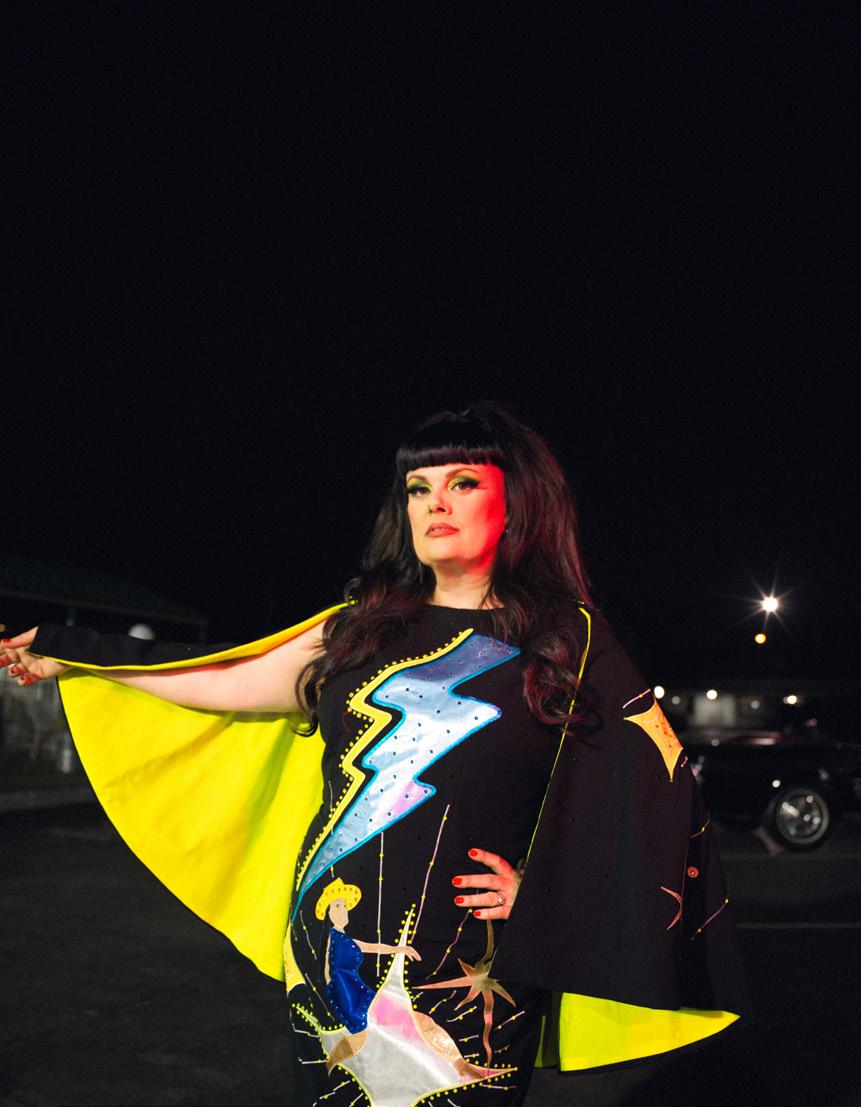
“THIS IS TAURANGA’S FESTIVAL. ”
The festival excitement includes a diverse range of family-friendly and free events offering the chance to be wowed, to sing your heart out, get creative and to have a giggle or two, says its proud and excited general manager.
“This is Tauranga’s festival, and we want to make it as accessible as possible to as many Tauranga people as we can,” Sarah says.
Some of the free events (Undergrand, Zinefest, Opus Pocket Orchestra Concert) are mentioned above. Add to that Waiata Mai, Obelisk Natura and CAR-A-OKE!
For show times and tickets, visit TAURANGAFESTIVAL.CO.NZ

More than a Christmas shop, Angela Thomson’s magical Te Puke store reflects her lifelong mission to create lasting joy for others.
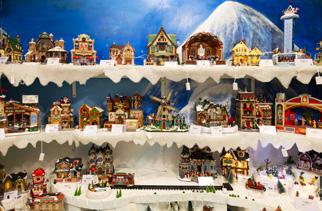

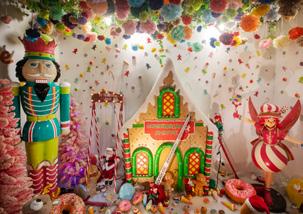

In the heart of Te Puke sits a little pocket of wonder, a tiny store in which every corner whispers nostalgia. Christmas Magic Makers is one woman’s mission to bring joy and magic back into people’s lives. Angela Thomson, a mother of nine, a grandmother and a woman who has poured every inch of her spirit (and savings) into keeping the magic alive, admits her love affair with Christmas is ingrained.
“My parents split when we were young,” she says. “But Mum always made sure Christmas was magical. We’d wake up to presents and stockings, and then go to be with my grandparents, cousins, aunts and uncles. Everyone was there. We’d pick peas and corn from the garden for Christmas lunch. It was that perfect kind of chaos.”
That sense of magic became something Angela couldn’t let go of, and nor did she want to. With nine children and now five grandchildren of her own, she’s been recreating that spirit every year, passing it on through Christmas rituals.
“Most of the kids say, ‘That’s just Mum’s thing,’” she laughs. “Though one of my daughters has started doing her own version. It’s toned down now, but I can see her growing into it.”

But what many don’t see behind the tinsel is the personal cost. After a failed marriage, and dealing with the challenges of raising a son with severe cerebral palsy, Angela faced depression and health complications. Her rare blood vessel disease, coeliac disease and iron intolerance mean regular infusions that leave her depleted for days.
“Some infusions wipe me out for up to six days,” she says. “I’ll be stuck in bed, aching, puffy-eyed, unable to think straight.”
She opened the shop in 2017 and still runs it alone.
“There’s no staff. Just me.”
Despite the physical toll, she presses on. Her second husband, Phil, and one of her older sons, Matthew, who lives on their property in a tiny home, step in to help care for Sam, her son with cerebral palsy.
“Sam can’t walk, talk or eat on his own,” she explains. “Matthew is amazing. He’s said he’ll care for Sam for life. When he walks into the room, Sam just lights up. Their bond is beautiful.”
In many ways, Christmas Magic Makers is Angela’s 10th child, something she nurtures. But times are hard. Last Christmas was her worst sales season yet, and this year she’s using her own retirement savings to keep the lights on. “It panicked me,” she admits. “I’ve got zero in

“ I ’ VE SPENT MY LIFE DOING WHAT OTHERS EXPECTED. THIS SHOP IS FOR ME. I ’ M NOT READY TO GIVE IT UP. ”
the business account, but I love what I do. If I stopped, what would I be doing?”
She’s not interested in turning the store into a moneymaker. “It was never about money. It’s about making memories.” And she does that, not just through décor and retail, but through unexpected acts of kindness. Like the little boy who walked in last year and fell in love with a toy train. Angela gave it to him. “He was just so happy. It was sitting unused in the back anyway.”
Still, she’s trying to evolve the business to survive. She’s begun stocking general giftware, especially for kids, that can be bought for birthdays, not just Christmas. “I’m making Lucky Dip boxes now,” she says, referring to surprise boxes filled with small treasures. “Kids love them, and it doesn’t take much.”
But the reality of running a seasonal shop in a small town is tough. “Te Puke’s rent is high, and I can’t just move somewhere else. The whole shop is built into this space. If I had to pull it apart, I wouldn’t do it again.
“I know they say not to tell people you’re struggling, but I think people need to know. Once this place is gone, it’s gone. There’s nothing else like it.”
Her store might be filled with toys, but its foundation is built on grit. Angela started her working life in the Air Force, and later found herself raising children with special needs and battling serious health issues. It seems Angela has never chosen the easy path. During this time she even earned a PhD in law, a move she now admits was about trying to please her mother. “But that wasn’t me. I never even practised. I just wanted to make her proud.”
Now, finally, Angela is doing something just for herself. Christmas Magic Makers is her passion project and her gift to the community. Whether it survives past the next lease renewal (in August next year) depends largely on whether the community embraces it.
“People think, ‘Oh, it’s just a Christmas shop,’” she says. “But it’s more than that. It’s a place where kids make memories and where families can come together.”
As we wrap up, Angela’s eyes water. “I’ve spent my life doing what others expected. This shop is for me. I’m not ready to give it up.”
If you’re ever near Te Puke, step inside Christmas Magic Makers. You might walk out with a stocking filler, but more than that, you’ll carry a little piece of the magic Angela’s been creating her whole life.
CHRISTMASMAGICMAKERS.CO.NZ
How one Tauranga school is helping students thrive in their own way.
PHOTO ALAN GIBSON
There’s a saying that excellence doesn’t come in one shape. At ACG Tauranga, it’s nurtured in many forms. Just ask Ruby Jones and Carl Huppmann. From early mornings in the pool to international academic accolades, the two senior students have carved very different paths, and yet, their journeys are rooted in the same thing: a fiercely supportive school environment.
For Ruby, sport was always in the picture, having been a competitive swimmer since childhood. But it was ACG that introduced her to the team side of things.
“I wasn’t into netball at all before coming here,” she admits. “But we were such a small school back then, they needed more players. I gave it a go and ended up loving it.”
Today, she juggles netball, volleyball and art, along with her school work, and leads by example.
“Leadership for me is about including everyone. Making sure people feel seen, like they belong.”
Whether it’s younger students running up to say hello or teammates bonding during games, her influence is felt widely. But she’s also candid about her journey not always being smooth.
“I’ve never been an overachiever,” she says. “When I started here, I struggled, especially with the academics. I had to learn how to manage my time, ask for help and actually study.”
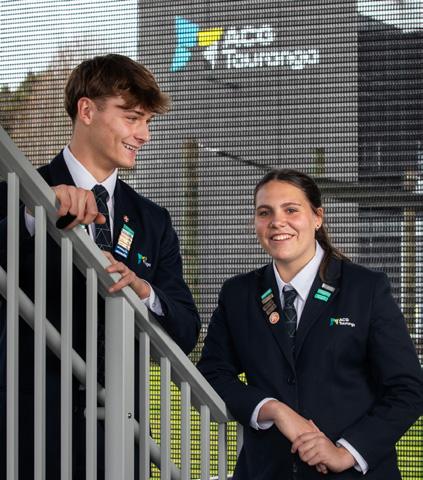
She speaks openly about the pressure of juggling schoolwork, training and her creative passions. “I put a lot of time into art. It’s something I’m really proud of.”
Carl’s story is slightly different. A self-proclaimed nonathlete when he first moved from Germany, he found his stride at ACG through the freedom to explore.
“I wasn’t into sport until I came here, but we had PE all the time, and I just gave things a try. One day I walked into the sports office and asked if I could join the hockey team and that was how I got started.”
Since then, Carl’s achievements have soared, topping the world in IGCSE PE and mentoring students through coaching and leadership roles. But he’s quick to credit the culture around him.
“Here, every teacher knows your name. They know how to help you grow.”
That close-knit feel is something both students agree on. Teachers are accessible and students are encouraged to take risks, whether in sport, the arts or academics. “It’s a school that doesn’t box you in,” says Ruby. “They support your passions, whatever they are.”
And for students just starting their ACG journey?
“Don’t stress the small stuff,” Ruby says with a smile. “You’re here to learn, and everyone’s got your back.”
Carl agrees: “Take every opportunity, because in a place like this, they’re everywhere.”
TAURANGA.ACGEDU.COM

Karl Puschmann catches up with Ali Campbell, the legendary UB 40 frontman, to talk band beginnings, protest and politics, their big hits, and why he can’t wait to bring the band’s reggae vibes back to the Bay.
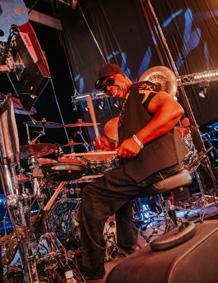

Ali Campbell is bleary-eyed but upbeat when UNO calls. It’s 8am in the UK, and the UB40 frontman only got home from a European festival tour yesterday.
“It’s all a bit mad here,” he jokes, before settling in for a breezy and candid chat about UB40, the influential reggae band he co-founded in 1978 and led to global success before inner band turbulence saw them splitting into two groups.
But before getting into the past, we need to talk about his future return to Aotearoa to headline music festival
Kingston Calling this Waitangi Weekend. The brand new reggae tour, with seven stops across the North Island, also features Katchafire, The Black Seeds and Corrella.
“I’m very, very happy to be coming back. It’s one of my favourite places,” he enthuses. “I’ve got a lot of friends there, a lot of Māori friends, so we always have a great time. It's a beautiful country.”
Then he pauses and says, “There are some weird things happening politically that I'm not too sure of. I've heard about the new Prime Minister… I've got to look at all that.”
You may think it’s unusual that a British music icon would know about or even be interested in our politics, but Ali has a long history with our country. He lived here for months when he was a judge on reality show New Zealand’s Got Talent back in 2012, his current tour manager is Māori and he’s even taken the time to read something that a lot of us haven’t; the Treaty of Waitangi.
“I lived in the middle of Auckland in the Viaduct. I know my way around,” he laughs. “And, of course, we've travelled extensively around both the North and the South Islands.”
Aotearoa’s always had a huge love for UB40. This stretches right back to the band’s cracking debut single,
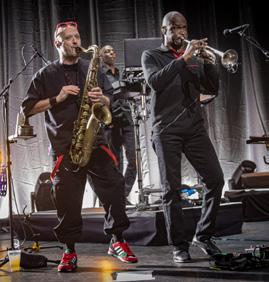
the politically charged deep reggae groove of Food For Thought, which topped our charts in 1980, to give the band their first-ever Number One hit. But when I ask why he thinks the band has resonated with us Kiwis so much, he’s modest, saying, “It’s not UB40 that people love. It's the music. People love reggae music.”
“Reggae is unifying, and it's still cool today,” he continues. “That's the important thing. It's still cool. People like us because we're an accessible reggae band.”
Ali grew up in South Birmingham, “on the wrong side of the tracks,” as he says, surrounded by the colourful sounds of the Caribbean and Asian cultures that were his neighbours. Unlike most of England at that time, it was a true multicultural environment, and one that impacted his world view.
“I was very lucky. I had Jamaican, Indian, West Indian and Arabic friends. I grew up amongst this melting pot. I loved it. It gave me a broad outlook on life. I wasn't prejudiced against anybody. Just fascists, I didn't like them. I’d go to a lot of anti-fascist demos and all that stuff. But we'd do it all together.”
Then grinning he adds, “And generally, the police were our enemies. Everybody else was friends.”
Aged 15 he went and saw Bob Marley and the Wailers in concert. It would be a transformative experience.
“It was like seeing the Messiah. I was totally blown away,” he says, a note of awe still resonating in his voice. “The year before that, I'd seen the Jackson 5. And that also blew me away because I was a mad Jackson 5 fan as well. Those two years basically showed my musical future to me. It was life-changing.”
After the show, he decided to form a band. But his plan had two big problems.
“We didn't know how to play. And we didn't have any
instruments, so we… acquired our instruments, let's say,” he laughs. “We were on the dole, so we couldn't go and buy them. We had to acquire them.”
With instruments “acquired”, all they had to do next was learn how to play them. To do this, they continually played the 12” version of Gregory Isaacs reggae hit, ‘Mr Know It All’, which features a dub breakdown in the middle, deconstructing each part and slowly working it out by playing along. Eventually, they got to the point where the record stopped and they could continue jamming.
“And that's how we learned to play. Six months later, we'd written our first album, which went on to sell eight million copies. It was ridiculous,” he grins.
That album was Signing Off, a groundbreaking and politically charged album of deep groove reggae whose music and message still resonate today.
“We followed Bob Marley's lead and other reggae artists like Lee Perry, who were political. We felt obliged if we got a platform to write something relevant. And we continue to do so.”
As an example, he cites ‘Burden of Shame’, which, when he sings it live now, has the lyrics “A baby in Gaza dies,” instead of “A boy in Soweto dies”.
“Depressingly, the songs are still as relevant as they were when we wrote them,” he sighs. “I've learned that you don't change anything by singing about it. It's as simple as that. All we're doing is voicing an opinion. It doesn't change anything. Things might have got worse even.”
As well as their political material, UB40 also explored the smoother, pop-leaning side of reggae, with their hugely popular Labour of Love albums, which saw them performing covers of the songs that had influenced them, like ‘Red Red Wine’, ‘The Way You Do the Things You Do’ and ‘Here I Am (Come and Take Me)’.
“We kept getting asked about why we played reggae, so we decided to do those albums,” he says, laughing that they’d been strongly advised against recording a covers album. Labour of Love would top global charts, including here, and go on to sell over 21 million copies.
“They’re the songs we used to hear on jukeboxes in cafés where we used to hang out as kids, playing pinball and running errands for prostitutes. We grew up listening to those songs. We loved them, and we knew that anybody else who got to hear them would love them as well. And we were right.”
After 24 years together, tensions within the band led to a split in 2008, with Ali moving on to front his own

group, UB40 featuring Ali Campbell, while the remaining members continued under the original name.
“When I left it was sad, but I couldn't carry on with them. They wouldn't let me promote my second solo album, which was called Running Free, ironically enough,” he says. “All I wanted was a month off to promote it, and they were steadfastly telling me I couldn't do it, so I walked. It’s all very silly and a very petty argument. But I was quite happy to leave and I've had a great time since. I've got my new band, who are all seasoned reggae players, and I love them. That's who I'm bringing to New Zealand. I think they’re the best band around.”
Which makes them a fitting choice to headline Kingston Calling, especially as it’s the first-ever concert to be played at The Bay Oval, in the heart of Mount Maunganui.
“I'm a little bit nervous,” Ali admits when asked how it feels to be christening this new venue. “But it's fun being the first to do anything really.”
I confess to taking a sneak peek at some of his recent setlists, which gets a chuckle when I say he’s bringing some absolute bangers that will keep all fans of UB40’s multifaceted career extremely satisfied.
“It's more or less a Greatest Hits set,” he smiles. “We're not self-indulgent. We know what the people want to hear, so that's what we do.”
Purchase tickets to Kingston Calling at TICKETEK.CO.NZ
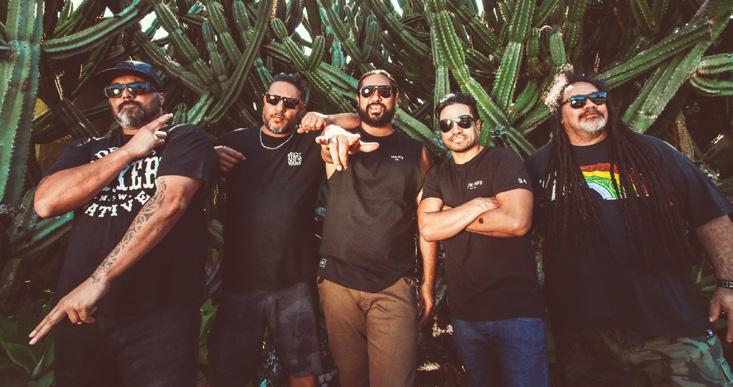
After calling the Waikato home all his life, Katchafire frontman Logan Bell recently moved to the Bay.
It was just two short years ago that Logan Bell, the Katchafire frontman, and his family made the move from the Waikato to Tauranga’s Welcome Bay. For his wife, who grew up in the Bay, it was a return to her roots, but for Logan it was a completely new experience. While he’d toured the world many times over with the band, the Waikato was the only place he’d ever called home.
“This is the first time I've moved away,” he admits. “We love it here. It's really awesome for our family. I love my house. I'm a total homebody. I don't go anywhere else”.
Then he laughs and says, “I’m nearly a real local now, bro. I almost don't need Google Maps to get around now.”
Already, he says, the relaxed lifestyle, beachtown vibes and the musical community here in the Bay has begun to influence his music.
“Your environment and your vibe always has a lot to do with what's coming out creatively. This morning I was in the studio with Tiki Taane. The other week, me, Laughton Kora, Fran Kora and Joel
from LAB got together and had a bit of a jam. It's just a nice community here and a nice vibe for me.”
Over their almost 30-year-long career, Katachfire has become one of Aotearoa’s most beloved reggae bands, first coming to national attention with their 2003 debut album Revival, before building an international audience through hits like ‘Frisk Me Down’, ‘Giddy Up’ and ‘Get Away’ and going on to tour with legendary reggae acts like The Wailers, Shaggy, Lauryn Hill, and, of course, UB40 who they’re sharing the stage with at Kingston Calling.
“We’re blessed to get the call up,” he smiles. “UB40 has always been a huge inspiration of ours, we kind of modeled our career off them. We’ve followed their example and their path in a lot of ways.”
While music styles come in and out of fashion, reggae’s popularity has never waned, especially here in Aotearoa. This, Logan says, is because reggae is the “people’s music”.
“It touches on matters of truth. And a lot of it's to do with the underdog truth, the sufferer's truth. We, as a nation, are born of that. We can identify with these stories, and we have our own to tell as well. That's why I think it's so easy for us to feel connected to reggae and feel a part of the music and the messages.”
Sir Gordon Tietjens is busy creating a new legacy off the field.
WORDS NICKY ADAMS / PHOTOS ALAN GIBSON
“
I built my teams based on traditional values, honesty, respect, humility... all the qualities you need in an individual. Then you had to create the culture. You want to pick players that are prepared to roll their sleeves up and work hard. Because that’s the Sevens game.”
While Sir Gordon Tietjens is clearly discussing the attributes needed in an elite sportsperson, there’s a direct alignment with the qualities needed to build a solid business. After an exceptional career spanning 22 years of coaching the All Black Sevens team (while simultaneously working at Bay Engineering Supplies), Sir Gordon left a legacy in this field that most New Zealanders would agree has been unparalleled. He has, however, more recently found his niche in another sports related arena. In 2019 he was approached to become brand ambassador for Legend Sportswear; he jumped at the challenge of this new opportunity but quickly realised that it was something to which he could add not just gravitas, but also his expertise. As with everything he does, rather than being a figure head, this is a ‘boots and all’ role.
The Legend Sportswear brand had only recently established itself in apparel when Sir Gordon came on board. It had already been successfully operating in garment manufacture since 2004 from its dedicated factory in Shanghai. When Mandy Qi and Looi Tan, the Australian owners, decided to move into sportswear, they first targeted the Pacific market, quickly making firm inroads into the sports circles of Australia and Fiji,

securing the apparel supply for the Newcastle Jets in Australia and the Fiji rugby league team to go to the World Cup. Coming on as brand ambassador, Sir Gordon straight away immersed himself in the role representing, speaking and promoting the brand. However, it wasn’t long before he saw that here was a gap in the New Zealand market, and one that Legend Sportswear could fill.
“I saw a real opportunity to build and grow our brand,” says Sir Gordon. “Two of us started up, my current office manager Amelia Tagica and myself, and straight away we contracted three sports clubs in the Bay of Plenty. It’s just grown from there. We’ve now got an office here, three graphic designers and three administrators.”
Initially concentrating on sportswear, Legend is now the choice for adults and children across multiple sports disciplines, plus school sports and even school uniforms.
For a person with a public persona, becoming the name and face of a brand is layered. Of course, the exposure is there from the offset, however, there is a definite responsibility to the public that the product lives up to the endorsement. There is no question in Sir Gordon’s mind that Legend Sportswear is more than worthy of having his name behind it. He knows that Legend’s core values align with his own trustworthy, affordable, high-quality and exceptional customer service.
“I see more than anything that you need to build relationships, and within that relationship you build
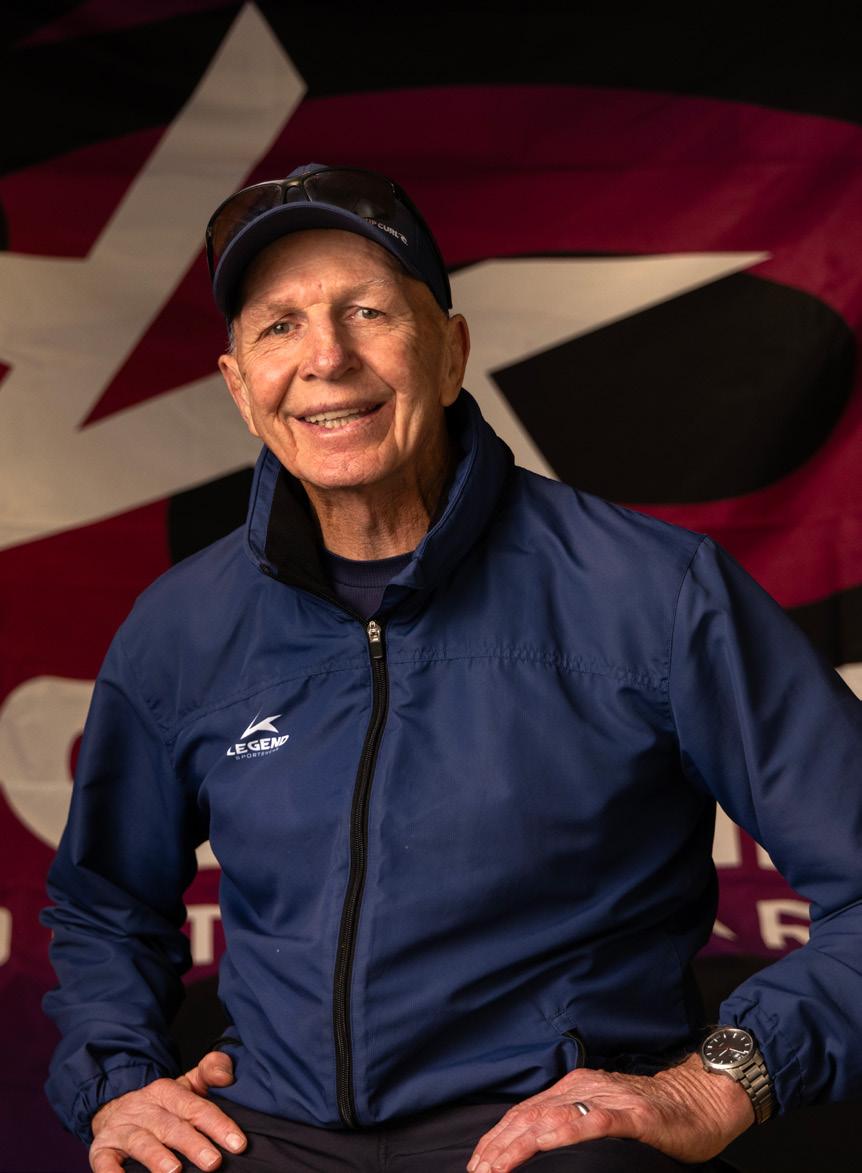
“YOU NEED TO BUILD RELATIONSHIPS, AND WITHIN THAT RELATIONSHIP YOU BUILD TRUST. THAT TO ME IS THE REAL KEY.”

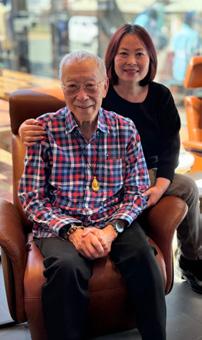



trust. That to me is the real key,” he explains. “That’s what it’s all about. If you want to build the brand you build it around being professional and being right up there and competing with the best… Being a new brand we’ve got to prove ourselves. That’s what we’ve been doing, and we’ve seen the growth.”
The quality is, of course, important. Without doubt there are aspects to the construction process that Sir Gordon is very proud sublimation (a technique where design is transferred onto the fabric) being one. Another is their ability to be flexible and make changes to the stock design, plus a high level of sustainability; something the company stands behind.
Of huge importance too is the process itself. “One of the real benefits is that we provide the opportunity for our customers to come in and sit with our graphics team to do their own designs… You might spend a couple of hours, but your designs are approved and set and away you go.”


Add to this the efficient rollout: “A big positive for us is the delivery. Our times are really good,” he adds. “We’re looking at four weeks, sometimes three, from the confirmation of the artwork being approved and the order being placed.”
I wonder how Sir Gordon’s background and expertise plays into the whole process. “I suppose because I’ve been immersed in sport, coaching the All Black Sevens team for 22 years, and I’ve been involved in the different apparel companies. I know the expectations of what an athlete wants and what’s good and what’s not. And I’m putting my name next to a product that excites an athlete, that they really want to wear and that’s good quality.”
As a home-grown Bay of Plenty native, Sir Gordon holds his authenticity and the value of personal service dear, which is why when the product arrives, it’s in a van being delivered by Sir Gordon himself.
LEGENDSPORTSWEAR.CO.NZ

HYBRID AND EV IN ONE VEHICLE • ALL WHEEL DRIVE PREMIUM INTERIOR • 1,100KM COMBINED RANGE* 169KM PURE ELECTRIC RANGE* • 395 KW COMBINED POWER • 0-100KM IN 4.9 SECONDS
Step into the new Omoda 9 and discover a world where every detail feels crafted just for you. From its supple leather seats with heating and ventilation to the immersive Sony sound system, panoramic sunroof, and soothing in-cabin fragrance, every journey becomes an experience. With cutting-edge tech like wireless Apple CarPlay & Android Auto, a head-up display, and a 360-degree camera, driving has never felt this refined.
TEST DRIVE TODAY

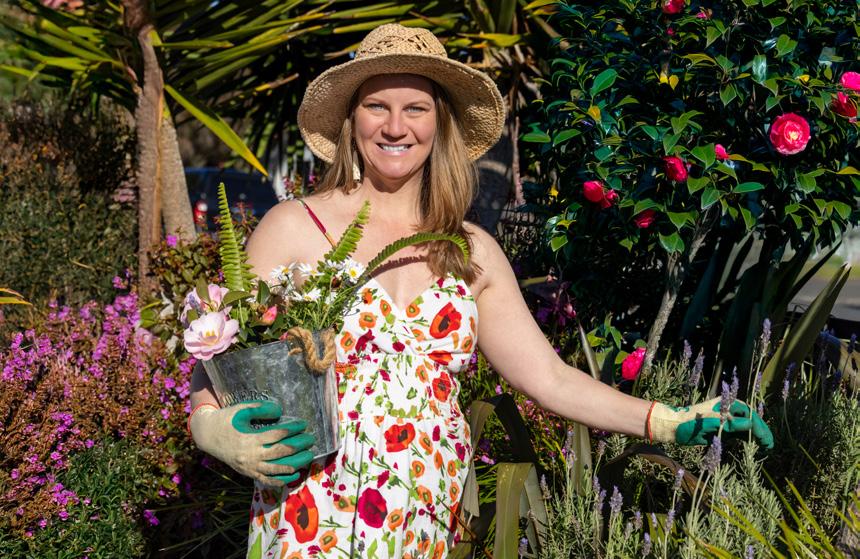
Melissa Cox has opened her lushPāpāmoa garden, to provide local brides with budget-friendly blooms that are all grown with love.
WORDS JO-MARIE BAKER / PHOTOS KATIE COX
Flowers add a glorious touch to weddings and other special occasions but can often set you back thousands of dollars.
That’s why avid gardener Melissa Cox is now offering an affordable alternative by launching a new business called Pāpāmoa Pick Your Own Flowers. Here you can help yourself to as many blooms and as much greenery as you can carry for just $100.
Dubbed ‘the little garden with a big heart’, Melissa wants to help those who cannot afford traditional florist services.
“I love florists but I remember how stressful it was to not only plan a wedding, but to pay for it. I’m filling a niche for people who don’t have the money in this economy but still want pretty flowers for their wedding, baby shower, birthday, tangi or corporate event.
“I firmly believe in community and helping each other out. I’m already growing flowers
in my garden, so if you need them, take them.”
Melissa also goes the extra mile to make flower picking a special experience by playing relaxing music and serving cold drinks and biscuits. “People just need to bring their own buckets. I’ll provide scissors and garden gloves,” she smiles.
Only two bookings per week are available between October and April, to ensure there’s enough flowers to go around. Brides-to-be can bring up to three helpers

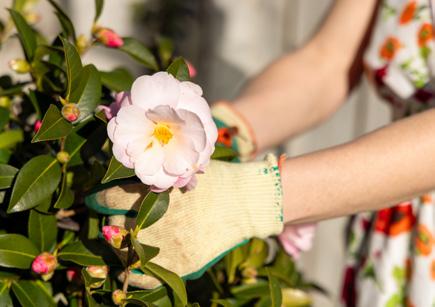
“ SEROTONIN, YOUR HAPPY HORMONE, INCREASES WHEN YOU’RE IN THE SUN, IN THE DIRT, AND CONNECTING WITH NATURE. ”
with them, and have a maxiumum of one hour to pick whatever they like from Melissa’s home garden.
“My favourite are lilies because they’re just like starbursts of happiness. Calla lilies were my wedding flower, and royal lilies are incredibly fragrant. I really love ferns too, so I have several kinds growing here. I love everything that looks whimsical.”
The scent of lavender greets everyone who visits this standard residential-sized garden. But in spring and summer it’s bursting with dahlias, hydrangeas, carpet and long-stemmed roses, gerberas, gladioli, statice (sea lavender), African daisies, flowering herbs and every shade of green foliage imaginable. “I have lots of random wildflowers everywhere too. I never know where they’re going to pop up!”
People are welcome to visit in autumn and winter also, where for a discounted price of $75, they can pick any greenery they like along with long-stem lavender, African daisies, pink camellias and flowering jade.
While most people are happy to assemble their own bouquets, vases or table arrangements at home, Melissa can whip up a bridal bouquet for $50 or a bridesmaid bouquet for $25 if floral arranging isn’t your forte.
“My mum was an interior decorator and a dried flower arranger who ran her own gift shop. On the side she also did fresh flower bouquets to order, so she taught me how to do a good job of arranging a bouquet.”
Melissa can also source affordable supplementary blooms or specific colours that people might require from other local growers. “There is a wonderful dahlia grower in Tauriko who I partner with. For $25 I can have a bunch of high-end dahlias waiting here for you in whatever size or colour you want, depending on the season.”
Melissa developed her garden from scratch during Covid lockdowns after buying her Pāpāmoa home in 2020.
“I garden for therapy. It’s proven to be good for you. Serotonin, your happy hormone,
increases when you’re in the sun, in the dirt, and connecting with nature.”
Melissa’s secret is to water regularly and feed the garden heavily with fertiliser. She never uses pesticides, instead spraying plants with neem oil and apple cider vinegar to keep bugs and diseases at bay.
“Unless it’s a drought, things will flower. Because when you cut them back, they want to flower more. I grow a lot from seed and from cuttings from friends.
I’m installing new flower beds at the moment because of the interest in this business. I’m planning to put in more hydrangea really cute little ones that are white. And more wildflowers because they reseed themselves.”
Melissa’s goal isn’t to make money from her new business. “The only reason I charge is to help pay for my fertiliser. I hope this garden can help a lot of people.”
PAPAMOA.FLOWERS
UNO editor Hayley Barnett sees Rotorua in a beautiful new light at Mārama, Te Puia’s unforgettable geothermal nighttime experience.
PHOTOS GRAEME MURRAY + SUPPLIED
As dusk slowly settles over the geothermal valley at Te Puia in Rotorua, the day’s steam softening in the low bask of the sun, the magic of this place becomes more and more apparent. Beams of light begin to burst through the haze while we sit in Pātaka Kai, Te Puia’s renowned restaurant, enjoying our dinner on the heated deck.
Laser lighting has been meticulously set up across the 70-hectare site, to showcase more than 500 geothermal features, many of which are usually only accessible during the day.
On the launch night of the Mārama Geyser Light Trail, the hush across the valley is about to blossom into an immersive interplay of light and music that will transform Te Puia from darkness into a world of light. But, I soon discover, this is more than a light show; it’s an experience which showcases whakapapa and years of culture.
“Everything we do here is to uplift te ahurea Māori,” says special events manager Reanne Poutama. “With

Mārama, Te Puia wanted to create something magical that would reflect our whenua and our stories in a way we’ve never done before.”
It’s clear from the outset that Te Puia has achieved this lofty goal. From the moment you step through the entrance to the 1.5km trail, you’re guided by sound and story. Setting the tone is musician Maisey Rika’s ambient waiata. Her otherworldly voice follows us as we head down the path.
On this night, we’re lucky enough to witness Maisey herself singing atop a point that stands high above the valley, overlooking the geysers and geothermal activity, the lights flickering through the steam behind her. The effect is ethereal and spine tingling.
“Maisey’s songs are the soundscape for the whole experience,” explains Reanne. “We’ve tried to partner our lighting in a way that amplifies each waiata.”
The 10 scenes have been designed to reflect the natural environment, which is infused with Māori storytelling. The trail winds through glowing Māori artworks, bubbling mud and towering trees. At every bend, the valley becomes a theatre. Laser lights ripple like
currents above Puarenga Stream, while geothermal steam is lit from within, mimicking ancestral breath.
One of the most memorable scenes evokes Tangaroa, atua of the sea, his story told through undulating blue lasers and swelling sound. Standing there, it almost seems as if the sea has risen into the valley.
Midway, the geothermal terrace offers a natural pause. Beneath the steam, natural hot rock seats offer warmth and a moment to breathe, with Pōhutu Geyser in the distance.
Self-paced and child friendly, the walk is around 60 minutes, taking into account all the stops and meanderings. The trail features hosts at certain points along the way, which allows visitors to move at their own pace.

Family accessibility was always part of the vision.
“The inspiration first was to provide something for Rotorua at nighttime for families,” she explains. “But we also hope that it’s accessible to everyone, including locals, internationals and families. It’s priced differently to our usual offerings because we really wanted whānau to be able to come and enjoy it.”
Along the trail are a number of artworks created by Māori artists, including glowing light boxes designed by students from Te Takapū o Rotowhio (the National Stone and Bone Carving School) at the on-site New Zealand Māori Arts and Crafts Institute.
“They’ve designed light boxes that tell our traditional stories,” says Reanne. “We’re weaving in our people’s talents and creative flair.”
That includes Mikaere, a Te Puia guide who created a mural of the story of Mārama using glow-in-the-dark and metallic paints that come alive under UV light.
“TE PUIA WANTED TO CREATE SOMETHING MAGICAL THAT WOULD REFLECT OUR WHENUA AND OUR STORIES IN A WAY WE’VE NEVER DONE BEFORE.”

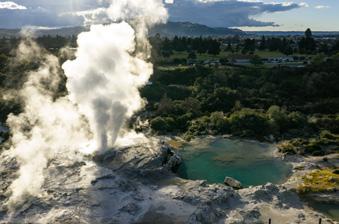
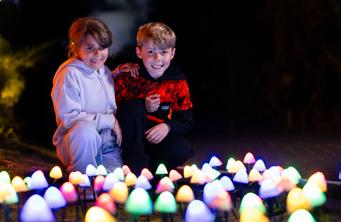
“He’s amazing,” Reanne says proudly. “He would never usually get to showcase this kind of work, and now it’s part of the trail.”
Another highlight comes near the end of the walk, towards Pikirangi Village, where a forest tunnel glimmers and soft lasers rain down like an aurora, creating a canopy of light. As we gaze upward, everyone around us slows their steps. This is the magic of Mārama. Resting in the final notes of Maisey Rika’s voice, we look out over the valley under real stars. In this moment, it’s hard not to feel connected to te ao Māori. It’s a reminder of how deeply this experience is rooted in wairua.
While Te Puia’s daytime experiences have long celebrated Māori culture through kapa haka and guided storytelling, Mārama is something altogether different.
“This is something very new here,” Reanne says.
“We’re usually quite traditional… This is us mixing those traditional elements with modernity. And even if you come during the day, you won’t see any of this. It’s exclusive to Mārama.”
Having grown up in Rotorua, I know this area well, but the whole nighttime experience felt like seeing the valley for the first time. Mārama feels meaningful. It’s a walk through the unseen stories of the land, guided by light and music.
Reanne reflects: “It’s a way to feel connected to our place, to our people and our stories.”
Mārama runs until April 2026, with entry from 7:30pm (Sept–Nov) and 8:30pm (Dec–April). See the website for the Matariki 2026 relaunch. Tickets are $49 for adults and $25 for children.
TEPUIA.COM




“MĀRAMA FEELS MEANINGFUL. IT’S A WALK THROUGH THE UNSEEN STORIES OF THE LAND, GUIDED BY LIGHT AND MUSIC.”


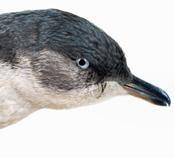

Moa bones, eagle claws and ancient wonders are sparking young minds in the Bay.
WORDS JO-MARIE BAKER






Peter Jackson’s Jurassic Park-like plan to resurrect the moa is still a long way from reality but Tauranga students can literally get their hands on the giant bird’s bones, a replica moa egg and even a lifesize Haast’s Eagle claw right now.
The objects are among the most popular items in Tauranga Museum’s Hands On Collection available for local teachers to borrow, free of charge.
“We have a set of real moa bones that were found in Te Puke and they’re some of our most popular objects,” explains museum educator Megan Hoskin. “We have 14 bones in all – three huge leg bones, ribs and vertebrae. It’s incredible that children can have these in their classroom and are allowed to handle them.”
The recent addition of a replica Haast's Eagle claw (which was big and powerful enough to kill an adult moa) is also grabbing attention. “The Haast’s Eagle is something children just have an innate curiosity about. We have roughly 250 objects in our education collection that teachers can borrow. It gives a zing to a classroom and sparks excitement, enthusiasm and curiosity. If a class is learning about space, for example, we have meteorites that are four and a half billion years old. Allowing children to hold objects and pass them around is a great way to hook them into a topic.”
The collection is available to schools within Tauranga City Council’s boundary. Teachers simply book objects online and Tauranga Museum will deliver and collect them. “It could not be an easier service for busy teachers.”
Megan, a former primary school teacher,
is also available to run classroom lessons on topics such as The Elms, the Battle of Pukehinahina Gate Pa, the Rena disaster, kiwi, penguins and Tauranga-related aspects of World War One. She believes it’s more important than ever to put physical objects in our children’s hands to help balance learning off digital screens.
While two generations of children have grown up without a museum in Tauranga, the wait is almost over. The city’s new museum will open in 2028 and will feature two purpose-built education spaces along with a Discovery Centre that will focus on Tauranga’s marine environment.
“It’s going to be all about the ocean, islands and marine life we have here in Tauranga, so very much a science and environmental Discovery Centre. It will be a very exciting, interactive play space.”
HANDSONTAURANGA.CO.NZ
Get your hands on this season’s standout reads.

By Steve Braunias
Allen & Unwin
Polkinghorne is Steve Braunias at his sharpest. In this gripping, unsettling account of the murder case that shocked New Zealand, the reader is given exclusive access to the death of Pauline Hanna and the trial of her husband, eye surgeon Dr Philip Polkinghorne. This is true crime as opera: intimate and unforgettable. A must-read for those who followed the headlines.

By Gina Butson
Allen & Unwin
A luminous debut exploring love and the long road to forgiveness. After fleeing New Zealand, Thea seeks escape in Guatemala’s backpacker scene, only to be confronted by grief once again in Tasmania. Set against the global financial crisis and later the pandemic, this is a richly atmospheric story of emotional reckoning. With incredible characters and vivid settings, Butson’s novel will captivate fans of Josie Shapiro’s Everything is Beautiful and Everything Hurts

By Jared Savage
HarperCollins NZ
Underworld is the third true-crime book from award-winning Tauranga journalist Jared Savage. From international drug syndicates to deadly gang rivalries, Savage lifts the lid on New Zealand’s organised crime networks and the years-long investigations trying to stop them. These gripping stories blur the line between order and chaos, revealing a criminal underworld few Kiwis ever see. Following Gangland and Gangster’s Paradise, this is essential reading for true-crime fans.

By James Laughlin
Harper Collins NZ
James Laughlin’s Habits of High Performers is a compelling and practical guide for anyone striving to level up in life and work. Drawing from years of coaching top achievers in sport, business and politics, the Christchurch-based strategist distills 27 powerful principles into an accessible, no-fluff blueprint for lasting success. With endorsements from leaders like Sir John Key and All Black legend Samuel Whitelock, this book goes beyond motivation and shows us how mastering the daily, consistent habits fuel extraordinary results. If you’re ready to ditch the shortcuts and do the work, this is your roadmap.

By Doug Gold Allen
and Unwin
Just streets away from Anne Frank’s hiding place, young Elli lives in constant fear. Her father has been executed, her mother is on the run, and her own life is in peril. Hidden above a ceiling by brave resistance couple Frits and Jo Hakkens, Elli’s fate hangs by a thread. As the Gestapo close in, the couple risk everything to protect her. A tale of sacrifice and resistance.
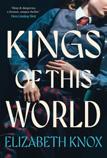
By Elizabeth Knox Allen & Unwin
Vex has a dangerous gift: she can persuade anyone to do what she wants. At her new school, she finally meets others like her, but five weeks in, she and her new friends are kidnapped and chained in an abandoned factory. As tensions rise and secrets surface, Vex must unravel why they were taken, and why their captors seem obsessed with her. This is a gripping story of mind games and the price of power.
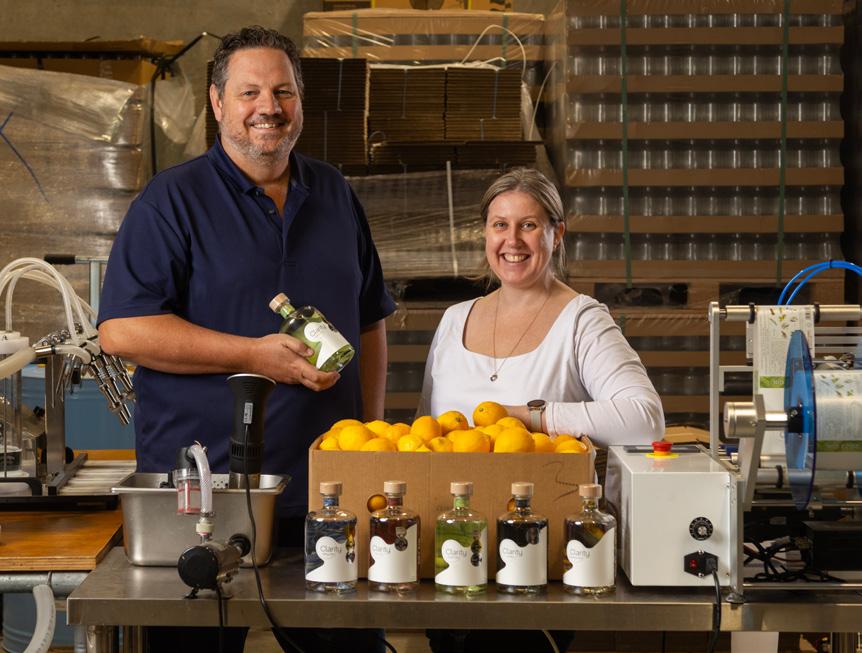
How three Bay distilleries are redefining New Zealand gin.
PHOTOS ALAN GIBSON + ERIN CAVE + SUPPLIED
It might seem unlikely, but behind the roller doors of a nondescript unit in Tauriko’s commercial estate, two friends are crafting one of the world’s best gins. Just 25 minutes away in another small space in Ōmokoroa, a similar story is unfolding as two friends blend botanicals to bring their award-winning gin to life. And just over the hill, in Matahui, gin drinkers can bottle their own creation and become award winners themselves.
Far from being on the rocks, gin is obviously continuing its recent resurgence. The clear spirit has gained popularity thanks to its clean herbal aromatics and botanical complexity. Because gin can be produced relatively quickly, small-batch makers have embraced it as a space for creativity, developing unique signature styles and exciting flavour profiles. Juniper remains the foundation, of course, but now it’s not unusual to find exotic ingredients like mānuka, licorice, or Szechuan pepper in the mix, adding bold new twists to traditional

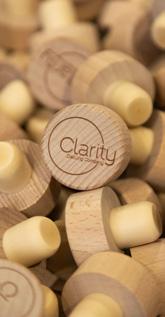
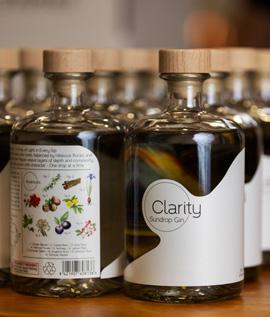


flavours. Small independent distilleries in the Bay of Plenty are at the forefront of the gin revolution here in Aotearoa.
Clarity Distilling Company, Bay Distillery and Matahui Distillery are three local producers who are lovingly crafting world-class gin, right here in the Bay. While their approaches to gin differ, the three small batch distilleries share plenty in common. Each is run by a pair of hands-on founders who manage every part of the process themselves, from developing recipes through to distilling, bottling and branding.

Their gin may be internationally recognised now, winning back-to-back golds earlier this year, but Clarity started as a hobby for George White only a couple of years ago. It was something he’d do in his downtime away from the childcare centre he and friend Stephanie Downer had started.
“I’ve always been a guy that likes to cook at home and try recipes and create flavours,” George says. “Gin is open.
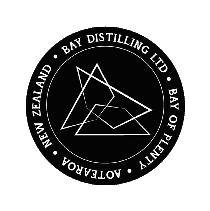

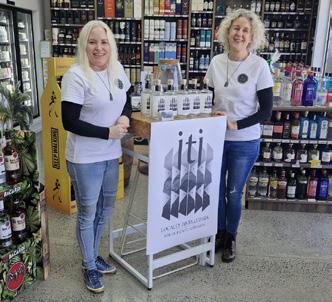
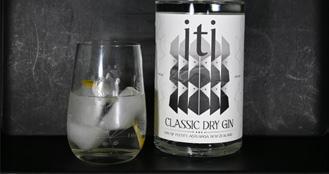

There are no restrictions. You can do whatever you want. You can put anything into that still and create any flavour you want.”
It was George’s love of cooking that would become Clarity’s secret ingredient. Rather than traditional methods, which see all the botanicals distilled together, the pair instead steep each ingredient individually.
“When you make a gin, it’s like cooking, except you’re dealing with botanicals,” George explains. “When you cook a stew, you don’t throw your meat, herbs and everything in and shut the lid. You layer it. So why would making gin be any different to that?”
This meticulous process of distilling each element separately allows them to exactly control how much flavour is extracted and then added to their blend.
“We get the best out of every single botanical,” George smiles. “Because all that’s in our gin is the botanicals. That's where all of the flavour comes from.”
It’s proven to be a winning formula. In May, their Clarity Navy Gin was awarded ‘Spirit of the Year New Zealand’ at the prestigious 2025 London Spirits Competition. They also have multiple Double Golds from San Francisco, and took home ‘Best London Dry’ and ‘Best Navy Strength’ at the NZ Spirits Awards and NZ Small Batch Gin Awards this year.
Just as much care has gone into Clarity’s look, with Stephanie handpainting the label’s distinctive artwork and even illustrating the ingredient list.
“That’s part of our ethos,” Stephanie says. “Essentially, if it's not on the bottle, it's not in the bottle.”
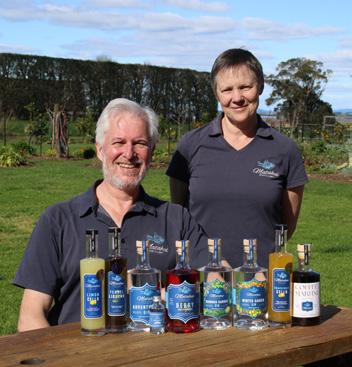
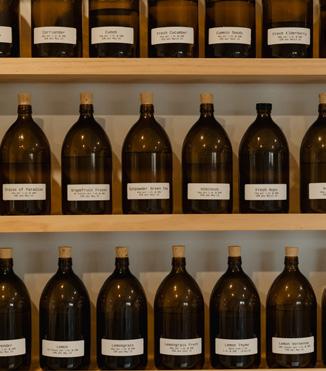
The operation has quickly scaled up, now with six distillers and upgraded bottling systems. But George says they don’t want to grow for growth’s sake.
“We want to be a household gin, not a special occasion gin,” he says. “We want to be affordable. If people are going to buy gin, we'd much rather let them buy a New Zealand gin.”
It’s a similar story over at Bay Distilling, where gin makers Karen Hawkins and Denise Roscoe launched their gin after running a coffee caravan in Ōmokoroa.
“We both like coffee, so we had a coffee business,” Karen says. “And then we sold that and thought, ‘what else do we like?’ Well, we quite like gin…”
They spent a year in the garage perfecting their dry gin recipe, encouraging friends to give honest feedback, though it was mostly glowing.
“We like a classic dry gin and really wanted to get that right,” Denise says.
Their gin iti recently took silver at the NZ Small Batch Gin Awards. Now in a commercial space, they handle everything from distilling to packing themselves, with a little taste-testing help from Karen’s husband. Their branding is rooted in the local landscape, with a label designed by Karen’s daughter. Meanwhile, just outside of Tauranga, Matahui Distillery offers something unique: a chance for people to create their own gin, and potentially win awards for it.
“Late last year, people who had come through our gin lab were asking for feedback on their creations,” says co-founder Paul Horak. “That’s where the Matahui Gin Lab Awards came from. It’s a bit of fun, but with proper base testing and scoring of their recipes.”
The gins are created through blending pre-distilled botanical spirits, a process Paul says is used by commercial distillers like Hendrick’s. “It’s actually the best way to develop a recipe,” he explains. “You can quickly see what works, then adjust quantities until it’s perfect.”
Although their signature Adventurers Gin earned silver at the NZ Spirits Awards, the focus at Matahui is on the customer experience. “We’re not aiming to become a big factory,” Paul says. “Selling direct allows us to stay small, and our workshops help fund our own small-batch experimentation.”
The experience has evolved too. Originally participants distilled on-site, but council restrictions prompted a shift in method. “In hindsight, it pushed us to improve,” Paul says. “Now we focus on flavour people still walk away with a gin they designed, but the quality is even better.”
They’re also working on home-blending kits, so people can recreate the experience themselves. “It’s something we want to launch in time for summer,” he adds.
While many come to Matahui for birthdays or hens’ dos, Paul says it’s just as often individuals with a curiosity for gin.
“New Zealanders are still discovering gin. Every gin is unique, and that surprises a lot of people. But once they learn more about it, they’re hooked.”
These three small-batch distilleries are proving that success in the competitive spirits market doesn’t require big investors or a corporate machine. Instead, it’s passion, ambition and a classic Kiwi ‘can-do’ attitude that are putting them, and the Bay, on the map.
Just a Mum’s Anna Cameron has been cooking up a storm for her new book, featuring an indulgent collection of family-friendly favourites. Here we serve up a few of the hits.

A timeless classic, traditionally made with very thin slices of apple in a rum or almond infused batter. My version is quick and easy, perfect for afternoon tea or as a dessert served with yoghurt.
MAKES 12 | PREP TIME 30 MINUTES + COOLING | COOKING TIME 35+ MINUTES
INGREDIENTS
4 large apples, peeled and cored
1 cup plain white flour
1 tsp baking powder
¼ tsp salt
115g butter, at room temperature
2/3 cup white sugar, plus extra to sprinkle
2 eggs
2 tbsp milk
1 tsp vanilla essence
1 tsp almond essence
Icing sugar to dust (optional)
METHOD
Preheat the oven to 175°C, positioning an oven rack in the centre. Grease the base and sides of a 22 cm-round springform or loose-bottomed cake tin and line it with baking paper.
Cut the apples into 1 cm pieces (you should have about 3 cups) and set aside.
In a small bowl, whisk together the flour, baking powder and salt. Set aside.
In a stand mixer fitted with a paddle attachment, cream the butter and sugar for 4 minutes until light and fluffy.
Add the eggs one at a time, mixing well between additions, then beat in the milk, vanilla and almond essence (see notes). The mixture may look a little curdled at this stage.
Gently fold in the flour mixture until no flour is visible then fold the apples into the batter until evenly distributed.
Spoon the thick batter into the prepared tin and smooth the top. Sprinkle an extra 2 tablespoons of sugar evenly over the top.
Bake for 35 minutes, or until the top springs back to the touch and a skewer inserted into the centre comes out clean. If needed, continue to bake, checking every 3–5 minutes, until the cake is fully baked and golden. If the top of the cake is becoming too golden brown, loosely cover in foil until baked through.
Allow to cool in the tin for 20 minutes, then carefully transfer to a wire rack.
Serve warm or cold, dusted with icing sugar if desired — it’s lovely with whipped cream or yoghurt.
This cake can be stored at room temperature, loosely covered with a cake cover or tented foil, for 1–2 days, or in an airtight container with a paper towel to absorb moisture for 3–4 days.

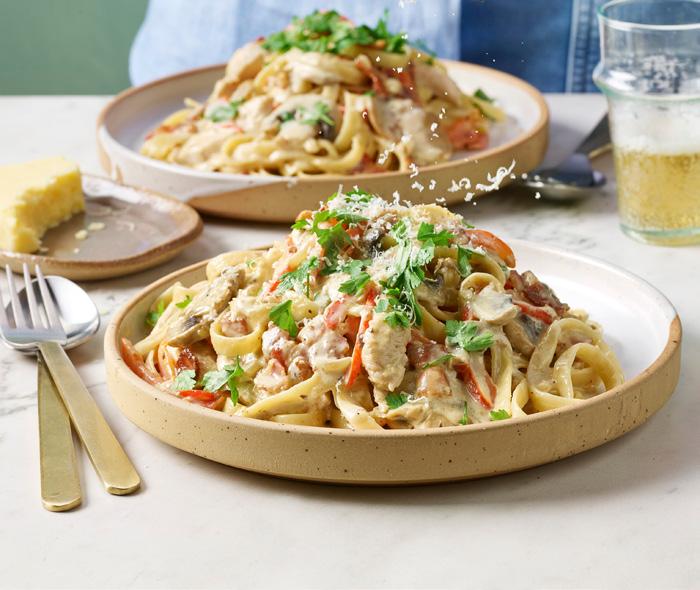
This oh-so indulgent pasta dish is a quick midweek meal to make when you feel like something a little bit fancy.
SERVES 4 | PREP TIME 15 MINUTES | COOKING TIME 20 MINUTES
INGREDIENTS
300g fettuccine
45g butter
7 rashers streaky bacon, diced
300g skinless, boneless chicken breast, thinly sliced
½ onion, finely diced
2 cloves garlic, minced
6–8 button mushrooms, cleaned and sliced
1¼ cups cream
½ cup parmesan, finely grated
1 red capsicum, finely sliced
METHOD
Bring 3 litres of salted water to a boil in a large saucepan. Add the fettuccine and cook for 2 minutes less than the packet instructions. Drain, reserving ¾ cup of the cooking water. Set aside.
While the pasta cooks, heat 15g of the butter in a large frying pan. Fry the bacon until crispy, then drain on a paper towel.
In the same pan, sear the chicken slices in the bacon fat for a few minutes on each side until just cooked. Set aside on a plate with the bacon and cover with foil.
Wipe the frying pan with a paper towel,
then melt the remaining 30g butter over a medium heat. Add the onion and garlic and cook for 2 minutes until translucent. Add the mushrooms and cook for about 4 minutes until softened and well browned.
Stir in the reserved pasta water and the cream, parmesan and capsicum. Bring to a gentle boil and simmer for 2 minutes.
Add the drained fettuccine to the sauce, using tongs to toss and coat thoroughly. Fold in the bacon and chicken and heat through for a further 2 minutes until the chicken is cooked.
Serve immediately in bowls, garnished with parmesan and parsley if desired.
This salad looks stunning on the table. I love the combination of flavours and textures the crunch of the chickpeas works beautifully with the softly spiced cauliflower. It’s definitely one to try.
SERVES 6+ | PREP TIME 30 MINUTES | COOKING TIME 50 MINUTES
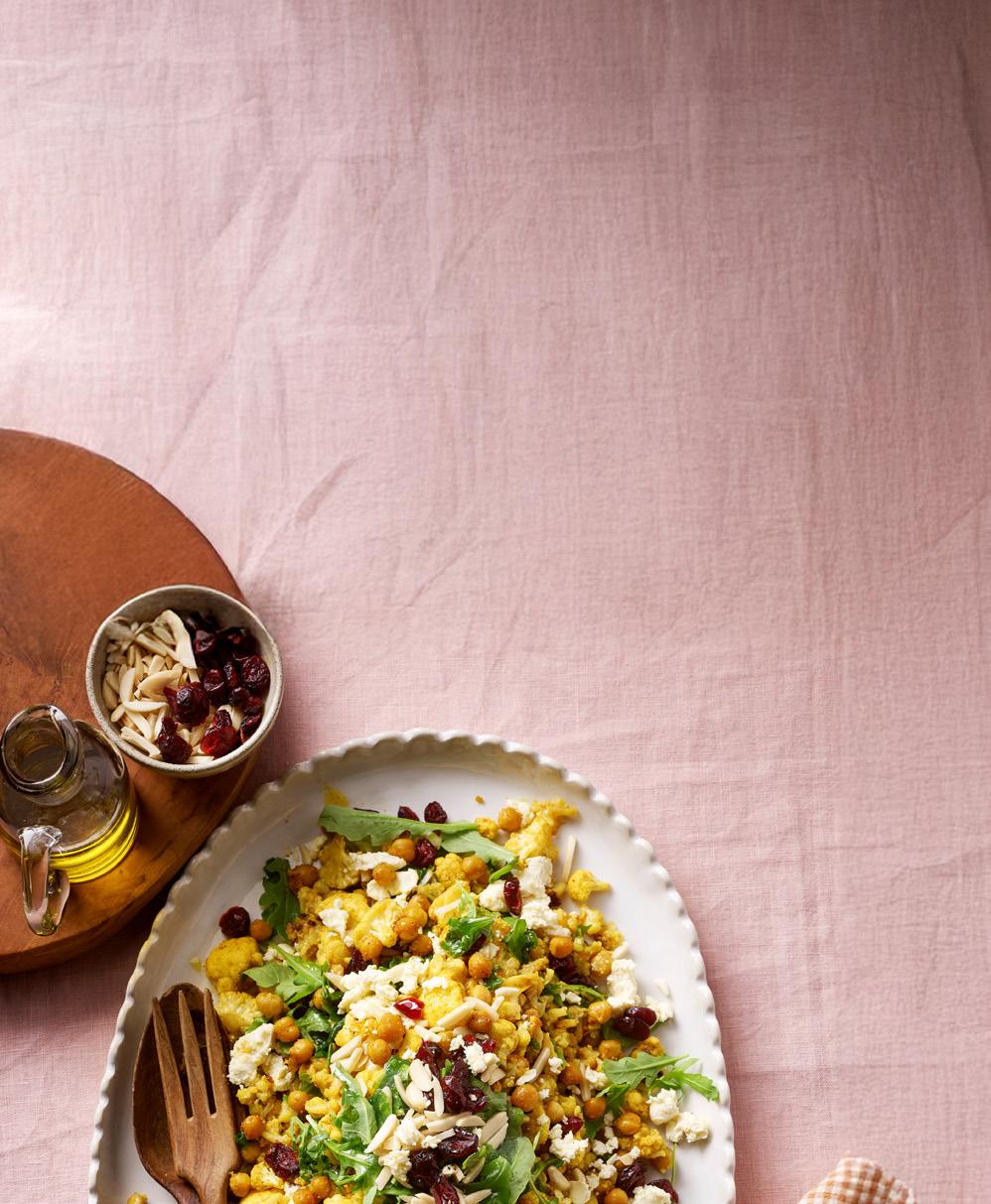
INGREDIENTS
1 head cauliflower
420g can chickpeas
1 tsp turmeric
1 tsp ground coriander
½ tsp paprika
½ tsp onion powder
½ tsp garlic powder
½ tsp salt
¼ tsp pepper
¼ cup olive oil
Dressing:
¼ cup olive oil
2 tbsp lemon juice
2 tbsp honey
1 tbsp lemon zest, finely grated
½ tsp ground cumin
Pinch salt and pepper
To Serve:
Handful of rocket, torn
1/3 cup dried cranberries
¼ cup slivered almonds
70g feta, crumbled
10–12 fresh mint or coriander
METHOD
Preheat the oven to 200°C. Lightly spray a large roasting dish with oil.
Cut the cauliflower into small florets you should have about 5 cups. Place in a large bowl.
Rinse and drain the chickpeas, then pat them dry on a clean tea towel, then add them to the bowl.
Sprinkle in the turmeric, coriander, paprika, onion powder, garlic powder, salt and pepper and stir
through. Drizzle with the oil and toss to coat evenly.
Spread out on the prepared tray and roast for 20 minutes. Stir, then continue roasting, gently stirring every 10 minutes, for a further 30 minutes, or until the chickpeas are crisp and the cauliflower is tender and golden but holding its shape. Set aside to cool slightly.
To make the dressing, whisk together all the ingredients in a small bowl.
To serve, transfer the cooled cauliflower and chickpeas to a large bowl or serving platter. Add the rocket and dressing and toss gently. Fold in the cranberries, almonds, feta and torn mint or coriander leaves.
Enjoy warm or cold. Store covered in the fridge for up to 2 days.
Crisp on the outside, soft and chewy in the centre, these cookies are easy to make, and you can freeze the dough for fresh cookies any time you desire. There’s nothing quite like the smell of freshly made cookies.
MAKES 26 | PREP TIME 30 MINUTES + CHILLING + COOLING | COOK TIME 15–18 MINUTES

170g butter
2 cups plain white flour
¾ tsp baking soda
½ tsp salt
1 packed cup brown sugar
½ cup white sugar
1 egg
1 egg yolk
1 tbsp vanilla essence
1½ cups milk or dark chocolate drops, chips or chunks
Place the butter in a small bowl, cover and microwave in 30-second bursts until melted. Set aside to cool slightly.
In a bowl, stir together the flour, baking soda and salt. Set aside.
In a stand mixer with a paddle attachment, beat the melted butter with the brown sugar and white sugar on a medium speed for 2 minutes until INGREDIENTS
well combined. Add the egg, egg yolk and vanilla and beat for 3 minutes until light and creamy.
Add the flour mixture and mix lightly until just combined. Then use a wooden spatula to gently fold in the chocolate.
Refrigerate the dough for at least 1 hour, or preferably overnight. When ready to bake, let the dough stand at room temperature for 20 minutes. Preheat the oven to 165°C fan-forced, positioning one rack in the upper third of the oven and another in the lower third. Line two large baking trays with baking paper.
Roll 2 tbsp-sized scoops of dough into balls and arrange 5cm apart on the prepared trays. You may need to cook 3–4 batches.
Bake for 15–18 minutes, or until the edges are turning golden brown and
the tops are mostly set (the larger the cookies, the longer they will take to cook).
Allow to cool completely on the trays they will firm up as they cool.
Store in an airtight container for up to 5 days.

Images and text from Just a Mum ’s Kitchen by Anna Cameron, photography by Melanie Jenkins (Flash Studios), published by Allen & Unwin Aotearoa New Zealand. RRP$45.



Stacey Jones explores how Bay of Plenty’s food scene is transforming lives, from top restaurants to grassroots kai.
PHOTOS ILK PHOTOGRAPHY + SUPPLIED
As UNO’s food columnist, I’ve loved writing about the culinary shift in the Bay of Plenty’s food culture over the past five years, and I’m proud to have played a small part in that journey through helping to create Flavours of Plenty a movement led by Tourism Bay of Plenty to put our region on the culinary map.
So you can imagine my delight when Solera picked up two hats at the Good Food Awards last month, the first time a Bay of Plenty restaurant has achieved this. It’s a milestone that shows our dining scene is firmly on the radar, with exciting things to come.
But our region’s food story isn’t just written in New Zealand’s best restaurants. It’s also unfolding in community kitchens, school lunch vans, and oyster farms, thanks to three wāhine who are turning kai into connection, opportunity and change.
Take Renee Hanna, general manager of Good Neighbour. Every week her team rescues thousands of kilos of surplus food that would otherwise go to landfill. But for Renee, the real magic is what happens around the food. “We’re about neighbours helping neighbours,” she says. “The meals, the firewood, the gardens they’re all vehicles for connection.” She tells me about a woman who had come
home from hospital without a working hot shower, with her backyard caving in and no meals in the fridge. “We sent 28 people to rebuild her section, cooked three weeks of meals in her kitchen, and filled her freezer. But more than that, we gave her community back.”
That same spirit of connection runs through The Daily in Te Puke, where general manager Nina Vergnes is powering their award-winning café into a hub of resilience. “Some people just need a meal, others need a place to belong,” Nina explains. “Food lets us do both at once.” Through their School Food Loop, volunteers collect fruit that would otherwise be wasted and deliver it directly to schools. “Seeing the kids’ faces light up when the van arrives that’s why we do this,” Nina says with a smile. Alongside affordable frozen meals and corporate catering, the team have been hosting a revolving pop-up on Friday nights traversing the globe with themes of South America, Matariki and Southeast Asia. Nina explains, “Every pop-up brings new faces to the table. People come for the food, but they leave with conversations, connections and a sense that they’re part of something bigger.”
On the eastern edge of the Bay, that ripple stretches out into Ōhiwa Harbour where Wini Geddes is co-director of Tio Ōhiwa. When a Māori tono collective purchased the oyster farm, the goal was both ambitious and deeply rooted:
regenerate shellfish beds, create aquaculture training for rangatahi, and open up the harbour as a destination.
“The tourism part was meant to be five years away,” Wini laughs, “but we did it in five weeks.” Their Shuckin’ Cruise tours invite visitors to wade into the water, learn how oysters are farmed, and taste them fresh from the sea. Behind the fun is a serious commitment to pathways for youth. “We want our young people to see a future here to know they can learn, earn, and thrive in their own backyard.”
That sense of community celebration is also what inspired the team to launch the Ōhiwa Oyster Festival, now in its second year. I was lucky enough to attend this year’s event, and it was a brilliant showcase of the Bay’s best a harbour buzzing with Māori music, kai and locals coming together to celebrate their precious taonga of the sea.
These women are proof that food in the Bay of Plenty is about more than what’s on the plate. It’s about using food as a vehicle to create positive change in our community by nourishing hearts and bellies. And the best part is there’s something all of us can do to help. Buy a coffee from The Daily or attend one of their pop-up restaurant nights, join a Good Neighbour working bee or attend one of their fundraisers, book a Shuckin’ Cruise with Tio Ōhiwa or attend their annual oyster fest. Every small action serves up a giant dollop of hope.
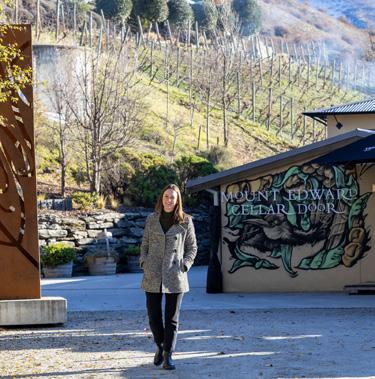
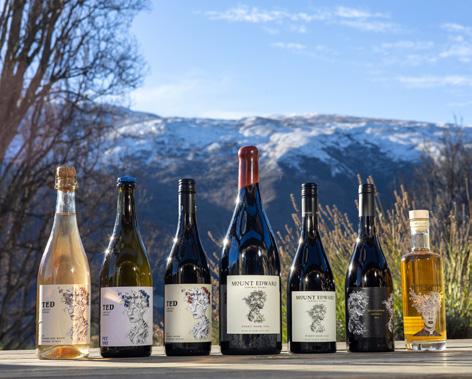
It flies beneath the radar on the great Otago wine trails, but there’s something about the organic, wild-fermenting wilderness of Mount Edward that deserves a closer look. You won’t regret it, as UNO columnist Jess Easton writes.
Sometimes you sample a wine that’s so weird, you just have to know more.
I’m still not even sure if I like the Mount Edward O2 Chenin, to be honest, but that may not be the point.
Instead, the aged and oxidised, Sherry-like dryness and blunt aroma was magnificently, boldly different, and a trip to the understated cellar door, in the midst of the Gibbston Valley between Cromwell and Arrowtown, became a priority.
Intrigue and innovation are certainly not in short supply at Mount Edward. While the majority of production across five vineyards at three sites — Gibbston, Pisa and Bannockburn — comprises very memorable Pinot Noir, there ’s a whole sideline in slightly wacky but remarkably moreish wines. Like an elderflower vermouth, a 10-year-old brandy, an orange wine, and a pet nat (pétillant naturel) full of sparkling fun.
Mount Edward focuses on small batches and careful craftsmanship. Head winemaker Duncan Forsyth is classically trained but pioneering at the same time, willing to push boundaries in all sorts of directions.
They were the first to have wine on tap, for instance, and early adopters of skin contact and minimal sulphur. Rarer varietals like Grüner Veltliner and Gamay are finessed and nurtured.
It’s worth noting we also bumped into a visiting wine maker from Jura, the small wine region in eastern France between Burgundy and Switzerland, known for producing distinctive, Sherry-like and oxidative wines. She raved about the O2 Chenin... which left me questioning whether my palate was sophisticated enough to appreciate it.
It̓s the Pinot Noir and the Riesling grapes from Mount Edward that really reflect the Central Otago soils, however. Full of texture and vitality, each single vineyard vintage has a distinct personality all of its own but as a group, they were seductive, silky-textured and brimming with rich cherry fruit and dried herbs.
In a lot of ways, Mount Edward is all about a classic one-two punch; sucking you in with the sheer audacity of experimentation, then seducing you with the classics. It definitely worked for me.
Jess Easton is a director and owner of Kitchen Takeover and Saint Wine Bar, complementing her career as a Tauranga-based lawyer.
Bay

When Tauranga baker Katarina Gutteridge flew to London three years ago, she had no job prospects. Today, the 25-year-old is whipping up cupcakes and customised cakes for some of the UK’s biggest names: Gordon Ramsay, David Tennant and even Princess Eugenie.
Long before she was baking for celebrities, Katarina was the “cupcake girl” at school.

“Some of my earliest memories are in the kitchen with mum,” she says. “School holidays always meant baking. Anyone’s 18th or 21st birthdays, I was roped into making the cake.”
Throughout her time at Tauranga Girls’ College, she worked for a local catering company, before enrolling at Toi Ohomai where she was taught by third generation Belgian baker, Level Five baking tutor Noel Remacle.
“Baking is so diverse, but I’ve always been drawn to cakes,” she says.
“I was keen to do something that I was passionate about and wanted to put the effort in. Noel was the perfect person to learn from.”
“She was a standout student; focused, passionate, always well-organised,” Noel recalls. “From day one, it was clear she was going places.”
Katarina had planned to head to the UK when she graduated in 2019, but COVID delayed her departure. She stayed on with the same catering company she’d worked through high school with, baking

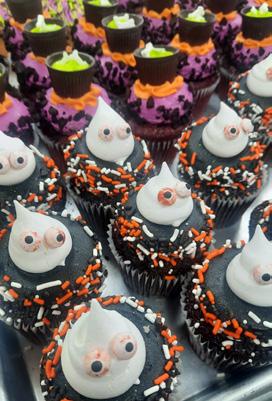

She got the job. And more than that, she found a mentor in Flavourtown’s production manager, who helped refine her decorating skills.
“I already felt confident with the baking side, in making batters and frosting, but polishing cakes, getting the perfect drip or finish, that was new. My first two-tier cake was Harry Potter-themed and it was pretty horrific,” she laughs. “Actually, I’m my own worst critic. It just looked a bit sad; not quite as polished as it could’ve been.”
Since then, she’s decorated everything from jungle-themed birthday cakes to galaxy-inspired creations for chef Gordon Ramsay’s family.
“You never know what the day will bring,” says Katarina. “One particular day, we had 75 cakes to get out but that’s what keeps it fun.”
Even the occasional disaster like a cake collapsing in hot weather is taken in stride; “It happens. You just fix it and move on.”
Katarina’s ultimate goal is to one day return to New Zealand and open her own cakery with the intention of “paying it forward”.
“I’d love to hire young bakers coming through Noel’s course and share what I’ve learned,” she says.
and cheffing, until she was finally able to make the trip in 2021.
With no job lined up, she moved in with her grandparents until a job listing from a boutique bakery in Fulham called Flavourtown got her attention.
“I’d never heard of them,” she admits. “But when I looked them up on Instagram, I thought, “Wow, this is where I need to be”. I loved how creative they were with their cakes. It was so different to anything I’d seen in New Zealand. They were immediately very impressive.”
“I haven’t met him because the cakes get delivered, but when I found out I was baking for him it was very cool,” she says. “There’s definitely some pressure when you know who it’s for, but every cake deserves the same level of care.”
Other celebrity clients include Rupert Grint and David Tennant and while Katarina didn’t personally make the cake for Princess Eugenie, she was part of the team buzzing about the royal order. Now, she’s been promoted to assistant production manager and works in a team of five decorators and three bakers.
Her advice for home bakers dreaming of Insta-worthy results? “Don’t be scared. It might look intimidating but just give it a go. You might surprise yourself.”
From a small Kiwi kitchen to baking for royalty in London, Katarina’s journey has impressed her former tutor.
“I'm proud of all my graduates who keep the passion alive,” says Noel. “However, I must say Kat did extremely well. She went where you can grow, out of her comfort zone and fuelled by passion and talent.”
KATS_BAKEHOUSE
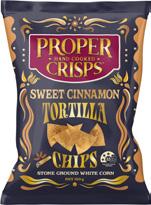
Nachos for dessert? Trust us on this one. These Sweet Cinnamon Tortilla Chips from Proper Crisps are inspired by the Mexican flavours of buñuelos and calabaza en tacha, and they deliver just the right hit of spice and sweetness. Pile them up with fruit compote, drizzle with caramel, add a sprinkle of toasted almonds, and finish with a scoop of good vanilla ice cream. And they’re just as delicious straight from the bag. A fun, unexpected treat for adventurous snackers. RRP$5.59. Available in supermarkets from mid-October.
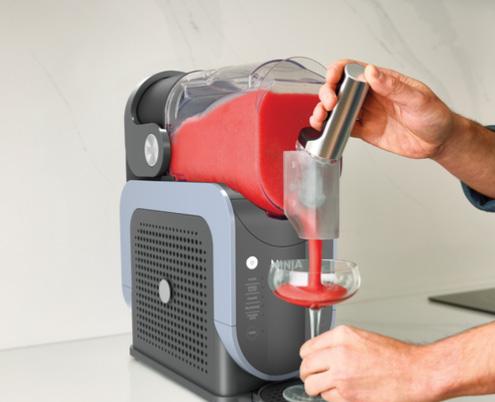
Frozen cocktails just got a serious upgrade. The UNO team put the Ninja Slushi Professional Frozen Drink Maker to the test during a sunny Friday afternoon in the office (purely for research purposes, of course), and let’s just say we didn’t need a rooftop bar to get those Friday arvo vibes! From velvety Negronis to zesty Margaritas, the Ninja Slushi whipped up our favourites in minutes, no blender tantrums or rogue ice cubes in sight. It comes loaded with five smart presets — Slush, Frozen Cocktail, Frappe, Milkshake and Frozen Juice making it ridiculously easy to switch from brunch smoothies to late-night daiquiris. Sure, there’s a small learning curve when you're crafting your own concoctions, but built-in alerts help guide you toward frozen greatness. Heads-up: it does use a decent chunk of bench space, but honestly? Worth it. The sleek design earns its keep, and it instantly became the life of the party. RRP$599.99.
NINJAKITCHEN.CO.NZ

Born in 2004 from a childhood friendship, Emma & Tom’s began with three delicious juices, an office fridge and a little red Holden Combo. Today, the brand offers a vibrant range of all-natural drinks and snacks made with no added sugar or artificial ingredients. B Corp certified and fully recyclable, Emma & Tom’s supports local farmers and gives back, having donated over 100,000 products to community charities. RRP$5 each.
EMMAANDTOMS.CO.NZ
Sweet Heat is a fiery-sweet fusion you didn’t know you needed. This bold drizzle blends silky New Zealand Multifloral Honey, potent MGO 100+ Mānuka Honey, red chillies and apple cider vinegar for the perfect balance of sweet and spicy. Elevate fried chicken, dumplings, hot wings, or even nourish bowls, with a kick of flavour that bites back. With just three powerhouse ingredients, this limited drop brings serious heat and serious flavour. Get it while it’s hot!
RRP$14.95
PURENEWZEALANDHONEY.COM
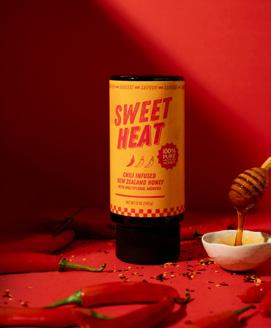

Food blogger Olivia Galletly, aka The Hungry Cook, shares her most-loved recipes in this must-have cookbook. She shows us how to turn fresh, seasonal ingredients and even what's lurking in the freezer — into foodie favourites. From nostalgic classics to easy weeknight dinners and cocktails, these recipes are perfect for everyday cooks and weekend entertainers alike. RRP$44.99. Available at all good book stores.
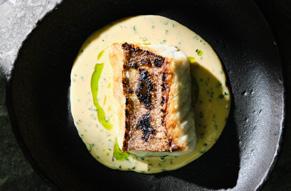


Solera makes history with Two Hats, putting Mount Maunganui on the national dining map.
Mount Maunganui’s dining scene has reached a new milestone. Recently, Solera became the first and only restaurant in the Bay of Plenty to be awarded Two Hats by the prestigious Cuisine Good Food Guide Awards. It's a first for the region and a significant achievement for its owners, husbandand-wife team Nick Potts and Chloe Ashman.
Often described as New Zealand’s answer to the Michelin Guide, the Cuisine awards are widely recognised as the highest standard in local hospitality. Solera's Two Hat ranking puts it among just 32 restaurants across the country to hold this title, joining the ranks of established names like Onslow, Mr Morris, Aosta and Embra. Scoring 18 out of 20, Solera now sits in the “Consistently Outstanding” category, which is a reflection of excellence not only in food, but in service, wine offering and overall experience.
For co-owner Nick, the recognition is the result of five years of focus and consistency. After years working front of house in both New Zealand and Melbourne, Nick opened Solera in 2020 with a clear goal: to bring a world-class dining experience to Mount Maunganui.

“From the start, it was about creating a space that felt relaxed but still delivered on detail,” says Nick. “We wanted to do something that could stand alongside the best in the country, but stay true to our style and location.”
That balance is evident in every aspect of the Solera experience, from the evolving wine list and service approach to the design of the kitchen itself, which centres around an open flame. It’s also a reflection of the talent in the kitchen, led by head chef David Bryson, who took over the creative lead last year after several years working alongside former head chef Neil Sapitula.
Solera’s Two Hat status puts Mount Maunganui on the national culinary map in a new way, not just as a lifestyle destination, but as a serious food region in its own right.
“It’s huge for us,” says Nick. “But it’s also exciting for the region. It shows what’s possible when you back your vision and build the right team around it.”
SOLERA.NZ
High in the Kaimai Ranges, a small farm puts chickens first, and lets the eggs speak for themselves.
PHOTOS ALAN GIBSON
It’s a riddle as old as time and one that has left the greatest minds in history scratching their heads. But ask Karlene McGirr what came first, the chicken or the egg, and her answer is immediate.
“The chicken has to come first because that's our priority,” she smiles. “If you look after the chicken, you get a good egg.”
This philosophy drives Kaimai Eggs, the family-owned egg farm situated in the tranquil Kaimai Ranges that was started by Karlene's parents, Otto and Vicki McGirr, in 2011. Now Karlene and husband Jim are continuing to grow the family business, along with all Otto and Vicki's daughters, who are involved in aspects of the farm. The health and well-being of their chickens is something that has been paramount to the whole family since the beginning.
“Dad's been asked ‘What makes a good egg?’ a few times over the years, and it’s simple: a good chicken makes a good egg,” Karlene explains. “There’s no other way around it.”
“You've got to have a healthy, well-fed, well-watered chicken in a good environment with good people looking after it and all the other stuff kind of just happens,” Jim adds. “Which makes sense. Of course, a happy bird is going to produce better eggs.”
Their farm, which produces free-range and barn eggs, is situated in the tranquil Kaimai Ranges, where the chooks enjoy a view of the hills that’s so stunning it’s printed on the egg carton. But spectacular views aren’t the only thing that sets Kamai Eggs apart.
Unlike most egg producers, they look after their whole supply chain, getting baby chicks at just one day old and rearing them right up until they’re ready to begin laying eggs. From there, they’ll be moved into one of the farm’s laying sheds, where they’ll be able to run free, indoors and
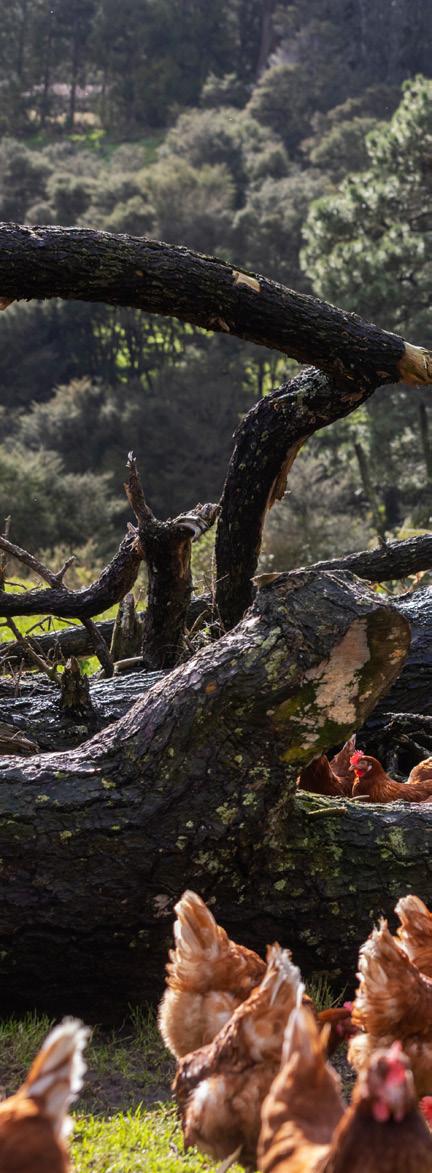
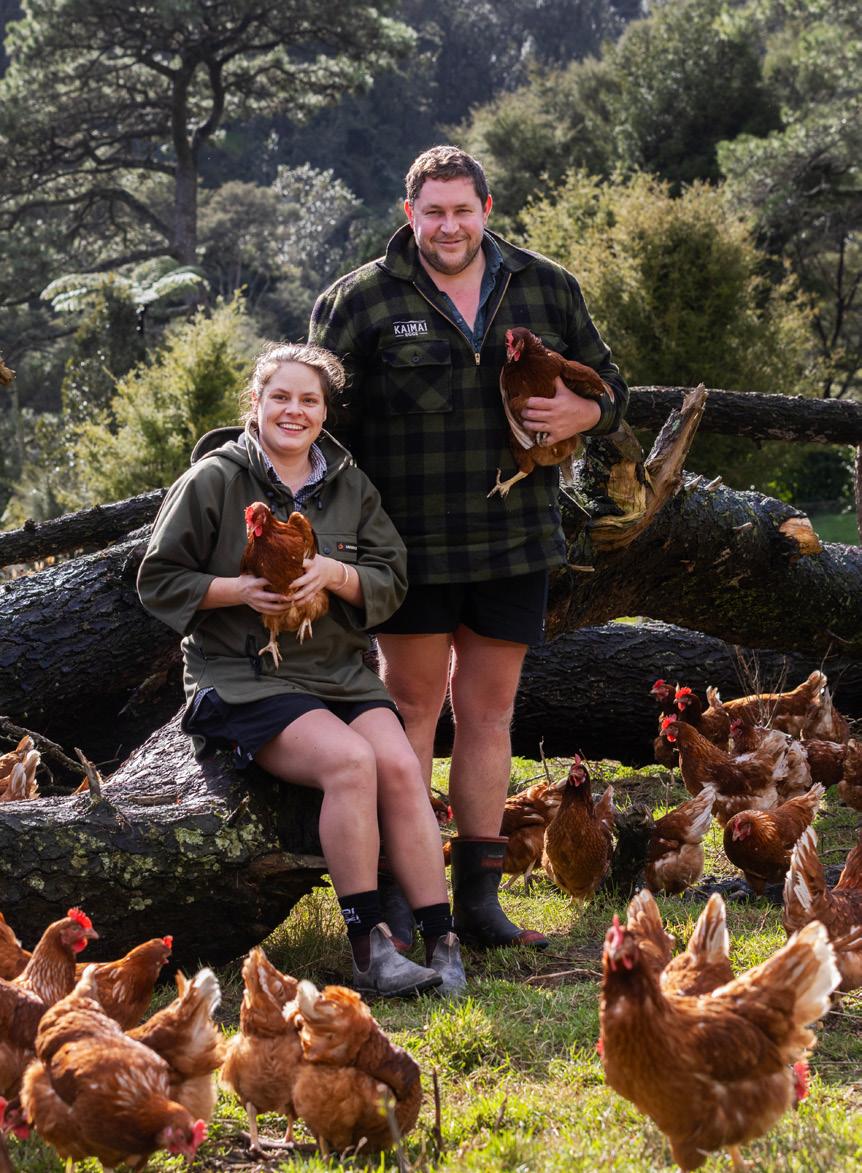
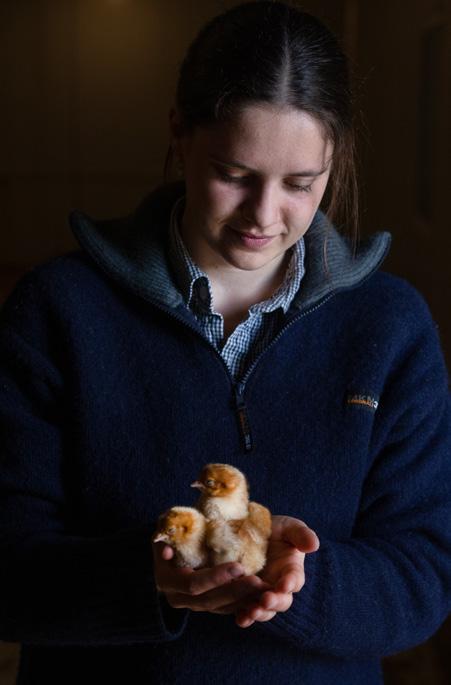
out, with the flock. The eggs that are produced are then packed by hand on the farm before going onto their “little truck” that leaves every morning, to deliver them fresh to supermarkets and cafés around the region. Their team even stacks the supermarket shelves themselves to ensure there’s no accidental breakage that goes unnoticed and could leave a bad taste in a consumer’s mouth.
“We’re only as good as the last carton that goes out. We believe, and it’s true, that every carton is an individual customer,” Jim says, explaining why in this age of automation they remain hands-on. “If you have a bad experience
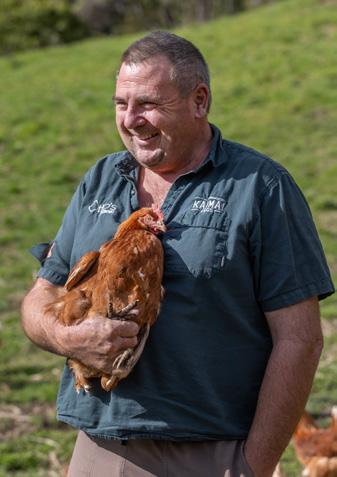


with our eggs, you're not going to want to buy them again.”
The family don’t just talk the talk, they also walk the walk, out on the farm each morning checking on their chickens and jumping on the line to pack eggs.
“We have a great team who supports making this happen seven days a week,” Jim says, proudly.
Keeping the birds happy and healthy is a constant challenge, especially with free-range farming. The trick is finding the balance between quality of living for the bird versus the cost, so an affordable product is waiting on supermarket shelves.
“We’ve invested in some really high-tech monitoring systems for the animals and for people to spend time with the animals,” Karlene says. “And because we rear our own birds, we get to control those that are incoming. Birds never leave the farm. They come in at one day old, and they stay on the farm.”
“It's a low-stress environment,” Jim says. “Because we're not moving the chicken far. It just goes from that shed there when they’re chicks to that shed there when they’re ready to lay. You see in other animals, when they move long distances, they come under a lot of stress.”
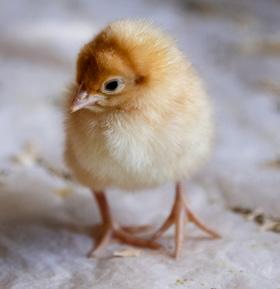
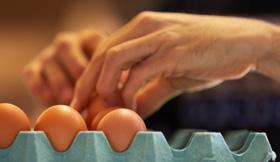

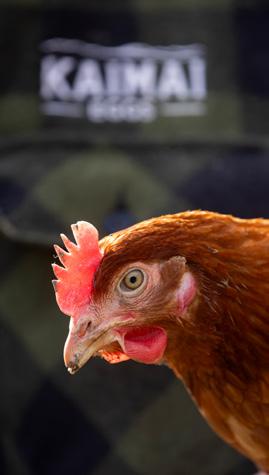
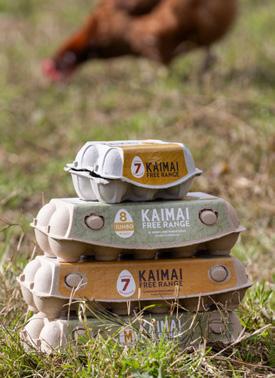
“...THEIR CHICKENS' LIVES ARE AS STRESS-FREE AS POSSIBLE . THE CHICKENS LIVE IN A BIG SHED WHERE THEY HAVE 24/7 ACCESS TO A GRASSY PADDOCK.”
The farm has philosophically and financially invested in ensuring their chickens' lives are as stress-free as possible. The chickens live in a big shed where they have 24/7 access to a grassy paddock.
“They can come and go as they please,” Jim says. “But typically they hang around the shed in the mornings.”
The birds are early risers, up at 4am for breakfast, before they start laying eggs at 5am. Around 8am is when the animal welfare team comes in to do their checks and make sure everything is hunky dory, and by 9am, the chooks' work is done for the day and they head outside to enjoy their day.
“The chickens are awake for 16 hours a day. And they get up to stuff,” Karlene says. “They break a lot, scratching and pecking and tapping away.”
“It can be chicken anarchy,” Jim laughs. Rounding them up in the evening and herding them back into the shed before
dark is a surprisingly easy task.
“They're scared of the dark, so they all come in willingly at night,” Jim laughs.
“It's like a switch. All of a sudden, they all just start running for home. It's bloody amazing! They all come in, eat and roost, and hopefully give us an egg the next morning.”
Kaimai Eggs' slogan is ‘Your Local Farm’ and that’s something they take to heart. They support local schools in the area, as well as Bay of Plenty Rugby and local food banks and charities.
“We take our social responsibility very seriously,” Jim says. “It's our job to support quite a few organisations.”
“Words are cheap. We want to walk the walk,” Karlene says. “Dad is a big pusher of that, especially with supporting kids in sports and the local schools. It's not optional, it's just what we do. It's all good to go out there and tell everyone that we're local, but you’ve also got to put your
money where your mouth is and support local organisations.”
“It's cool,” Jim smiles. “You get to meet quite a few local people doing good stuff in the community. It's rewarding to help organisations in the community. It makes you feel good.”
There’s only one last question for the egg farmers, and it could be the hardest of the lot; how do they like their eggs?
“That's the big question for the egg producers,” Jim laughs. “We've got loads in the shed and we always forget to take them home!”
“And we only get to take the ones that aren’t perfect,” Karlene adds.
“To be honest, it's quite nice to come to the cafés that use our eggs and get them to cook them for us,” Jim smiles, before Karlene jokes, “We're terrible at cooking them!”
KAIMAIEGGS.CO.NZ
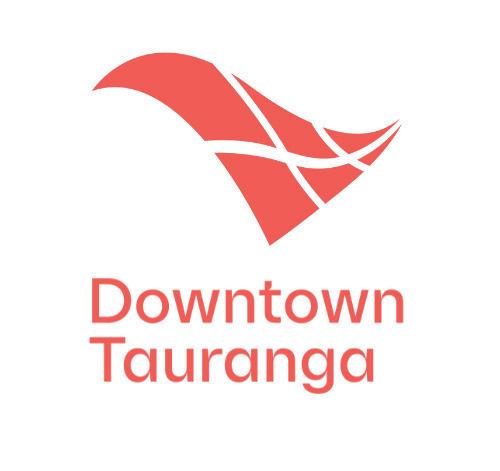




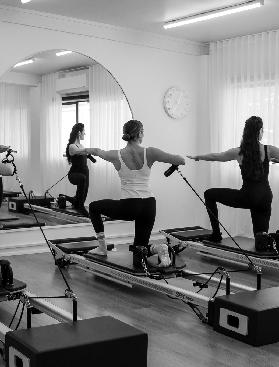



In the heart of Tauranga you’ll find a collection of unique destinations, each offering something special. From fresh coffee and deli delights to luxury fashion, bespoke tailoring, sparkling jewellery, expert haircare and even a moment of wellness, there’s something for every taste, style, and occasion. Whether you’re shopping, dining, or treating yourself, the city centre is the place to explore, enjoy, and discover."
Passionate about great coffee and fresh food. Our signature blend is crafted from premium Arabica beans sourced from Brazil, Colombia, Uganda, and Papua New Guinea, delivering a smooth, rich flavour in every cup. We prepare all our cabinet food in-house sandwiches, slices, scones, and cakes baked fresh daily. Open seven days a week, we’re here whenever you need a coffee, a bite, or simply a warm welcome.
ROBERTHARRIS.CO.NZ/CAFE/ ROBERT-HARRIS-TAURANGA/ Willow Street
We’ve been dressing women in style for over 23 years in the heart of Tauranga. Fashion, to us, is about more than clothes, it’s about how confident, unique, and radiant you feel when you walk out the door. Our exclusive labels are carefully chosen to flatter and inspire, helping every woman find her own expression of elegance. Step into Adzano, and step out feeling your very best.
ADZANO.COM Devonport Rd
We bring a touch of Mediterranean charm to Grey Street. Whether you’re here for boutique wines, authentic gelato, Roman pizza, or fresh panini, our space is designed for sharing good food and good company. It’s casual yet refined, full of warmth, style, and genuine hospitality. Come relax with friends, linger over a glass of wine, or take a little taste of Italy home with you.
STASSANO.DELI
STASSANO Grey Street
Our spacious, light-filled studio with stunning harbour views offers the perfect place to move, breathe, and reset. We keep classes small, with options from reformer and matwork to barre, strength, and private one-to-one or rehab sessions. Our expert instructors combine professional care with a friendly welcome each day. We offer new clients a private introductory session and seven days of classes, come join us.
THEPILATESFIX.CO.NZ 12 Elizabeth Street
Combining precision, style, and a warm welcome to create a grooming experience like no other. With over 12 years of experience, we opened our barbershop in 2025 as a place for men to relax, connect, and leave looking their best. From classic cuts to sharp fades and beard trims, our focus is on personalised service and detail. Book online today and enjoy a comfortable, social atmosphere where your style is our craft.
EXODUSBARBERS.CO.NZ
Grey Street
Proud to be Tauranga’s finest menswear store. From bespoke tailoring and custom design to weddings and suit hire, we specialise in personal service that’s all about you. With private parking and a welcoming atmosphere, every visit is a chance to enjoy true style and craftsmanship. Make an appointment today, we’ll ensure you leave looking sharp and feeling confident.
BONDANDCO.CO.NZ
Devonport Road
Helping Kiwis love their hair for over 30 years. With a huge range of trusted brands, we have everything you need to keep your hair looking and feeling its best. Our friendly team are your local hair experts, ready to give you a free consultation and advice tailored to your needs. Whatever your style or concern, we’re here to help you feel confident every day.
SHAMPOOPLUS.CO.NZ
Devonport Road
We’ve been creating special moments for over 75 years. As a family-owned boutique, we take pride in offering timeless craftsmanship, personal service, and genuine care. Whether you’re looking for a bespoke design, a meaningful gift, or expert jewellery repairs, we’re here to help you celebrate life’s milestones. Discover a place where tradition meets passion, and where every piece of jewellery is crafted with heart.
HAMMONJEWELLER.CO.NZ
Grey Street
Artist Jacki Barklie fuses emotion and bold experimentation to create striking, unconventional works.
For over three decades, Jacki Barklie has explored the delicate interplay between human connection and identity through both her creative professions, first as a hairdresser and now as a multi-disciplinary artist.
With roots in Africa and a passion for the psyche, her work delves into themes of fragility and desire, often expressed through mixed media, printmaking, textiles and photography.
After completing a Bachelor Degree in Creative Industries, Jacki embraced experimentation and introspection, creating art that pushes boundaries and celebrates the unconventional. Here she shares insights into her process, and the emotional resonance behind her evocative works.
UNO : How did your creative background in hairdressing shape your approach to art today? Jacki: Hairdressing trained my eye for form, texture and design. It was sculpture in motion. I treated hair like fabric, shaping and layering with intention. Competing creatively honed my skills, but it was always about the human connection. Listening to people and understanding their emotional relationship with aesthetics now flows into how I create and share my art.
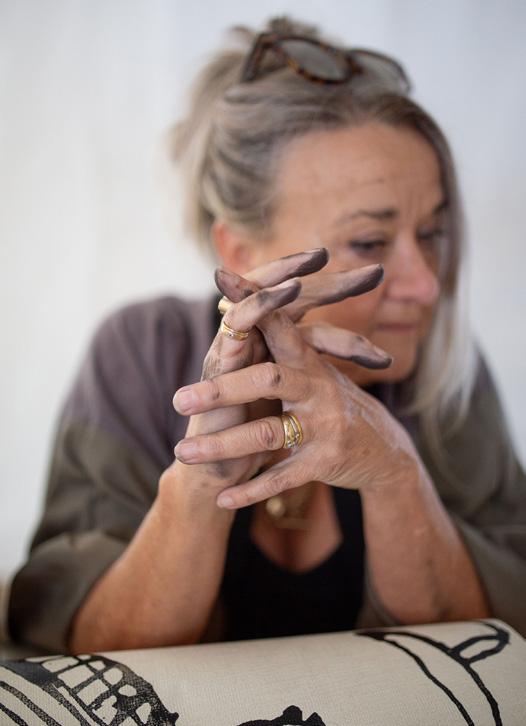
You were brought up in Africa. Can you share a specific memory or cultural influence that continues to inspire your art? Africa lives in my bones. There, creativity comes from what’s at hand, such as clay, dyes, dust, fabric. That bold innovation still inspires me. I remember painting with earth and watching patterns emerge from chance. Sometimes, I feel you can almost smell African dust in my work. Its textures, warmth and raw energy continue to guide my hands.
What was the turning point that led you to pursue a Bachelor Degree in Creative Industries later in life?
After 37 years in hairdressing and countless night art classes, I craved full immersion. I didn’t want a traditional fine art degree. I needed one that embraced creative risk. The Creative Industries degree was a perfect fit for me. I’m a multimedia artist whose work evolves from one material to the next.
Bay of Plenty’s authorised repairer for:




How do you decide which medium, whether acrylics, textiles, printmaking or photography, best suits the idea or emotion you’re trying to express? It starts with a feeling or story. From there, I follow the materials that speak to that idea. I explore the tension between materiality, light and shadow, stillness and movement. Whether I choose textiles or ink, the medium must hold that emotional vibration. It’s instinctive, process driven and always rooted in intention.
What role does experimentation play in your creative practice?
Experimentation is everything. I’m a curious artist drawn to risk and discovery. I often research ancient methods and remix them with contemporary techniques. I love when the unexpected happens, like when a material surprises me. That’s where the magic is. Every piece starts as a question, and sometimes the answer comes through failure.
How do you think our environments shape our emotional or psychological states? We’re deeply shaped by our surroundings. My art often reflects the fractured rhythms of the world and offers a kind of stillness in return. I explore contrasts in form, reflection, old and new, raw and refined. Within these tensions, I find beauty. My work invites presence, asking viewers not just to look, but to feel.
As someone who celebrates the unusual, what draws you to the unconventional or unexpected? The unexpected excites me – it’s alive and full of truth. While I admire tradition, I often find it too familiar. The unconventional feels raw and present. It’s not trying to be anything but itself. That honesty inspires me. It challenges the rules, breaks them if needed and that’s where true innovation begins.
How do you stay true to your raw, emotionally-driven approach? I know


Approved insurance repairer
Loan vehicles
State-of-the-art repair technology
Accurate colour reproduction Specialist for European, American & Japanese
my “why.” I show up in the studio daily and follow what feeds my soul. I let the process guide me, not trends. I create art that moves me first, trusting that it will resonate with someone else. If I had to make formulaic work, I’d lose the heartbeat. Emotion keeps it alive.
What advice would you give to someone wanting to explore their creative side later in life? Start now. But take it seriously. Don’t shrink yourself to ‘just crafting.’ Be brave, be messy, try everything. Follow what excites you. Let failure be part of the fun. You’re never too old to become who you are creatively meant to be. The second half of life is the perfect time to rediscover yourself.
How long have you been in the Bay and what do you love about it? We’ve been in the Bay for 27 years. It has been our longest home since emigrating twice. The weather drew us in, but our friends and pace kept us. My husband is my rock, and our home is a sanctuary. Our grown kids are flying, and I’m living the dream with my studio, surrounded by light, love and space to create.
Jackie is holding a solo exhibition titled ’SURFACE TENSION' from October 24 to November 2, celebrating her new body of work.


EXCELLENCE IN DERMATOLOGY


Watch as fashion flourishes this season.



Not many people can resist refreshing their wardrobes for spring. This doesn’t have to mean a fashion overhaul; it can be as simple as adding a few basics from a seasonal colour chart. In this case for 2025, you might be looking at welcoming in the warmer weather with some pastels. There’s buttery yellow, which has been dominating not just the catwalks but mood boards everywhere, powder pink, sky blue, seafoam and mint green. Keep your shades clean and clear rather than sickly sweet. Sometimes this can be by picking separates and styling your pastel with a plain white top or bottom; other times it can be by picking a simple style where the colour is the feature rather than an elaborate design.


Plaid will be the pattern of the moment. Usually associated with cooler months, its throwback 90s feel has been reimagined with elegant results. With versatility being a bonus, used in lighter fabrics to fit with the season, it’s so multi-functional it’s hard to pass over. If office wear is an area you’re looking to jazz up, then pale shades make perfect tailored trans-seasonal pieces. Style wise, watch out for a boxy short jacket or a blazer, either of which can be paired with Bermuda shorts for a super on-trend aesthetic. Add a low kitten heel and ta-da! We can’t really talk about spring without touching on the craze for technical fabrics. Wet weather gear has hit high fashion, with light waterproof jackets appearing as the unlikely hero of the outfit.



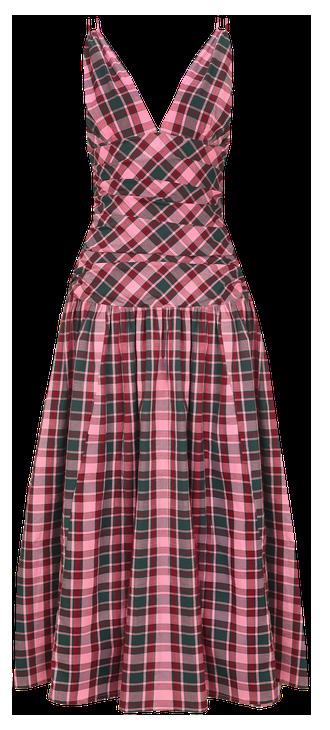




If you’re not feeling sorbets just yet, then a great follow-on from the burgundy of winter would be an earth tone. Add a lovely warm tan or copper to your outfit – you’ll find this will break down a sombre black monotone or mix up a pure cream aesthetic. Always understated, these tones fit in with the boho vibe and feel authentic and grounded. Lovers of animal print may want to change up the theme and swerve away from the usual suspects. If this is the case, then zebra is the perfect pattern. It feels like the most subtle offering from the animal kingdom, with its ability to be dressed up or down.

‘Simply stylish’ seems to be the direction designers are gravitating towards for spring and summer, with silhouettes that are all about keeping it easy but effective. The elements we have seen for previous seasons, such as cut outs, lace, asymmetrical cuts and puffball skirts are still all very much in play. But for this spring the ‘feature’ is often presented strategically. Frills, ruffles and lace are always welcome wardrobe additions, and if head to toe feels too 18th century, then look at pieces with small insets. A lace collar, or a blouse with trim; something that says timeless as much as trendy. Long, short and everything in-between, the pleat is the style of the season that comes in a variant to flatter everyone. Micro knife, big fat box or even gentle folds, soft drapes and swathes of fabric say spring like nothing else.

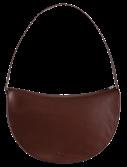




Find your way around the fancy fabrics and texture trends of spring and summer.
WORDS NICKY ADAMS
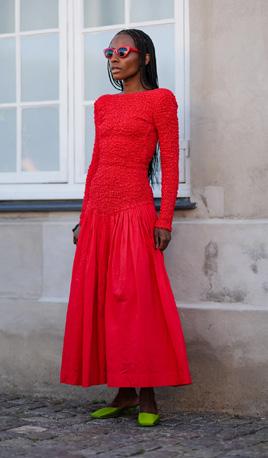
Smocking. Crochet. Broderie Anglaise.

With clothes that are designed for warmer weather inevitably involving less fabric, there is more onus on clever design features, fabric or textures being put to play to make a statement. Nostalgia looms loud and proud in the trends we are seeing so it’s little surprise that traditional trimmings and techniques have been incorporated to bring drama to the daytime. So, what are the wondrous ways that are being repurposed by designers to elevate our spring and summertime essentials?
A practice that has been around since the 13th century, smocking is a way of adding shape to a full garment, as well as providing elasticity. Essentially an embroidery technique that is used across an area of fabric, the material is gathered (often with thin elastic) and held in place. The effect is textured and appears almost like rouching. Smocked tops are often easy-wear bandeau style, while a smocked dress can be both incredibly comfortable and flattering, depending on where the gathers have been created. If the smocking is all the way from the top to the waist or just below, chances are it will suit most figure types. If it sits on the top across the bust (like a boob tube), there’s a danger the well-endowed could look like a Bavarian barmaid, so be mindful.
This is another traditional technique with a vintage/boho vibe which you’ll see used across everything from bikinis to blouses. Bringing with it understated elegance, it feels increasingly sophisticated. Essentially a close worked embroidery used around the edges of intricate cutwork, the look is fine and feminine, with the cutout often inspired by florals, petal shapes, or even circles. A Broderie Anglaise can either be overlaid across another fabric or will feature with the cutout unlined. So, depending on how it’s being used, the final feel can be super demure or rather risqué. A classic fabric, this can be picked and styled to suit any personality.
Most of us will be familiar with this; a process where threads or yarns are crafted to create textiles. It’s one that has been popular over the years, not just across multiple eras, but because it appears in many ways, shapes and forms. Memories of crocheted woollen squares being sewn together to make everything from Aunty Agatha’s blanket to ponchos to teapot covers can detract from the elegant ways it can be utilised to bring us high fashion pieces. It’s possible to crochet a variety of yarn from silk to cotton, and intricate and innovative patterns will ultimately produce the most beautiful and unique designs. Whilst the overarching mood of a crochet piece tends to be beachy and festival, if we look to high-end designers, it’s often used in the most elaborate and sophisticated ways: think Missoni, who has incorporated the crochet-knit style as its signature aesthetic.
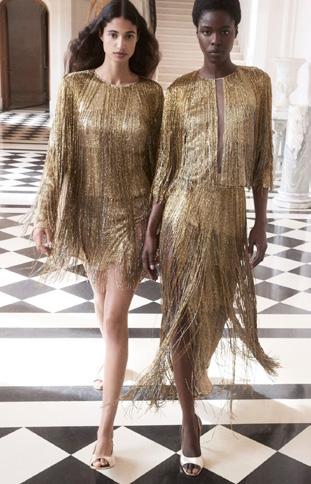


The total antithesis to the simplicity that is being hailed as summer’s key look, is the flapper trend. With a focus on fringing, beading, a drop waist and all the elements that made the roaring ’20s a visual extravaganza, it will appeal to every maximalist dying to make a statement. A new spin will be in the styling, worn with chunky shoes and casual jackets, with a more modern feel.

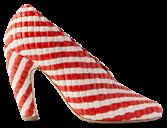
Pretty much everyone loves a Breton stripe it screams French chic and effortless style; but this look has been taken a step further with the nautical trend. From the classic captain’s blazer to Bottega Veneta’s striped leather pumps, there are plenty of takes on a basic theme. Keeping it true to its roots, you can’t really beat the freshness of a pure navy and white combination.

Silk scarves are being repurposed and could be considered your most important summer essential. Bandanas, tops, around handbags, and the latest is the trend for wearing a folded scarf around the waist over the top of a skirt or trousers. It may have a retro feel, but this is something new on the table.


It pains me to say it, but there’s no avoiding the denim jort this summer. A longline style with a baggy fit, the hemline hits between the lower half of the thigh and just past the knee. When it comes to styling, a small fitted top, or a feminine blouse paired with the baggy bottom will make you feel more runway and less Adam Sandler.
Discover our self-care staples for the season.

If concerns around sanitising period products have previously held you back, it’s time to reconsider. Hello Period’s innovative new steamer is convenient, effective and fast, sanitising your cup in just four minutes at the push of a button. RRP$69.99. HELLOPERIOD.COM
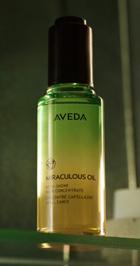
A delicious twist on scent, Jo Malone London’s Raspberry Ripple Cologne is a playful, limited-edition fragrance that captures the sweetness of juicy raspberry swirled with soft white musk. It’s joyful, creamy and delightfully nostalgic. RRP$296.
JOMALONE.CO.NZ



Get the look of lip filler without the cost, hassle and risk with this revolutionary lip plumping kit. The Volumising Lip Plumper provides instant impact, whilst the Hyaluronic Lip Plumper achieves long-term results – the perfect combo. RRP$86.99. CASHMORECLINIC.CO.NZ
Aveda’s new Miraculous Oil is a plant-powered treatment that delivers shine instantly. Infused with a Camelina oil ferment, plus Tsubaki and Daikon Seed oils, this silky formula softens, strengthens, and smooths while reflecting light and calming the senses. RRP$66. MECCA.COM
We’ve found the first step to your spring glow. This luxurious oil effortlessly removes makeup while nourishing your skin, with botanical extracts specifically chosen to combat hormonal skin challenges like breakouts, inflammation, and dryness. RRP$59. ORIASKIN.COM


Whether it’s from postpartum changes, stress or other factors, hair thinning can really impact how you feel. Luckily Bouf̓s transformative new range packed with patented technology works to help your hair grow stronger and healthier, so you can feel yourself again. From RRP$34.95. BOUF.COM

Wake up to glowing, healthy skin with BOOST LAB’s new Night Recovery Cream. This ultra-hydrating, fragrance-free formula works overnight to repair, plump and soothe using ceramides, hyaluronic acid and antioxidants. Dermatologically tested and deeply nourishing, it’s your new nighttime must-have for radiant, refreshed skin by morning. RRP$54.95.
FARMERS.CO.NZ
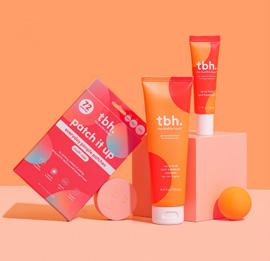
tbh Skincare’s patch it up everyday patches are your new breakout fix. With 72 hydrocolloid dots in three sizes, they absorb gunk, calm redness and deliver acne-fighting heroes like salicylic acid, niacinamide and tea tree oil to help heal pimples faster and reduce the risk of scarring. RRP$19.95.
CHEMISTWAREHOUSE.CO.NZ
Despite packing a whopping 20 percent Vitamin C, this gel serum is gentle on even the most sensitive skin. With Phyto exosomes from green tea leaves, it brightens, smooths and hydrates with clinically proven visible brightening in just seven days. RRP$164.45.
MEDIK8.COM.AU
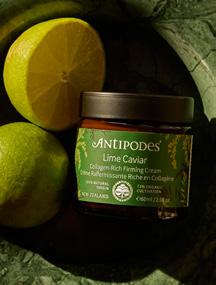
This affordable, New Zealand-made best-seller is beautifully lightweight while packing a serious punch. Featuring key ingredient Bakuchiol, a powerful antioxidant and natural alternative to retinol that can reduce skin discolouration and deeply soothe skin. RRP$39.
RENASTORE.CO.NZ

Boost skin̓s natural collagen with Antipodes Lime Caviar Collagen-Rich Firming Cream. This ultraeffective, comforting cream plumps skin and softens the appearance of wrinkles with its clever blend of naturally active ingredients. It’s like a facelift minus the pricetag. RRP$64.
ANTIPODESNATURE.COM






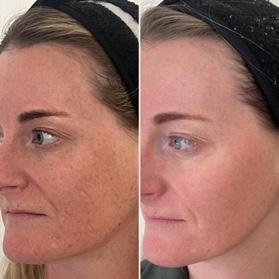
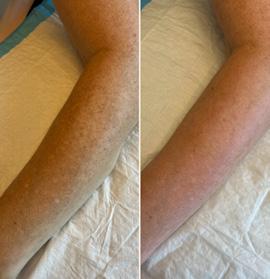
If your skin has lost its spark, Cashmore Clinic’s Leanne Cashmore has the solution.
In clinic, I often see clients trying to decide between resurfacing or rejuvenation, as though one must come at the expense of the other. But skin changes in tone, texture, firmness and clarity, so why treat it with a one-note solution?
Ultra Veloce, our latest treatment and a new favourite among clients, brings together two of the most advanced technologies in aesthetics, and, as a skin nerd, I’m genuinely excited by what this combination can do.
The first step uses broadband light from the Super Veloce 4800, which is a new arrival to New Zealand and, in my view, a quiet revolution in skin therapy. Think of it as a reset button that targets redness, pigmentation, rosacea, broken capillaries and even hormonal acne. And unlike older IPL machines, it’s surprisingly comfortable.
Then comes the LaseMD Ultra™, a non-ablative fractional laser that works deeper in the dermis
to stimulate collagen and elastin. This isn’t just about smoothing fine lines or softening scars (although it does that brilliantly). It’s about activating the skin’s own repair mechanisms. One client called it “a wake-up call for my face,” and I loved that.
What makes this combination truly special is that the results are both immediate and progressive. You’ll see a glow within days, yes, but over the weeks, as new collagen forms and old pigmentation fades, the transformation continues. Skin becomes more resistant to future damage.
And it’s not limited to just the face. We’ve used Ultra Veloce to treat sun-damaged chests, ageing hands and scarring on the arms and legs. It’s for anyone wanting to feel confident in their skin, not just in makeup or good lighting.
Ultimately, every skin journey is personal. But if you’ve been looking for something that meets your skin where it’s at, this may be exactly what you need.
CASHMORECLINIC.CO.NZ



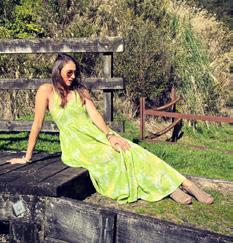

Amy and Ella makes summer dressing feel effortless. Handcrafted from recycled silk-blend saris by small, family-run artisans in India, each dress starts with a sari and ends up completely your own. Wear it as a halterneck, with straps or strapless, depending on the day. With sizes ranging from 10 to 28, these dresses are made to fit and flatter a wide range of bodies. Use code UM25 at checkout for 25 percent off.
AMYANDELLA.CO.NZ

Why chase influencers when they can come to you? Influenced is turning the traditional brand-creator hustle on its head, offering New Zealand businesses a smarter, smoother way to team up with local content creators. No more endless DMs, awkward negotiations or guesswork. Influenced provides a curated, dramafree platform where creators and businesses connect directly. For a one-time fee of $59, brands across industries, from e-commerce to tradies, can tap into a growing pool of New Zealand talent and get authentic, professional content without the fuss. It’s influence, without the influence-panic.
INFLUENCED.CO.NZ | INFLUENCED.NZ Now available in the Bay of Plenty from the comfort of your own home.

Intravenous (IV) infusions deliver essential nutrients directly into the bloodstream. This method ensures rapid absorption and optimal uptake of vitamins, minerals, and other nutrients, providing fast and effective results. IV nutrient infusions to enhance health, support recovery and wellness.
We work with ages from 10 years old upward, and our service is conveniently mobile so we come to your home or workplace.
Our team of registered healthcare professionals are trained in holistic wellness, to deliver tailored vitamin infusions for optimal results. We offer comprehensive blood test analysis for those seeking a personalised approach.

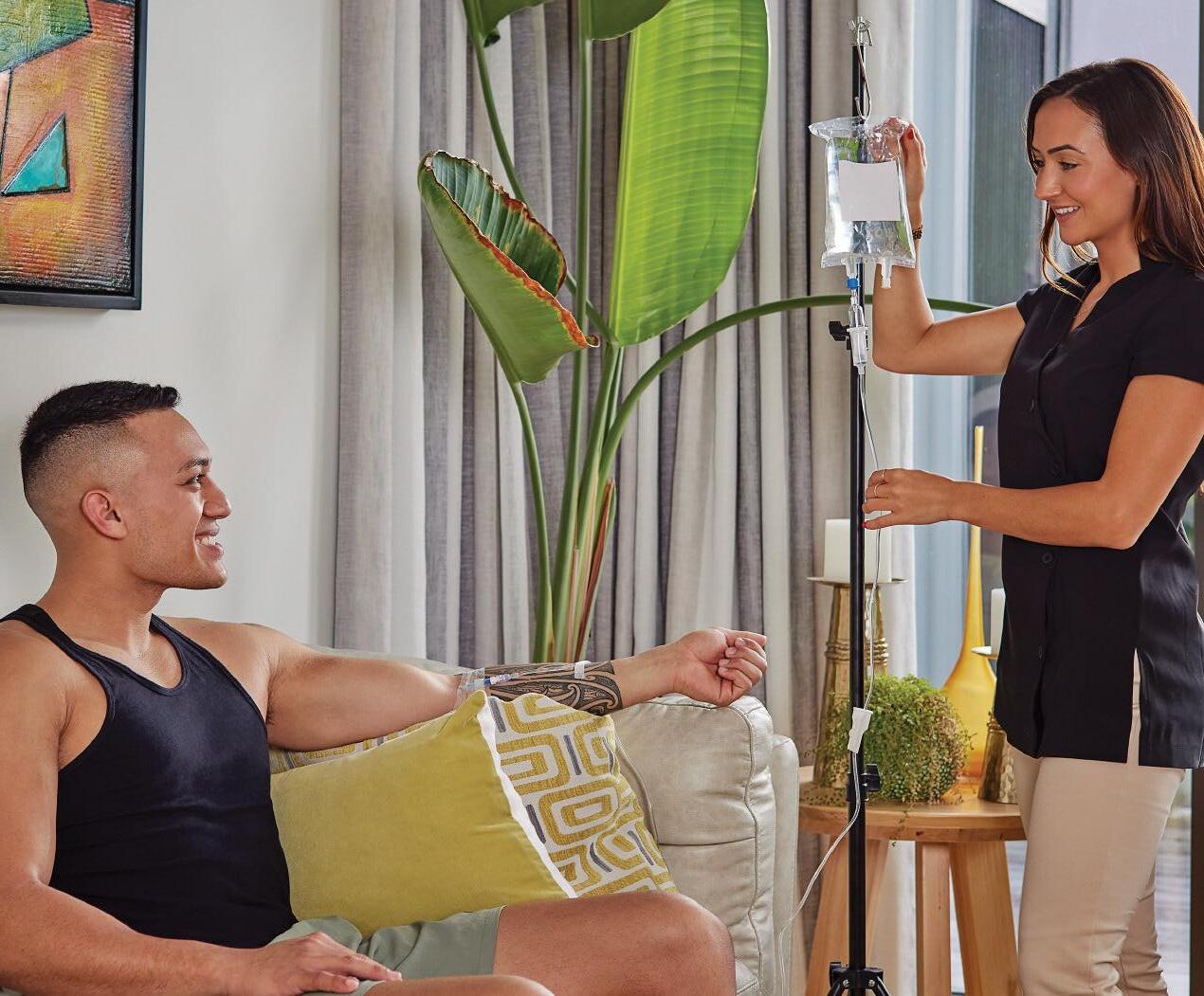


Without a doubt, non-invasive skincare treatments are giving surgical cosmetic procedures a gentle nudge to move aside and share the limelight. As owner/operator of About You Medi Spa, Katrina Ross is a certified aesthetician practitioner with 25 years’ experience. Katrina embodies her work she is glowing, articulate and clearly knows her stuff.
When Kat began her career in beauty therapy she was always focused on results driven, medically based appearance medicine. After finishing her initial training, she worked alongside renowned doctors both in New Zealand and Australia, ultimately opening About You Medi Spa 10 years ago. Here she offers multiple bespoke treatments, all carefully chosen to complement each other; from laser rejuvenation for sunspots and collagen production, to microneedling and make-up artistry. We quickly move onto discussing the Cavi Lipo cellulite and fat reduction treatment. This technology has been around for 14 years and was designed in America as an alternative to liposuction, without the risk. Non-invasive, targeted fat reduction for stubborn areas of fat such as abdomen, flanks, thighs, arms can even help define the profile on the double chin. I wonder how it ranks against other types of treatment addressing the same issues. “It’s by far a safer alternative, I believe, to the other forms of body contouring and fat reduction on the market. It’s the most noninvasive, is FDA approved and has shown its effectiveness and results over time.”
Measurable loss is judged by statistics taken at the start and finish of a series of treatments. I’m curious how long the process usually takes. Katrina tells me: “I can normally see skin tightening and how responsive the skin is in the first couple of treatments. Usually around four to six you see measurable weight loss. I say an average of eight treatments is needed for the best shot.” I ask if every time she will see a discernable result, the reply is emphatic. “Yes, that’s why I’m in business!”
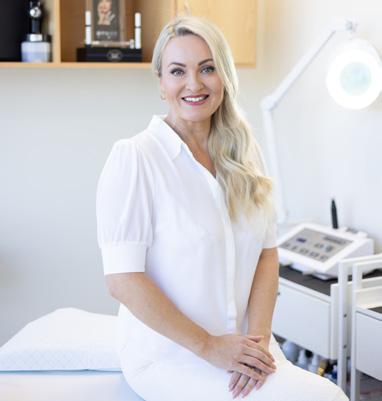
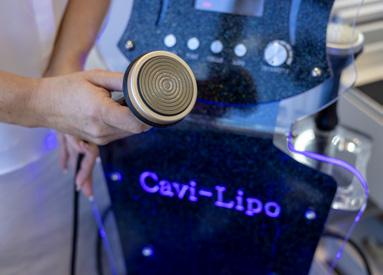
Katrina reiterates the value of this treatment combined with self-care and a healthy, active lifestyle. “It’s a very complimentary treatment for people who are motivated to improve themselves, and for those with stubborn areas that they just couldn’t move along with exercise alone.” And is it permanent? “Once the fat cells are reduced, they don’t come back in that area.”
This may sound like the holy grail of fat combat, but Kat emphasises it’s not a quick fix. While aesthetics is a crowded market, Katrina is not jostling for a space. She has invested in the very best equipment, is constantly training, has experience, skill and above all works on a one to one. Her clients are in safe hands; she knows it, and most importantly, they know it.
ABOUTYOUMEDISPA.CO.NZ
“ HER CLIENTS ARE IN SAFE HANDS; SHE KNOWS IT, AND MOST IMPORTANTLY, THEY KNOW IT. ”
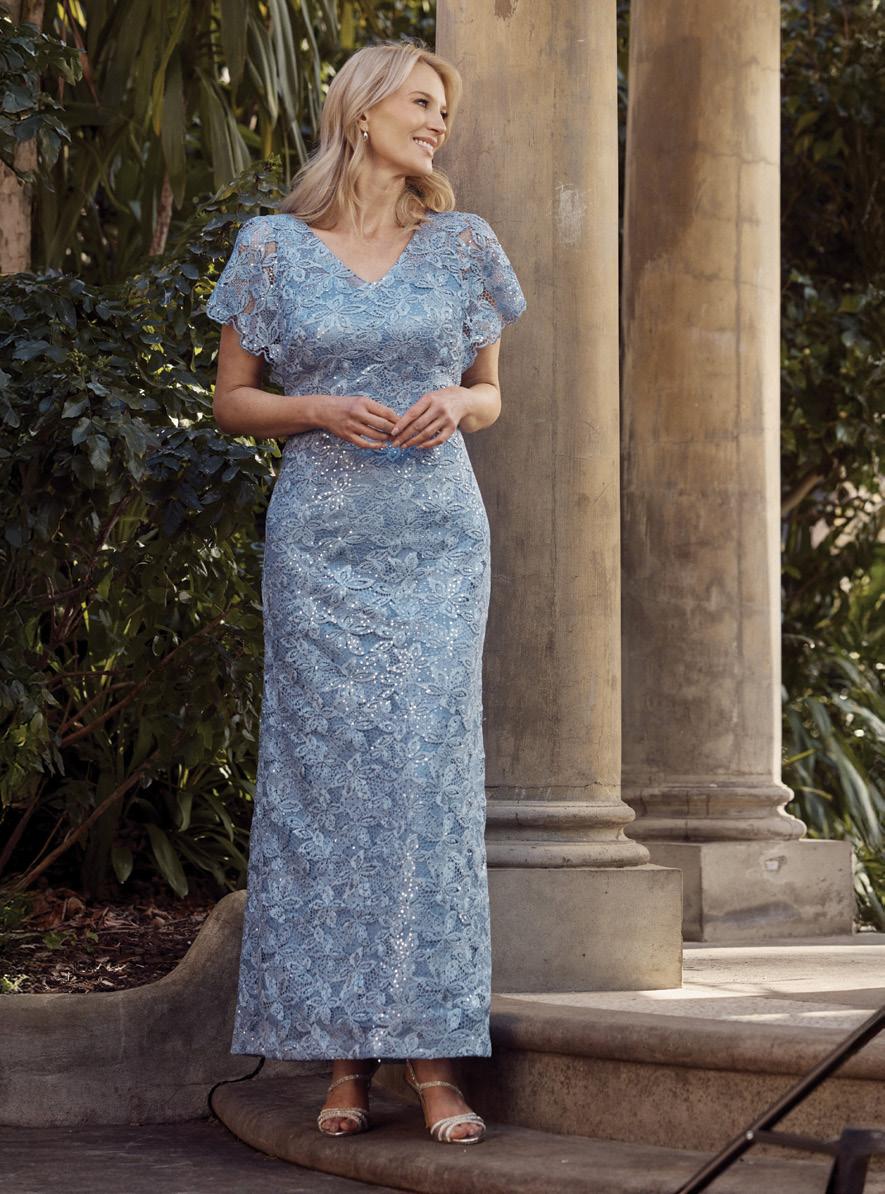

Crafting timeless jewellery that celebrates love, legacy, and life's special moments.
From bespoke design and manufacture, to repairs, gold buying and insurance services, our Mount Maunganui workshop and showroom offer it all. With free parking at the door, your jewellery journey starts here.
Mon-Fri 8.30-5.00 | Sat-Sun closed
Unit 18A Lambert Industrial Park, 23 Tukorako Drive, Mount Maunganui 07 5723434 | 0274 875106 | info@quantumjewellers.co.nz
quantumjewellers.co.nz


Salon G’s Shelley Pullar brings a fresh perspective this spring, with soft layers, natural texture and colour that enhances every angle.

Spring 2025 is here, and this season is all about the cut. Bold pixie cuts, cowgirl layers and even bobs are getting a makeover with curved edges and feathered insides that feel fresh and not too fussy.
The best part is that haircuts are finally working with your natural texture, not against it. It’s all about enhancing what you already have and tailoring it to your face shape. Here at Salon G, we’ve been focusing on helping clients understand how their face shape plays into not just their cut, but their colour too. Think of it like contouring, where bright pieces (like baby lights around the hairline) highlight and add width, while deeper tones (like a soft root smudge or mid-lights near the cheekbones) create depth and really make your features pop.
Colour-wise, we’re steering away from bold, chunky blocks. Instead, we’re loving softer, more lived-in colour, with panelled ribbons, blurred roots and those sun-kissed, low-maintenance tones. Warm shades are big right now: think cherry cola, spiced ginger, rich caramels, espresso browns, and our forever-fave, teddy bear blonde.
Thinking of brightening things up for summer? Book a blow dry and mention this article to get a free Tailored Pre-Spring Hair Treatment, courtesy of Wella at Salon G. You’ll leave feeling totally refreshed and ready for the season.
SALONGRANGE.COM


Bay local and holistic skin health expert Janine Tait tells us why nutrition is the missing link in your skin, mood and energy, and what you can do about it.
We often think of skincare as something that starts and ends with what we put on our faces. But the is truth that radiant skin, stable energy, balanced hormones, and even a better night’s sleep, all begin far deeper than your beauty cabinet. They start with your blood sugar and what’s on your plate.
While sugar has long been the villain in the wellness world, what many people don’t realise is that it’s not just about the sweet stuff. Everyday staples like white bread, pasta, and even so-called “healthy” snacks can cause blood sugar spikes and crashes that quietly disrupt everything from your metabolism to your mood.
Unstable blood sugar doesn’t always show up as a diagnosis. It can look like 3pm energy crashes, cravings that come out of nowhere, stubborn weight gain, brain fog, hormonal imbalances, and that elusive glow that never quite shows up, no matter how many serums you try. And yet, balancing your blood sugar isn’t about restriction or complicated diets. It’s about understanding how food works in your body, and using that knowledge in simple, satisfying ways.

That’s the heart of Flatten Your Curve, my new wellness guide that blends nutritional science with practical tips and recipes designed to help you feel your best, without giving up the foods you love. Think pizza, sushi, ramen, even cake reimagined to be blood sugar-friendly, full of nourishment, and still completely delicious.
Inside are easy nutrition strategies to stabilise your blood sugar naturally, as well as tips like eating protein first, taking gentle walks after meals, and the simple order you eat your food all backed by science. There are also recipes that support your body, skin, and mind without ever feeling restrictive.
The message? Nutrition isn’t just about calories or weight. It’s your body’s foundation, affecting everything from your skin and energy to your mood and hormones. And when your blood sugar is balanced, everything else starts to fall into place.
Because the real glow-up doesn’t come from cutting carbs or chasing perfection. It comes from feeling steady, strong and in sync with your body.
Flatten Your Curve by Janine Tait RRP$65. Published by Bestow Beauty.
“ NUTRITION ISN’T JUST ABOUT CALORIES OR WEIGHT. IT’S YOUR BODY’S FOUNDATION, AFFECTING EVERYTHING FROM YOUR SKIN AND ENERGY TO YOUR MOOD AND HORMONES.”
The region’s first ADHD clinic brings together leading minds and lived experience, in a place where families feel seen.
WORDS NICKY ADAMS / PHOTOS JAHL MARSHALL
It’s hard to pinpoint the most frustrating aspect of believing you have a neurodiverse child with ADHD or autism. It could be the helplessness you experience as a parent as you try to justify behaviour that to others appears anti-social, or the despair of feeling like a failure as the protector of your young one from their overwhelming emotions. Likely it’s the acute anxiety of knowing that you need help to navigate this.
Bay Paediatrics is a private clinic recently set up by leading specialists in the field of neurodiversity, that has been established here in Tauranga. A multi-disciplinary team of paediatricians, psychologists and behavioural change experts (among them co-founder Dr Sarah Moll, herself a paediatric consultant at Tauranga Hospital) will be working together to provide an all-encompassing, world-class service for ADHD, autism, cognitive and learning challenges, and across the neurodiverse spectrum.
Light, bright and spacious, the practice is welcoming the waiting room is relaxed and comfortable, and there is a separate play area set up for neuro-sensitive children. Freddie Bennett, co-owner and husband of Sarah, shows me around, explaining the reasons behind the decision to set up the practice.
Working as a developmental paediatrician at Tauranga Hospital, Sarah has always wanted to create the best outcome for families, to give them the treatment and guidance they need. However, she was increasingly wishing more could be done. In addition, as parents, Sarah and Freddie have lived experience of the challenges ADHD can present.
As Freddie explains: “We went through a journey with our children, looking at an ADHD diagnosis. At the same time, I’ve come to recognise my own ADHD. Like many parents I looked down the list of symptoms and thought it started to sound familiar. When ADHD came on my radar all the pieces came together. As parents we know what it’s like to navigate ADHD with your children, to feel overwhelmed, confused, to feel like you’re stuck in this holding pattern, waiting and wondering. And there’s a lot of guilt, because you feel like you’re failing as a parent and you should be doing more, but you don’t know what to do.”
Sarah’s role at the hospital made her more than aware of the challenges parents face while trying to get a diagnosis, and as soon as she actively expressed a desire to do more, Freddie was on board. “We thought, what if we tried to create this centre of excellence. We asked, ‘What would I have needed two years ago when we were going on this diagnosis journey? What would I have needed five years ago when I was struggling with my son’s behaviour and I didn’t know what the hell to do? What if we can create the tools, the support, the diagnosis everything so other parents don’t have to go through it?’ With Sarah’s skills and talent, we had the platform to help as many children as possible. Now, with the New Zealand Neurodiversity Centre of Excellence officially opened by New Zealand Minister for Mental Health, Matt Doocey in August Bay Paediatrics is going from strength to strength.
The combination of skillsets of Freddie and Sarah are perfect for a venture such as this. Sarah brings the neurodiversity specialism, while Freddie takes care of business management. As Freddie explains, the beauty of the centre is the idea of it being a one-stop-shop. “We can assess, diagnose and prescribe ADHD medication. But we also thought, ‘For kids with ADHD

“FOR
AND AUTISM, LET’S GIVE PARENTS SOME STRATEGIES AND INTERVENTIONS THAT ARE DESIGNED FOR EACH FAMILY. ”
and autism, let’s give parents some strategies designed for each family that will make a difference at home and school’. ADHD is often not a standalone condition. We have a multi-disciplinary team to provide gold-standard autism assessments, and with cognitive and learning assessments we can also test for and diagnose dyslexia, dyspraxia, dyscalculia and beyond. So, while we are Bay Paediatrics, we call this building the New Zealand Neurodiversity Centre of Excellence. This is about giving every neurodiverse family the freedom to thrive.”
There are multiple points of difference offered by Bay Paediatrics, one being that while they are a private practice, they're extending their service to offer help to those that may just need clarification. Freddie confirms: “We will review a substantial amount of information for every family that comes to our door. Our medical team will review, and we will recommend the best next steps and assessment pathway for every family. We offer that service for free. Only if we see enough traits of ADHD do we then go on to offer them an assessment. We'll gather the information, analyse it and recommend a next step which may include ADHD, autism, cognitive and learning assessment or just consultation with our psychologist.
Freddie and Sarah have personally invested heavily into this venture, excited to be instigating what they consider a gamechanger. Sarah’s credentials are enough to get people to take notice of what they're doing. She was recently the only paediatrician in New Zealand to present at the 2025 ADHD World Congress in Prague. With her expertise comes knowledge on the most up-to-date diagnostic tools and resources available. Indeed, they are the only paediatric clinic in New Zealand to develop the unique 'ADHD Illuminate' assessment. This groundbreaking ADHD assessment utilises digital assessment techniques to provide a truly objective and science-backed diagnosis. Freddie says, "This is a gamechanger for families. No more guessing. No more worrying about teachers not picking up the signs of ADHD. This allows us to move faster, look deeper and go further for every child".
Very much the cherry on the cake with it comes to ADHD assessment, this computer-based diagnostic tool is designed to help evaluate ADHD by objectively measuring core ADHD symptoms like inattention, hyperactivity and impulsivity through motion tracking, eye-movements,
computer tasks and scientific analysis. It supports a comprehensive diagnosis by helping to more accurately rule in or rule out ADHD, inform treatment decisions and enables the creation of personalised treatment plans.
“Another aspect of the Illuminate ADHD assessment is that you can come in at 9am and by 4pm you’ve got your diagnosis and potentially a prescription. We can give families the three C’s certainty, clarity and confidence in one day. What we won’t do is tie you into follow-up appointments there’s no hidden costs.”
Freddie emphasises that the clinic will stop at nothing to give families the support they need. His mission is to establish the Bay of Plenty as the 'Silicon Valley of child neurodiversity' for New Zealand... and eventually the world. He says, "A neurodiversity diagnosis stays with a child for the rest of their life, so nothing is more important than getting it right first time, every time."
Another aspect of the vision for Bay Paediatrics is the commitment to offer families the tools they need to develop confidence in neurodiversity. Freddie is excited about providing help, regardless of whether a parent chooses to come here for an assessment. “We have free resources, and we run the EPIC programme Extraordinary Parents and Incredible Children. We have free podcasts and workshops; we have free books on our website. We run the EPIC Families events… giving parents the very best guidance. I believe this because as a parent with ADHD who has a child with ADHD, I know what it's like to feel that the world is against me. That's why we're starting what we call the 'neurodiversity revolution'. As a parent, I say revolution happens when a bunch of people turn around and say, ‘We’re not going to be overlooked anymore, we’re not going to be kept quiet and hidden away’.”
The passion from Freddie is palpable, and it’s clear the emotion that drives this clinic is genuine. There’s a deep understanding of what tip-toeing along the path of neurodiversity means for families. As Freddie points out, “Everything we create is for the real world, for real parents who have real struggles. We can give them tools to help them through. Most of all we want to help parents feel seen and understood. We want to be world-class. And we want Bay Paediatrics to lead the charge.”
BAYPAEDIATRICS.COM
TheLab Athletic Club, a HYROX-accredited facility, is elevating fitness right here in Tauranga.

When pro athlete Chas Clark decided to open a fitness centre, he knew it had to be something special.
Something different.
TheLab Athletic Club is the fulfilment of that vision. In the heart of Tauranga, it’s a new kind of fitness and wellness facility that puts as much emphasis on training and recovery as it does on its community.
“At our facility, we aim to transform the training experience with an inspiring space designed to elevate your fitness journey," explains Chas. "Our progressive approach not only challenges but nurtures, creating an environment where you're encouraged to not only discover but to surpass your potential in all areas of health and wellness."
The gym offers group classes, personal training, Vo2 max testing, hyperbaric chambers, saunas, physio and a café (Solara) onsite.
The premium facility offers purpose-driven, sciencebacked functional fitness classes that supports individuals in everyday activities through to triathlons, running, cycling, functional fitness and hybrid racing events.
It’s also the leading HYROX-accredited facility in the Bay, with multiple coaches and members representing New Zealand in the breakthrough sport at the recent World Championships in Chicago back in June this year.
But, he says, it’s seeing the potential in each individual, as well as connection, that's at the heart of the experience.
“Community to me means eliminating the barriers that we

set ourselves, or those that are placed upon us," says Chas. "Connecting through learned experiences, with a passion to embrace growth in ourselves and others, is vital."
With 660m2 of space, multiple class offerings and the popular café, Solara, offering sensational coffee, nutritious smoothies, bowls and other rotating selections, the facility has become a hub of wellness and social connection.
“It’s a nice space to do a workout and get a really good coffee or a protein shake, afterwards,” he smiles.
Having only opened their doors eight months ago, Chas says he’s stoked with the community response, seeing plenty of new faces coming in the doors each week from near and far, and with the warmer months approaching, it’s only going to keep growing.
“Coming into summer, we’re seeing a lot more buzz around for sure. With the longer, warmer days we always see an increase within the fitness space, with participation and people actively seeking events to train for and attend. Our Sunday Service session has been a hit, especially for those seeking to know more in the HYROX space."
It may sound a lot, but the team has worked hard to ensure TheLab is as welcoming to beginners and competitive athletes. “We have tried and tested for years to ensure a well-balanced programme that gets the most out of you as an individual, in terms of feeling strong, confident, fit and just being an absolute weapon when you need to be.”
BECAUSETHELAB.CO.NZ
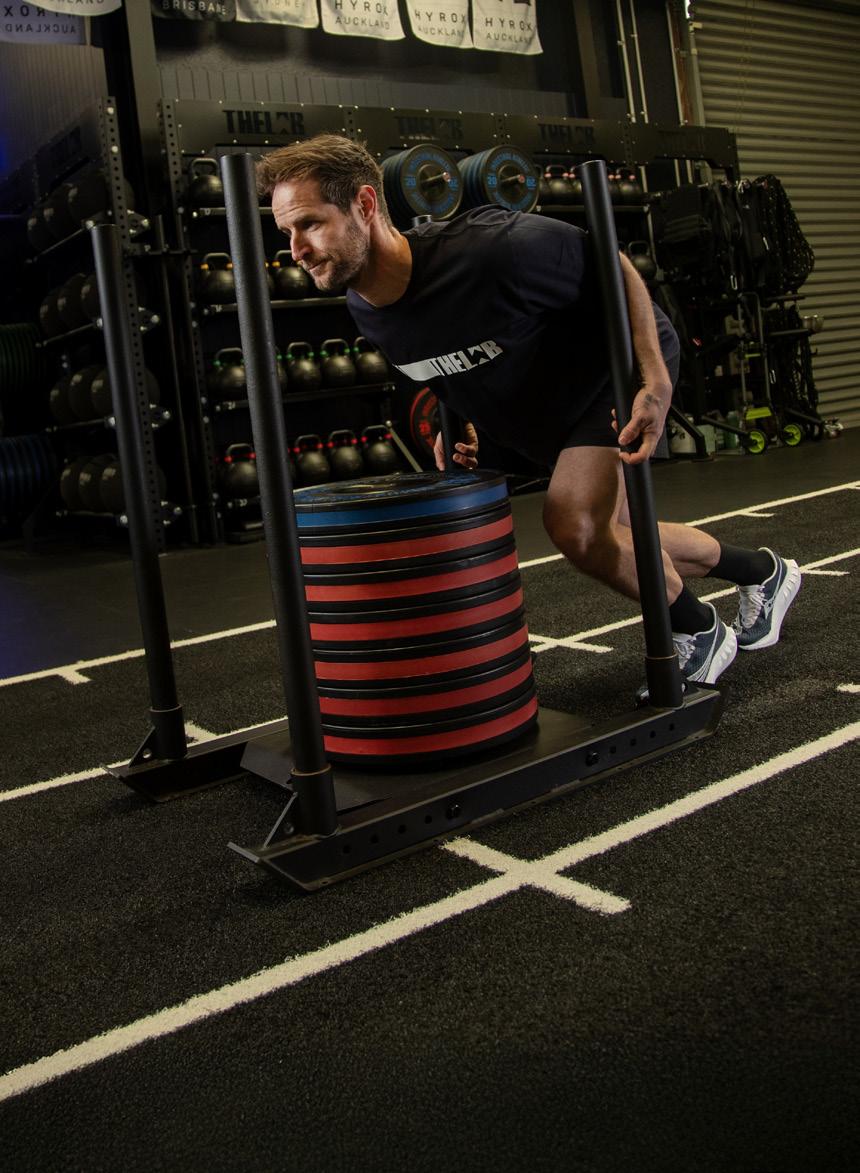
HYROX is the new fitness trend taking the world by storm. But what is it and why has it become so popular, so fast? UNO investigates.
PHOTO ALAN GIBSON
By now, you’ve probably heard of HYROX, the hot new fitness craze that’s taken over the fitness world, and most likely your social feeds, at a cracking pace. But what is it? And why are so many people getting into it?
“HYROX is a new fitness race, I guess you’d call it,” Francis Bondad, the gym affiliation manager for HYROX New Zealand, explains. “The format is standardised globally, so each race is consistent worldwide. That allows athletes to compare their times and ranking across global events.”
This, we suspect, is one of the keys to its lightning-quick success. With its ease of accessibility and competitive slant that can be as casual or hardcore as you like, it tickles that part of the brain that other fitness disciplines can’t. In some ways, it’s similar to the far more serene sport of golf in that most participants’ biggest rival will be their last high score.
HYROX started in Germany only eight short years ago. Like all sports, there are various categories to compete in, but the format is the same for each: run 1km to a functional workout station, complete the task, then repeat the process another seven times. Each workout station is different and could include things like burpee board jumps, sandbag lunges or kettlebells.
It’s simple enough not to be intimidating to newbies wanting to have a crack, but formidable enough to challenge even elite athletes.
“That’s the reason it stands out,” Francis smiles. “Anyone can compete. There’s that inclusivity where athletes of all levels can compete at their own pace, at their own race. If you’re a first timer who wants to give HYROX a go, you can do it. The second time, you might want to beat your time. Seasoned or elite athletes can compete in the global rankings.”
“The easiest way to explain HYROX is if CrossFit and triathlon had a baby,” Chas Clark grins.
Chas is a pro athlete who has competed in 10 HYROX events around the globe and represented Aotearoa at the World Championships in June. He’s also behind TheLab Athletic Club, a hybrid training facility in Tauranga that offers dedicated HYROX classes for those keen to get involved.
“It’s a phenomenon,” he enthuses. “It’s just so accessible, and they’ve really built a culture around it. Anyone can do the race; you don’t need a million things in terms of equipment, and you don’t have to do any sort of crazy diet to perform. You can just go and have fun.”
Another unique thing about HYROX is that its events are held indoors. Chas makes these sound more like a party than a serious and strenuous athletic event, with DJs and live music and a boisterous crowd spectating in the stands.
“It’s kind of like a rave. There are smoke machines, loud music and everyone’s come to watch. In Sydney, for example, 21,000 people are competing, and 30,000 people are inside the stadium watching and cheering,” he laughs.
“It’s absolutely wild. The vibe is amazing,” Francis adds. “Once you’ve done one, you’re pretty much hooked because it’s fun.”
He has simple advice for anyone who may want to give it a go. “Start running,” he says. “It’s 50 percent of HYROX with the eight 1km runs. Get used to jogging first, then progress to running. But if you don’t have that level of fitness, then you can reach out to our HYROX-affiliated gyms. All the coaches are HYROX certified and can help you build your fitness and then on to your first race.”
For Chas, the fact that it gives you a goal to aim for, the big race days, gives it the edge over other fitness regimes or just hitting the gym.
“It’s an accessible fitness race for everyone, from the everyday person to the elite,” he says. “There’s something to work towards with a start, a finish and an end goal. If you want to train and achieve a goal within yourself, you can. But there’s also the opportunity to take it more seriously and really chase that elite level and treat it like an actual sport. It’s really accommodating to both professional athletes and everyday fitness.”
“But the most important thing is that those who are interested just get out there and give it a go,” says Chas. “The sense of accomplishment you feel when you finish an event is worth it for that alone.”


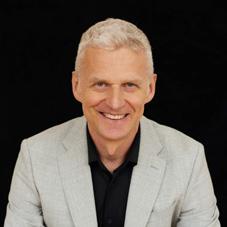

Why sleep is your body’s superpower and how we’re getting it all wrong.
WORDS HAYLEY BARNETT

“ IT’S NOT WASTED TIME. IT’S ESSENTIAL FOR MEMORY, MOOD, IMMUNITY AND EVEN LONGEVITY. ” DR PATRYK SZULAKOWSKI
Originally from Poland, Patryk earned his PhD in Chronic Obstructive Pulmonary Disease, but pivoted toward sleep after realising the impact treatment could have.
“When you treat sleep problems, you often see people transform. Their low mood, memory problems, exhaustion all improve. That kind of change is rare in medicine.”
Psychologist Dr Amber McAllister sees the link between sleep and mental health daily in her clinic.
“Sleep issues are a common symptom of stress and mood disorders,” she explains. “And being exhausted makes everything feel harder, which worsens anxiety. It becomes a vicious cycle.”
Mental strain compounds physical tiredness. When that happens we often turn to stress relievers to compensate, like food.
Nutritionist Jess Thorns agrees. “What we eat and when we eat can have a big impact on sleep quality,” she says.
“A common pattern I see is people under-eating early in the day, then getting ‘afternoon hanger’ and overeating late. This, especially with low protein intake, can interfere with both falling asleep and staying asleep.”
When I speak to Dr Patryk Szulakowski he’s recovering from a virus, one of many going around Tauranga Hospital where he works in internal and respiratory medicine.
“If you’d called me yesterday, I’d be coughing through the whole interview,” he laughs.
Despite feeling under the weather, his passion for sleep medicine is crystal clear. Patryk recently opened SleepMedik, a private clinic in Tauranga, after years of watching patients struggle through long public waitlists.
“The system is mostly focused on sleep apnea,” he says. “But thousands suffer from insomnia, parasomnias, circadian rhythm disorders, all sorts of challenges, and they’re not getting help.”
Many of Amber’s patients come in believing they’re just naturally terrible sleepers, but often, it’s a learned pattern, not a lifelong sentence.
“It’s not a case of being biologically broken,” says Amber. “Chronic poor sleep leads to frustration, and that creates beliefs and behaviours that reinforce the problem. But it’s usually very treatable.”
The first-line treatment, both Patryk and Amber agree, is Cognitive Behavioural Therapy for Insomnia (CBT-I).
“CBT-I is one of the most evidence-based interventions we have,” says Patryk. “But most people don’t get access to it. They’re offered medications instead.”
Amber says CBT-I involves more than sleep hygiene tips. “It helps people understand their sleep patterns, track them, challenge their beliefs around sleep and improve routines. It’s not always easy. Sleep can even get worse before it gets better, but it works.”
Patryk is deeply concerned by the long-term use of sleeping pills. In New Zealand, nearly 680,000 sleeping-pill prescriptions were issued over one financial year, with over 36,000 dispensed in the Bay of Plenty alone.
“They should be short-term, for things like grief or acute stress, but we see people on them for years.”
Amber acknowledges that medication can provide temporary relief. “Sometimes people just need rest. But if you don’t address the root causes, the problem doesn’t go away. It just gets masked.”
Nutritionist Jess adds that certain foods and drinks are often overlooked culprits. “Caffeine, chocolate and alcohol can all interfere with sleep. Even morning coffee can disrupt deep sleep hours later, depending on your sensitivity.”
One of the most common enemies of modern sleep is screens. Blue light from phones, TVs and tablets suppresses melatonin, the hormone that tells your brain it’s time for bed.
“We’re designed to respond to darkness,” says Patryk. “When the sun sets, melatonin rises. Now we’ve flooded our homes with light, especially blue light, and it’s confusing our biology. Many families see this up close with teenagers, who naturally prefer later bedtimes and often want to stay on their phones late into the night. Even with apps and parental controls to limit screen time, it can become a constant struggle against biology and technology combined.”
A consistent bedtime routine is one of the most powerful tools for better sleep. “Going to bed and waking at the same time, even after a bad night, helps regulate your body clock,” says Amber. “Sleeping in or napping throws it off.”
Jess agrees: “Dinner should be balanced with protein and complex carbs to help you feel satisfied and regulate blood sugar through the night. Magnesium-rich foods, like leafy greens or avocado, help relax the body, and teas like chamomile can signal it’s time to wind down.”
Behind closed eyes, your brain and body are busy. During deep sleep, the brain’s glymphatic system leaps into action, clearing away metabolic waste like beta-amyloid, which is linked to Alzheimer’s risk. REM sleep, by contrast, helps cement memories and regulate emotion through intense neural activity and selective neural pruning. This nightly “brain reboot” underpins everything from mood stability to learning.
“Sleep is when the brain cleans itself,” says Patryk. “It’s like overnight housekeeping.”

Sleep isn’t just about energy levels. It’s basically a pillar of physical health. Chronic sleep deprivation has been linked to obesity, cardiovascular disease, weakened immunity, diabetes and even cancer.
“In the Netherlands, women with breast cancer who worked long-term night shifts can apply for compensation,” Patryk says. “That’s how strong the link is. Disrupted circadian rhythms and melatonin suppression are major risk factors.”
Sleep also plays a powerful role in metabolism, and that’s where nutrition matters again. “Eating sugary or high-carb foods at night is like giving your body a burst of energy at the wrong time,” Jess explains. “It disrupts your ability to wind down.”
Unstable blood sugar can even lead to night waking. “Especially when combined with hormonal fluctuations, like in perimenopause, where you can get stuck in a cycle of poor sleep and next-day cravings.”
And poor sleep impacts food choices, too.
“You’re hungrier, less satisfied and more likely to snack,” Jess says. “It also reduces insulin sensitivity, leading to energy crashes and more sugar cravings.”
Gut health also plays a role. Good gut health supports sleep by boosting serotonin and melatonin production, reducing inflammation and keeping the body’s circadian rhythm in balance. “If your gut is out of balance, it can affect your ability to relax and fall asleep,” explains Jess.
“ GOOD SLEEP LIFTS THE WEIGHT OF EXHAUSTION. WHEN PEOPLE FINALLY SLEEP WELL EVERYTHING BECOMES EASIER. ” DR AMBER MCALLISTER
“There’s no one-size-fits-all number,” says Patryk. “Most adults need seven to nine hours. Teenagers need more. Sleep becomes lighter and more fragmented with age, though the restorative need for sleep remains.”
If you’re consistently waking at 3am, Amber says the cause may be psychological. “Often it starts with stress, but over time, people begin to feel anxious about sleep itself. The bed becomes associated with frustration.”
If sleep is a struggle, Jess’ advice is simple. “Start by stabilising blood sugar. Eat enough protein, especially in the morning. Limit caffeine to before midday, reduce alcohol and include sleep-supporting foods like eggs, leafy greens and kiwi fruit throughout the day. A small protein-carb snack before bed can help, too.”
For a long time, sleep was treated as a passive process. It was less important than diet or exercise. But that’s changing. Experts now agree that sleep is the foundation.
“Good sleep lifts the weight of exhaustion,” says Amber. “When people finally sleep well, everything becomes easier.”
Or, as Patryk puts it: “It’s not wasted time. It’s essential for memory, mood, immunity and even longevity.”
So tonight, dim the lights. Put the phone away. Give your body what it’s really been asking for, which is deep, restorative sleep.

Struggling with sleep? You’re not alone. SLEEPMEDIK, understands how vital restorative sleep is to your health, wellbeing, and quality of life.
Dr Patryk Szulakowski and his team of specialists are dedicated to diagnosing, managing, and treating a wide range of sleep conditions — from snoring and sleep apnoea to insomnia and restless nights.
With expert care, advanced technology, and a personalised approach, they’re here to help you rediscover what it feels like to truly rest.

Optometrist Alex Petty opens our eyes to smarter eye care, new tech and lifelong sight.
PHOTOS KATIE COX
When it comes to eye health, most of us don’t give our eyes a second thought until something feels off. Blurry mornings, tired evenings or a mysterious twitch that won’t quit usually puts our eye health on the radar.
Now Alex Petty, director of Bay Eye Care in Tauranga and UNO’s newest expert voice on all things vision, is here to shift your perspective, both literally and figuratively.
Originally from Auckland, Alex returned to New Zealand in 2016, after years working in Australia. The pull was a love for the Bay lifestyle and the chance to fill a crucial gap in specialist eye care. Nine months later, Bay Eye Care opened its doors. Today, it’s a nationally recognised clinic with a reputation that stretches across the ditch.
“What sets us apart is that we don’t sell glasses,” Alex explains. “We focus 100 percent on clinical care.” That means no upselling and no retail pressure, just expert advice grounded in what’s best for your eyes. It’s an approach that’s earned the clinic a growing fanbase of families who’ve stayed with Alex for years.
And it’s not just about what he does, it’s how he does it. Alex’s philosophy combines personal connection with cutting-edge innovation. “No two people, and no two sets of eyes, are the same,” he says. “Understanding someone’s story helps us offer truly tailored care.”
That blend of empathy and expertise has turned Bay Eye Care into a go-to destination for advanced treatments. We’re talking Ortho-K (overnight lenses that reshape your cornea while you sleep), custom lenses for keratoconus, high-tech solutions for dry eye and the clinic's latest investment, LipiFlow, which treats dry eye at its root by unblocking the oil glands in your eyelids.
They're also ahead of the curve with genetic testing for glaucoma, using a simple cheek swab to assess your risk and personalise your treatment plan. It's science, but with a heart.
Still, for Alex, the real reward lies in the long-term relationships. “I’ve watched kids grow up in my clinic, coming in shy at age eight, then at sixteen they’re tall, confident and talking about their future. That connection is what it’s all about.”
In 2020, when Alex faced a sudden cancer diagnosis, he
“ PEOPLE WROTE TO SAY I’D CHANGED THEIR LIFE... IT REMINDED ME WHY WE DO WHAT WE DO. ”
was forced to step away from the clinic for three months. While away, he was overwhelmed by the messages of support. “People wrote to say I’d changed their life or helped their child see again. I never expected that. It reminded me why we do what we do.”
Now, he’s bringing that same passion to the pages of UNO, kicking off a four-part series to bust myths, share insights and answer the most common questions about eye health.
First on his list? Contact lens hygiene. Alex warns that wearing lenses longer than prescribed or sleeping in them is a major no-no. “Even if you’ve never had a problem, all it takes is one bad bug, to risk a potentially blinding infection. You only get one set of eyes!” Alex warns. He’s also ready to set the record straight on reading glasses. “They don’t make your eyes worse. That’s a myth,” he laughs. “As we age, our eye structures
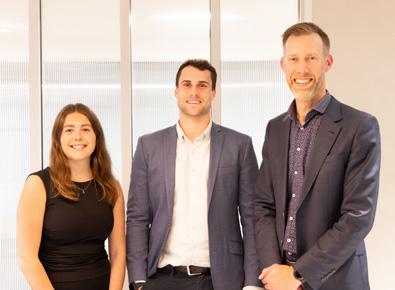
naturally change, causing vision issues. Putting off help just leads to more strain and frustration. The good news is that there are amazing solutions, from high-tech contact lenses to surgery.”
Alex's new column will cut through the jargon, offer practical advice and answer the questions many of us didn’t even know we had. Keep an eye out for it in the next issue.

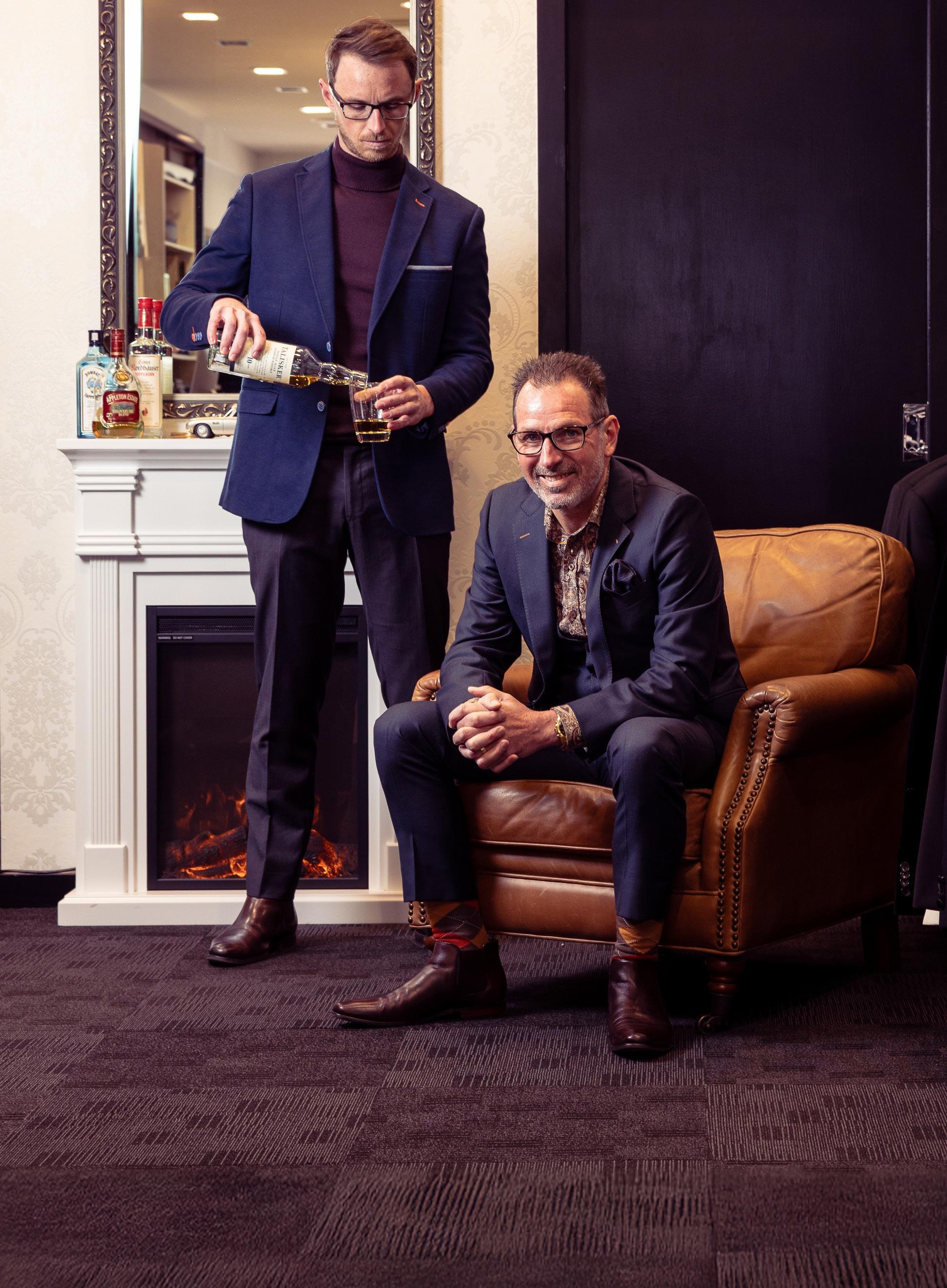
Bond & Co celebrates a decade downtown, and the timeless art of tailoring.

Jason Dovey is marking 10 years under the Bond & Co brand with a stylish new store refit. Of course there will be other celebrations rolled out, but the milestone of achieving a decade in the business of bespoke menswear and tailoring is one which he doesn’t take lightly.
Starting in the trade as a teenager in 1987, Jason has been in Devonport Road since 1992. In 2015 he opened his own store, specialising not only in bespoke tailoring, but also made-to-measure and carefullycurated off-the-rack pieces. After 10 years, he would probably consider that he has risen to the challenge he undertook when he made the decision to bring an upmarket menswear store to downtown Tauranga.
Walking into the recently completed refitted store, the brighter, lighter feel is immediately apparent. Ushering in a new era, the interior has a sleek, modern finish, while still retaining the personalised feel for which Jason and his longstanding trusted team of wife Michelle, Chris, Marie and Jack, are known. Head towards the changing rooms at the back, and customers can sink into a leather armchair next to a fireplace while they consider their options.
It’s an exciting time to be in men’s apparel, where beautifully cut and styled menswear is increasingly celebrated as more than equal in impact to women’s fashion. With this recognition comes a greater ability to bring pieces to the market that Jason understands his clients appreciate.
“Since Covid our local suppliers have introduced international brands to their businesses as a way of going forward, so we’ve been able to source exciting, quality menswear pieces that are totally unique,” says Jason.
He brings out a selection of stunning shirts; one from R2 Amsterdam, another from Guide London who specialise in a sophisticated range of coordinated shirts, blazers and pants. A Fish Named Fred is a label that excels at patterns, reflecting the demand for pieces that are individual as well as stylish. The last one he shows me is a classic shirt from Florentino, an Italian brand; beautifully cut and detailed, crafted from high-quality fabric, which epitomises sophistication.
When showcasing his latest collection, it’s clear that for Jason his customer base is always front and centre in his consideration. He agrees: “We’re relationship based; it’s the personal touch that we want to deliver. We’re not a shopping cart business; we want face to face communication with customers in store.”
This also plays into another key aspect of the business.
“The most important part is the fit of the clothes,” he adds. “People get put off when they pull something off a rack and it doesn’t look good. But our expertise is helping find the pieces that will work, and making sure every well-dressed man looks good.”
The connection with customers and the community is pivotal. Jason reflects on the fact that one aspect of the industry that keeps him invested (for which he is incredibly grateful) is the loyalty and support of his customers, both longstanding ones (some of which have been shopping with him for 30 years), and new. As we discuss the value of supporting local business, Jason laughs. He mentions that James Ashcroft, the internationally acclaimed movie director (who coincidentally was a recent UNO cover star) had come to him for tailoring prior to moving to New York to shoot his film with Robert De Niro. He then popped back in for more pieces on a whistlestop trip home.
“Funny to think he’s shopped here for clothes to wear in New York,” he says.
I ask whether the past 10 years has seen a change in customer shopping habits. “Yes, absolutely. Men are undoubtedly more adventurous in what they will wear and what they’ll be styled in.” It’s refreshing to see more men embracing what a well-cut suit can do for not just their wardrobe, but also their confidence. The beauty of menswear is that pieces tend to be style, rather than trend driven, and the changes that happen are subtle and slow. I wonder if there’s anything currently influencing new looks. Jason points out that trousers have reverted to a classic straight leg rather than skinny, lapels have started to get fractionally wider, but quite exciting he says, is the slow evolution of the double-breasted jacket. “We haven’t seen it for about 30 years, and there’s been a few attempts to revive it. But this time I think it’s going to stick.”
With event and wedding season just beginning in earnest, Jason and the team are already seeing a buzz around tailoring, with some customers often finding either celebrity driven pieces or outfits on Instagram that have caught their eye. With events forming an important part of the business, Bond & Co know how to transform someone’s inspiration into reality, starting with that perfectly-cut suit. There are other ways to bring to life a look though, as Jason says: “It’s all in the detail. Pocket squares, buttons, collar stitching, neck trims – these are the things that are impactful.” And finally colour; even through the cooler months there’s a demand for lighter toned jackets. And for a final take away, “New Zealand has changed,” reflects Jason. “Don’t be afraid to express yourself.”
BONDANDCO.CO.NZ

Pacific Lakes Village is set amongst tranquil park like grounds and private lakes. Spacious modern villas and terrace houses have been designed to create a vibrant community, providing an ideal setting for your active and independent lifestyle.
The village’s main community facility, The Pavilion, is currently under construction. Positioned on the lakes edge, this impressive building will house an eatery, lounge bar, library, art studio, beauty salon, wellness suite and extensive recreational facilities. Experience our community first-handshow home available by appointment.
Celebrating the places and spaces we call home.
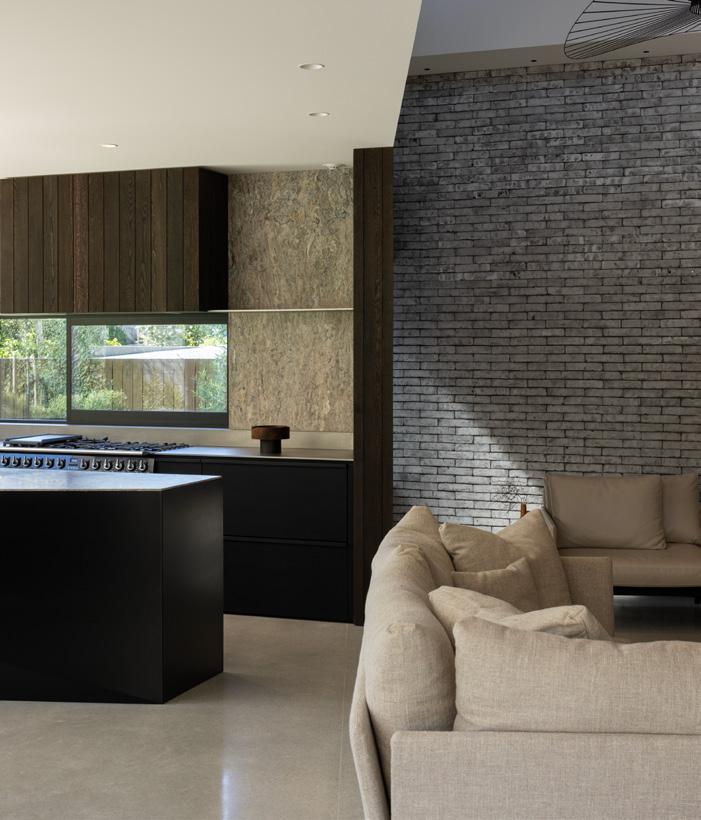
The latest architectural gems
PAGE 114
Interior tips for your home office
PAGE 118
A home for show
PAGE 120
Why bespoke solutions matter
PAGE 124

Offering a warm and inviting atmosphere, this soft, creamy yellow is making a comeback, with designers embracing its subtle yet impactful presence. Its gentle beauty acts like a neutral, providing a versatile base for interioir spaces.
STYLING AMBER ARMITAGE @ MARIGOLD
PHOTOS MELANIE JENKINS @ FLASH STUDIOS WALL COLOURS RESENE PAINTS
Resene Buttermilk is a warm yellow with a slight hint of orange. It works well with both warm tones, like mustard or ochre, and complements blush tones like Resene Wax Flower, a succulent moist apricot rose.


ABOVE AND ABOVE LEFT: Walls painted in Resene SpaceCote Flat in Resene Buttermilk, floors finished in Resene Colorwood Breathe Easy. Elba dining table, Eleanor dining chairs in Hay, Hanson twist side table and Boden Ridge vase from Soren Liv Norfolk rug in Sand from Baya . Patong pendant from Lighting Plus . Gidon Bing nesting bowl from Good Form . Roebling cut crystal rocks glass by Soho Home from Design Central
OPPOSITE PAGE: Walls painted in Resene SpaceCote Flat in Resene Buttermilk, doorway painted in Resene Wax Flower, floors finished in Resene Colorwood Breathe Easy. Tola and Black ‘Helicopter’ dining table by G-Plan and Mosquito chair in Black Oak by Rex Kralj from Good Form . Norfolk rug in Sand from Baya . Sesso Vase and Ethan table lamp from Design Central . Rufus Ares bowl from Soren Liv. Octopus Stool from Republic Home. Books stylists own.
Front
Kin
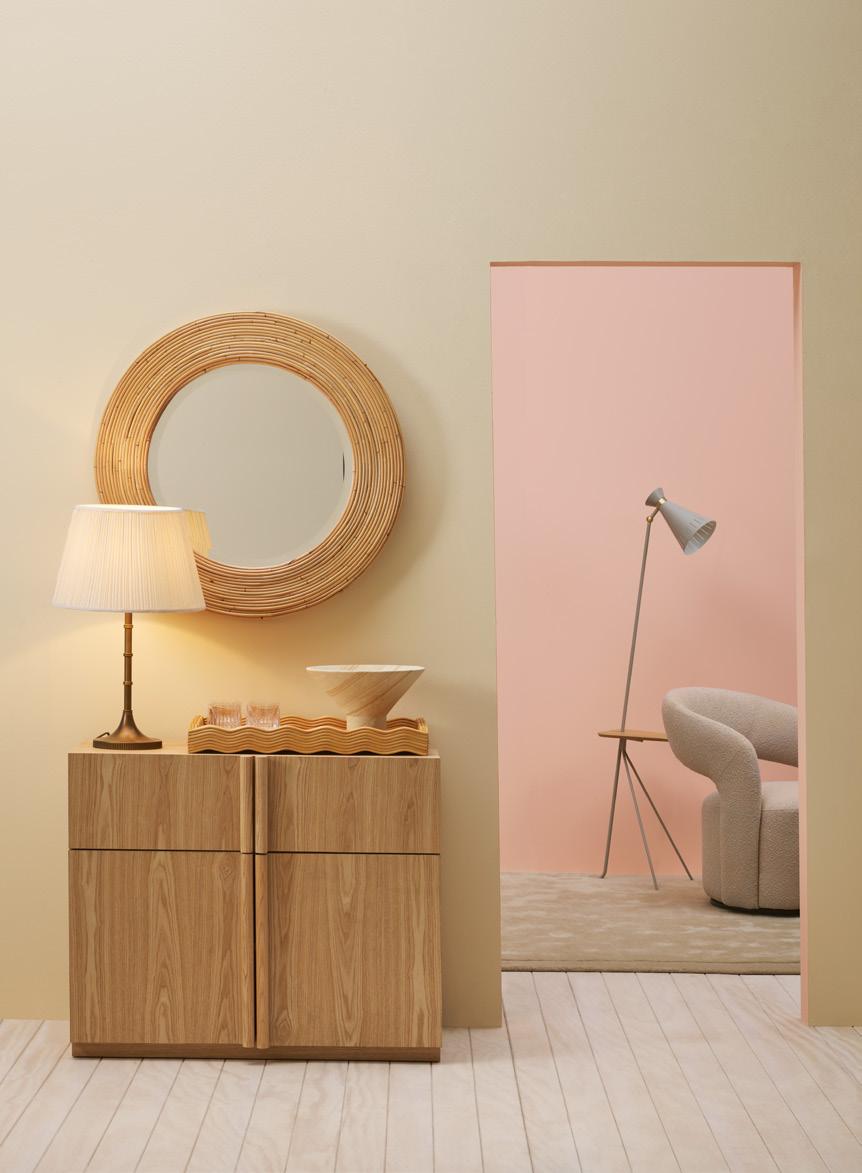
The warm glow of butter yellow pairs beautifully with natural materials like wood, rattan, linen and aged brass.
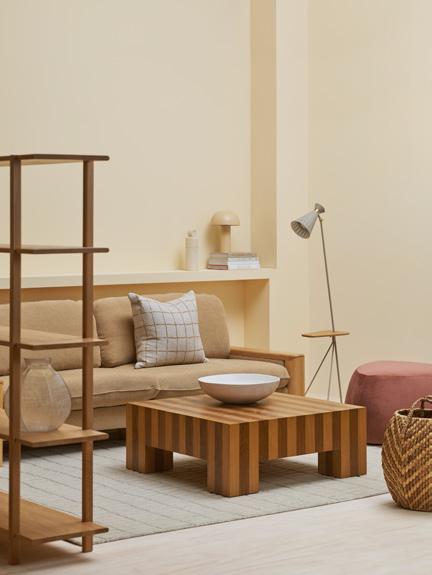
Walls painted in Resene SpaceCote Flat in Resene Buttermilk, floors finished in Resene Colorwood Breathe Easy. Hugo Remy 3-seater sofa, Reese square coffee table, Tolv Farnsworth tall shelf pebble ottoman, Boden Ridge vase, and Easton arch table lamp all from Soren Liv. Safi Ecru floor rug and Harrison ochre cushion from Baya . Cone floor lamp by Warm Nordic and Gidon Bing Nesting bowl from Good Form . Water Hyacinth Gentong Basket from Republic Home. Books stylists own.
Resene Colorwood Breathe Easy.
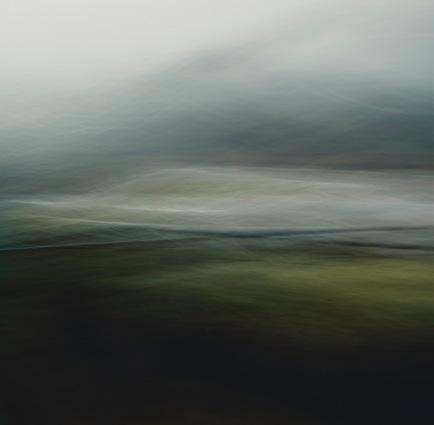


Nature’s earthy hues meet textures of the Mount’s coastal elements in an extraordinary tapestry of architectural brilliance and design aesthetics.
WORDS JO FERRIS
The owners gave a clear brief to local architectural designer Adam Taylor. They wanted the combined allure of a New York loft and beach bach. The New York inspiration is unmistakeable; bach is probably an understatement. This is a sculptural statement on the surface: simple by design, yet utterly complex in its execution, thanks to the skill of award-winning Fairbairn Builders
The level of detail sweeps over a lay person’s head. To specialists, it’s imposing. Nestled in central Mount Maunganui, a few blocks from the beach, this location presented the challenge of a narrow site; but the precious seclusion the owners wanted. This isn’t evident until the home reveals its secrets, highlighted by fringes of towering trees in the rear neighbour’s expansive garden.

This backdrop instils the sense of living beside a forest glade an aspect which extends this home’s intimate connection with nature. The birdlife is breathtaking; resident tuis heralding music in the air.
Enormous banks of floor-to-ceiling stackers form two full walls of glazing that slide either way in disbelief how the cantilevered feature was even possible. It is a design and engineering masterpiece, with massive beams hidden within the structure, including innovative storage on the upper level. A single pole in the crucial corner also disguises the depth of its support.
But back to the beginning. First impressions introduce the simplicity of a home designed around two boxed wings; kerb-side gardens designed to mimic undulating dunes and native plants. The look of what seems like white-washed brick, contrasts with the dramatic darkness of vertical, cedar shiplap, crafted to accentuate intricate illusions and rich vibe of the entire home.
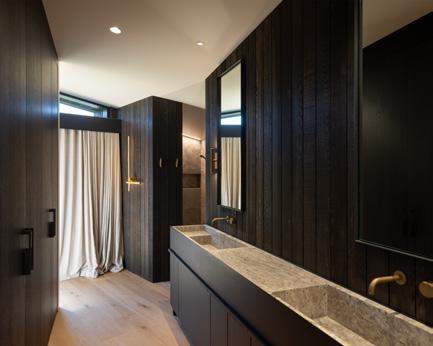



Imported Belgian brick was actually fired this way, and continues its artistic announcement inside. This is where the house unveils its full extent. A soaring atrium enhances the space, while proving one living area is all this home needs to embrace its beach-bach personality. A wall of stacker doors open to an outdoor café lounge; complete with a kitchen barbecue. Louvred, sliding doors offer further choice to either savour the garden ambience, or enclose this area for more intimacy.
While lines between outdoor settings are blurred when doors open wide; once closed and back inside, the stunning appeal of coffee-toned drapes enrich the décor’s artistic palette and subtle lighting. Everything is an accent in design intellect, creative tone and texture. The kitchen is unique deliciously dark; clean lines, integrated appliances and a showcase island. Capped with travertine, its angled shape mimics roofing that tops this home.
Three bedrooms upstairs include a five-star master retreat, placed to capture the best of the gardens below, while a mezzanine bridge leads to remaining


ensuite bedrooms. Personalised in their finish, each opens to a cleverly-designed balcony that gifts individual privacy and views towards Mauao. Stairs also provide access to and from the road, plus an outdoor hot shower when returning from the beach.
Bathroom luxury continues the same tone of the kitchen’s travertine in showers and custom vanities. It pays homage to coastal colours; as does the hydronic-heated concrete floor in family living.
Extensive garaging caters for several vehicles, while a workshop corner, racks for bikes and boards meet the beach lifestyle; EV charging included and a smart laundry reflecting the impressive detail and bespoke finish that instils the elusive moods that dominate everywhere.
With a wine cellar, storage and hidden features, this home epitomises what architectural excellence and fastidious attention to specifics bring to a sanctuary that envelops you within soulful seclusion.
65 Pitau St, Mount Maunganui OLIVERROADBAYOFPLENTY.COM


Harbour serenity meets architectural elegance in this elevated Matua masterpiece, where every window frames a postcard-worthy panorama.
WORDS JO FERRIS
Tauranga Harbour’s diverse fascination fuels its magnetism for anyone yearning to savour scenery and the soothing appeal of water. With the added attraction of Fergusson Park on the doorstep, this property benefits from a wider playground an extension of an already idyllic setting.
Waratah Street’s ridgeline embraces the aura of this rare position, which this home takes full advantage of. North facing, it basks in sun all day. Views stretch across to Matakana Island Mauao to the right, postcard scenery up the harbour, with the Kaimais behind and Coromandel in the distance. Smart design ensures views are centre stage.
The house was built in the 1970s. Not that you’d think so. A substantial transformation in 2010 elevated it to a house with significant presence. The style is contemporary. It’s timeless and focused on scenery. Full-height glazing combines with pill-box features to serve a dual purpose. Raised ceilings enhance space and light in living areas. Floor-length glazing offers seamless connections with the views, while also harnessing solar warmth. At night, lighting comes
into its own, with discreet placement inside and garden features infusing candlelit magic.
This is most noticeable in family living. The kitchen’s sleek lines adopt a futuristic slant, negative detail, refining the clean look. The wall-hung style of the cooking station highlights the bespoke design and allows lighting to hide below the unit for creative effect. Similarly, hidden lighting in the unit above instils further finesse to this kitchen’s individual statement. Cooks will appreciate the scullery and quality appliances. Friends will be drawn to the bar-stool setting. There’s even a dedicated coffee counter for baristas.
Formal dining and family relaxation both have full command of the harbour outlook, while sliding doors open to sheltered decking to enhance the connection. Moods change in the main lounge next door; its vaulted ceiling also enjoying added height and light from pill-box windows. The feature wall housing the gas fire and distinctive cabinetry instil the vibe of a private club, yet eyes turn quickly to the characteristic glass wall. It is another innovative aspect that not only expands the use of natural light; it visually extends this room and introduces the harbour scenery from the foyer.


This grand entrance is also the internal stairwell from the garage below. But the lower level also houses an office, or another lounge, if you prefer. With its own garden courtyard to enjoy time in the sun, there are options for this room’s use.
Three bedrooms sit upstairs, headlined by the master suite, with its direct harbour view. While this bedroom’s deck offers a level of privacy, it handshakes with the larger setting off living rooms next door. The sheltered terrace is the central feature of the various outdoor settings that surround the home a focal point to enjoy the scenery and toast sunset each evening. Two more bedrooms share a luxury bathroom, which is a similar design to the master’s ensuite, with twin vanities and a glassless, wet shower.
Privacy is an integral element of this home. A remotely operated vehicle gate and digital
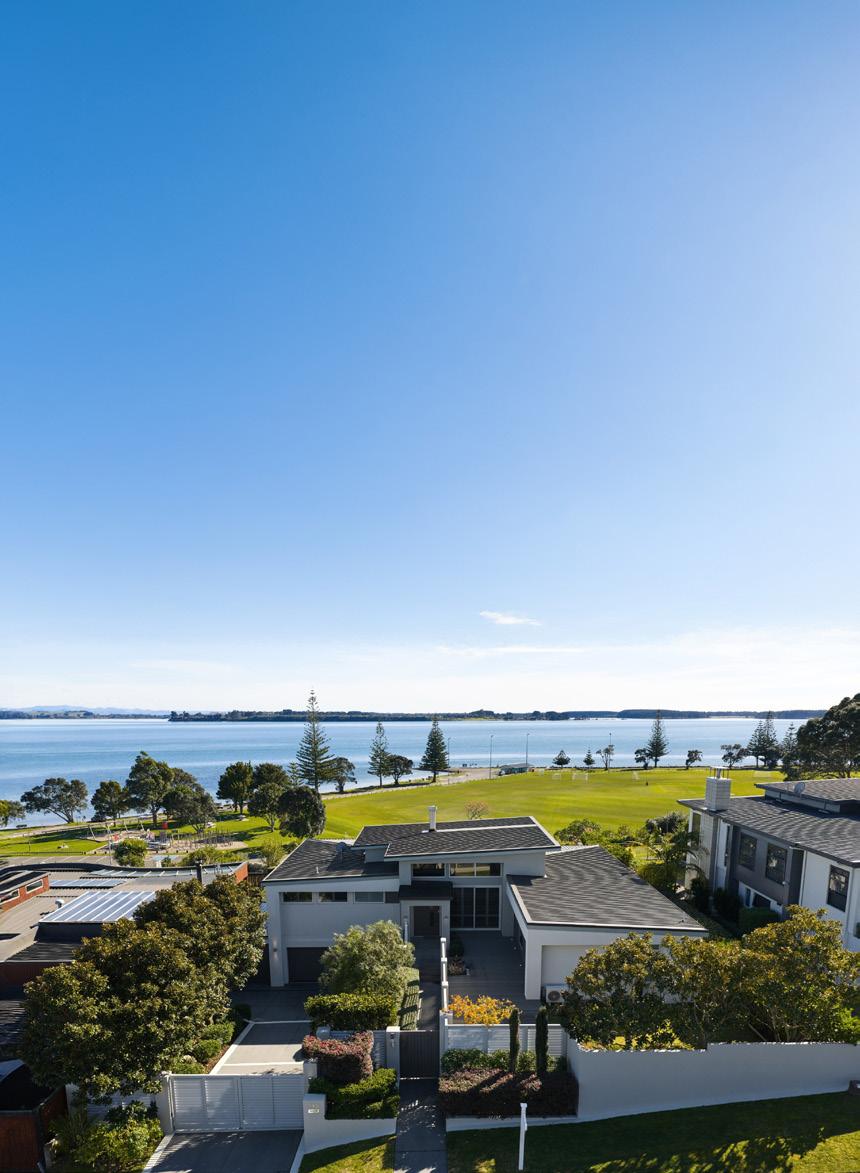

lock on the pedestrian gate ensure security from the street, while a padlocked, personal access to the sloping green belt offers a direct link with Fergusson Park and harbour walkways below.
Immaculate throughout, with attention to detail adding five-star personality to every room, this home nestles within beautifully-landscaped gardens lawns, mature trees, a raised kitchen garden and sculpted plant beds. There’s even a putting green. It doesn’t stop there, however. An enviable list of chattels includes two TVs, four heat pumps, inbuilt sound speakers, an ornamental fountain and irrigation, to name a few.
A home of substance, prestige and captivating views Matua awaits.
145 Waratah Street, Matua OLIVERROADBAYOFPLENTY.COM
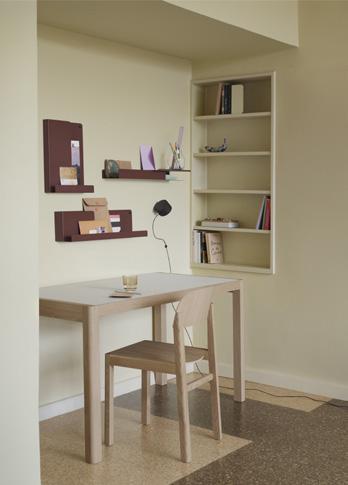


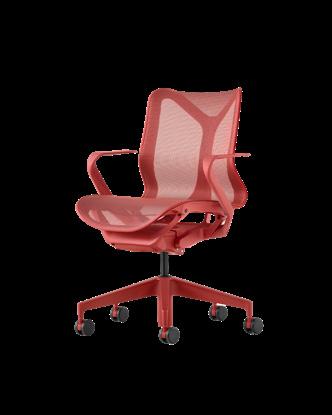


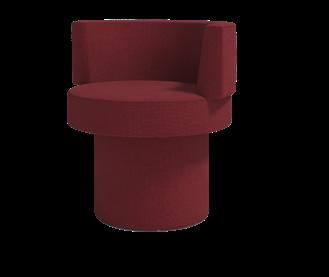
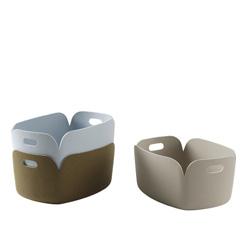

1. Workshop table, $3,524, workshop chair $1,067 both from unisonworkspaces.co.nz 2. Randomito hanging bookcase in Burgundy, $2,945 from matisse.co.nz 3. Cosm chair, $3,490 from matisse.co.nz 4. Overlay runner by Danielah Martinez in Burgundy, $991.73 from designbythem.com 5. Sixty-minute sandtimer in Cinnamon Dust, $52.80 from adadesignstore.co.nz 6. Bench table by Normann Copenhagen, $7780 from backhousenz.com 7. Restore basket, $225 from unisonworkspaces.co.nz 8. Confetti tub chair by Gibson Karlo, $2,005.52 from designbythem.com 9. Framed print ‘Yesteryear’ by Tracy Stamatakos, $2500 from tracystamatakosartprints.com 10. 101 Copenhagen Fungus table lamp in Sand, $649 from frobisher.co.nz 11. Rufus Curve set of two bookends in Cherry Marble, $175 from sorenliv.com 12. Bookshelf by Armando Cabral for USM, POA, ecc.co.nz 13. Three Monthly Planner, $19 from madeoftomorrow.co.nz
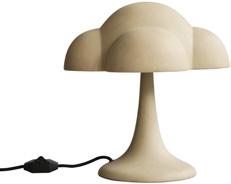
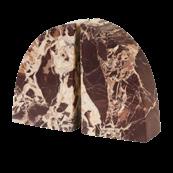


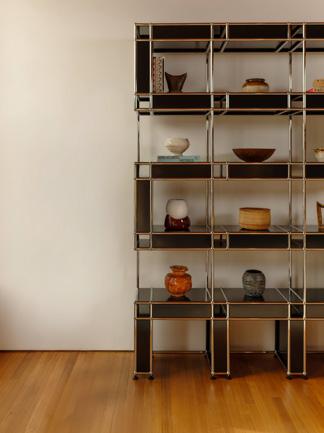


A well-designed office blends function with style. Start with a desk that feels both practical and sculptural, paired with a chair that supports long hours without compromising on aesthetics. Smart storage makes the biggest impact, with built-in cabinetry, floating shelves or modular units that keep essentials hidden while displaying curated pieces. With clutter cleared away and furniture that inspires, your workspace becomes not just a place to work, but a space that motivates and reflects your personal style.


Landmark Homes doubles the potential with a modern duplex design.
WORDS NICKY ADAMS
PHOTOS AMANDA AITKEN
If you mention the horse paddock on Ngatai Road, in Otū moetai Tauranga, most locals will know exactly where you’re talking about. Not many will have driven past at some stage without gazing across the lush field at the stunning view over to the Mount and harbour, and wondered how exactly you go about getting a little piece of this paradise. Just along from here, sharing this jaw-dropping view, is the brand-new Landmark Homes showhome.

With the water glistening as a backdrop, the clean, modern architectural style of the duplex property is eye-catching. At first glance it looks like a single dwelling, however on closer inspection it becomes clear it’s two homes. With an increase in demand for lower maintenance, easy-care living, New Zealand is quickly embracing the benefits a smaller section and a two-level design can offer. Carly Stewart, Landmark Homes Bay of Plenty franchise holder, explains the backstory behind the latest showhome.

“The location was prime real estate with an existing house on it, so essentially the project was a Remove and Rebuild. We loved the idea of a duplex, which, with a fully separate lower floor translates well to lots of different lifestyles. It can be used for anything from guest accommodation to housing extended family, to an Airbnb, which makes it well suited for someone looking for additional income. This obviously in turn increases the value of the property.”
In terms of the site itself, Carly points out: “With sourcing land getting trickier in key areas, we’re seeing more people looking at Remove and Rebuild as an option.”
From the outside the home is undoubtedly sleek; its look is one Carly describes as “contemporary but with the true Landmark Homes bones.” The cladding is pivotal to the appeal, combining an exciting mix of Hinuera stone, timber and brick. Adding a layer of individuality is the way the materials have been used
– the feature timber is a Millboard from Forté, a brand known for its high-quality surfaces. In this case used as exterior cladding, it brings not just a unique, authentic timber grain, but – those magic words any homeowner loves to hear – the benefit of low maintenance. Equally aesthetically adventurous is the Premier brick; in this instance the blocks have been deliberately laid back-to-front to achieve a specific texture and colourway. This look has proved popular, and the suppliers now manufacture a Vintage range brick that replicates this exact texture. The overlaid vertical black screening slatting gives a sharp visual, as well as adding a layer of privacy to the interior.
Entering the home the immediate feel is light, bright and coastal. High ceilings and doors are a signature Landmark Homes feature, however there are elements that elevate this showhome to another level altogether. With a ground floor that could just as easily be used as part of the house or entirely separate from the main property, there is a fully equipped laundry,

bathroom, lounge and two bedrooms. A kitchenette has been factored in, and access to this floor can be gained independently from the primary dwelling. A beautifully landscaped garden has been perfectly manicured by respected local designer Michelle McDonnell; the result is a juxtaposition of lush vibrant coloured foliage against the warm natural textures of this contemporary build.
All two-storey Landmark Homes either feature a lift or allow a shaft for retrofitting. This is no ordinary lift, step inside and the eyes are drawn to the beautiful walls, papered in a textured wallpaper that holds a subtle hint of metallic, adding that immediate element of luxe. The upper floor of the home combines a practical streamlined layout, with clever interior design features. From the floating wooden entertainment shelf to the unique concrete tiles used to create a distinctive kitchen island, the purposeful and decorative aspects unfold room by room. Attention to detail is obvious, from the tiles to the feature lighting; comfort is key,
your feet sink into the softest Okiwi Bay cut pile twist carpet, while eyes are simultaneously drawn to the floor to ceiling windows, clad in beautiful quality white linen curtains. The neutral tones of the decor are the perfect foil to the dramatic view from the large deck, which, with its electric Louvretec roof will allow for maximum al fresco indoor/outdoor living and year-round use.
The design and layout without doubt work perfectly for clients of a spread of ages and stages. Two bedrooms downstairs along with large master and ensuite on the first floor allow for multiple living combinations from couples to families. Landmark Homes prides itself on attention to the little things as well as the construction. “Everything is well thought out for longevity. We factor in the client’s wants and needs when it comes to everything from sustainability to environmentally friendly aspects. There is extra time, care, money and details that all combine to make the end product feel more solid. You can see and feel the quality.”
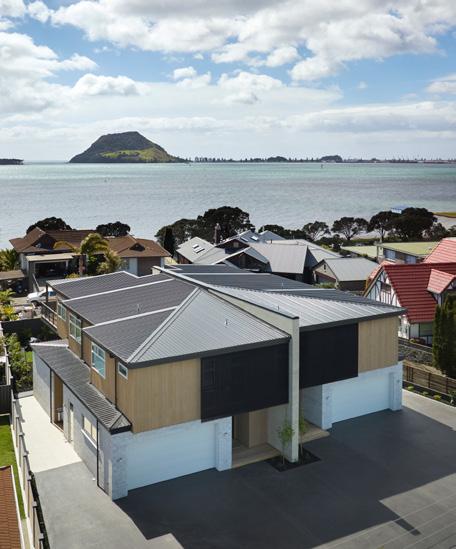
Carly is clearly excited about the direction that the build has taken into the realm of premium duplex. She has seen, she mentions, more and more instances of people looking for innovative solutions to land or financial squeeze. This type of building, she believes, presents a very attractive option; with the solid build and premium acoustic properties ensuring optimum soundproofing, it really does become ‘two homes, one vision of luxury’.
A key service Landmark Homes provides is a no obligation meeting, either at the new showhome, the Tauriko office, the satellite office at Waihi Beach, or on site (even pre-land purchase), where it’s possible for Landmark to give an idea of feasibility. The tight team of trusted staff that her and husband Logan operate within is one that works together to ensure every aspect of the plan and build process is an exciting journey. In addition to the team itself there are the regular contractors who share the exacting standards that Carly and Logan set. The high finish is something that Landmark Homes Bay of Plenty absolutely stands by; in fact, Carly mentions, only half-jokingly, as she runs her fingers over the tile finish to check the grouting: “I’m borderline OCD!” A characteristic that might be considered a real asset when you’re trusted with the quality control of your client’s dream home.
LANDMARKHOMES.CO.NZ




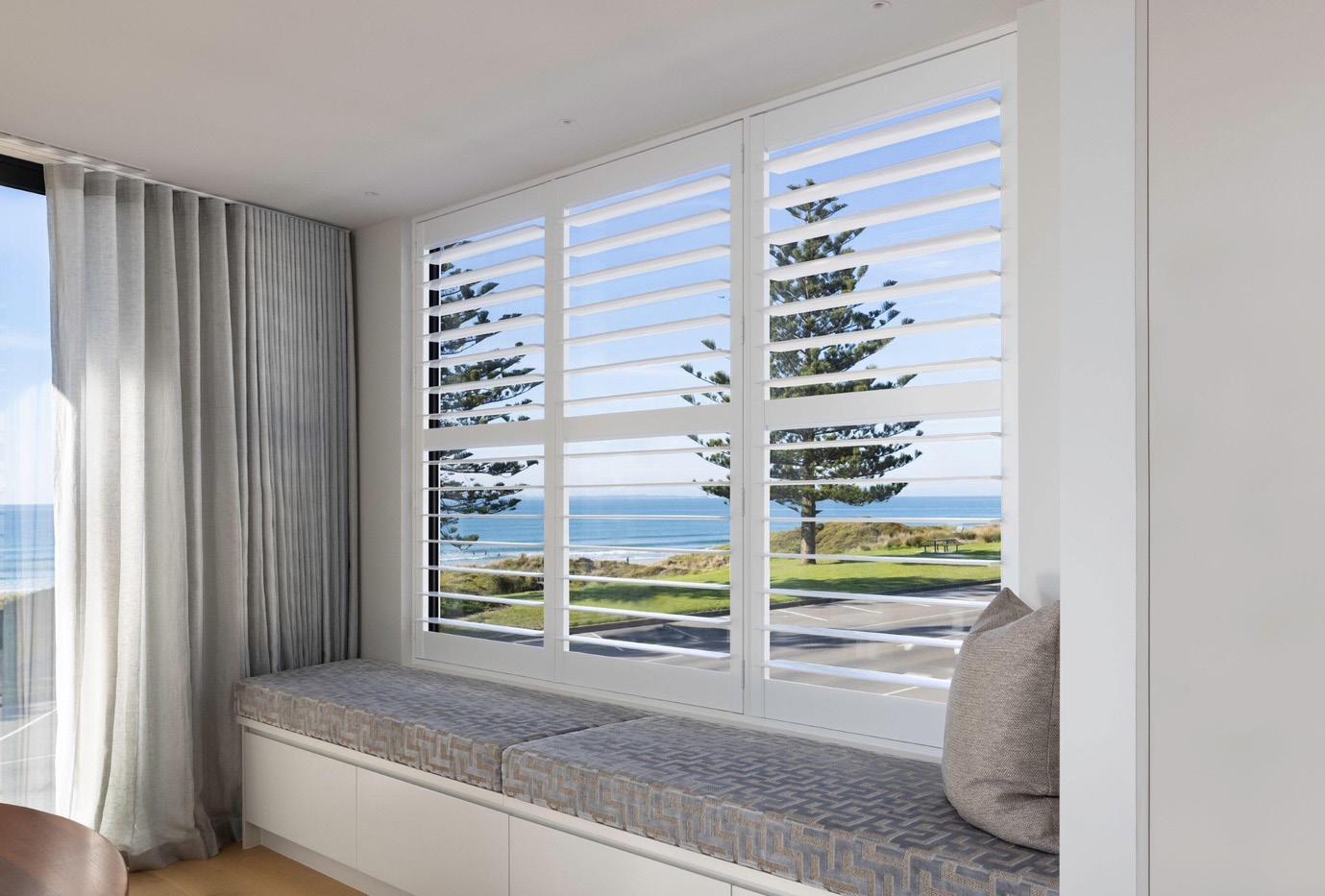
With its bespoke, crafted solutions and radical service, Sorrento Shutters is bringing a timeless elegance to homes across the Bay.
Kane Burton-Brown still remembers the moment shutters first caught his eye. He was walking down a quiet street in London during his OE, when he noticed the sleek look of his neighbour’s bay window. The clean lines and the way the light was filtered made him stop. There was something different about it. Then he realised: it was the shutters.
“I remember thinking, ‘I really like that,’” he says. “It was the first time I’d properly noticed shutters and thought, ‘One day, I want those in my own home.’ After that, I started seeing them everywhere. They just stood
out. They’re beautiful, they’re aesthetic and elegant, and they're very practical in terms of functionality in dealing with light control and privacy.”
It was this random observation that opened his eyes to the window treatments industry and led him to almost a decade helping people achieve that same mix of sophistication and utility that shutters offer. Eventually, this path led Kane to start Sorrento Shutters last year, a company he’s built on his belief in beautiful craftsmanship and genuine service.
“I wanted to bring something to the market where I was comfortable and felt good about what I had to offer,” he explains. “For me, that was the best high-quality


shutters and blinds that I could find paired with what I call ‘radical service’.”
With a smile he admits that, “people are kind of funny with that word radical,” but Sorrento is built on the idea that providing excellent service is radical in our current environment, where downsizing and cost cutting tends to affect the customer experience.
“It’s actually hard to find good service. And I believe good service starts with listening.”
After communicating their vision, Kane assists people through the process to achieve it, helping them with things like colour selection and material of the shutters.
“We do guide them because most people just know they love shutters. They’ve seen shutters in their friend’s home or in a neighbour’s home and they know that they’ve loved the look, so we help them navigate all the options,” he says. “The process is clear and friendly and designed to keep clients in the loop so that they have a clear idea of exactly what’s on offer and exactly what they’re buying. By the time we’ve left, you will know exactly what we can offer you and you will know exactly what it will cost.”
“THEY MAKE A ROOM FEEL LARGER, AND CREATE THAT LUXURY DESIGNER EFFECT.”
You also know that you’ll be getting the highest quality product and craftsmanship. All of their work is bespoke.
“All of our products are custom-made to fit flawlessly. That's part of the elegance of it. Everything just fits beautifully. It’s designed to get that perfect end result.”
But shutters offer more than a striking elegance. They open up spaces, improve comfort, and don’t take up all the wall space, unlike curtains, with Kane saying that “they make a room feel larger, and create that luxury designer effect.”
There are also the remarkable insulation benefits and reduction of condensation, with Kane quoting a 50 percent improvement over blinds. It’s a massive difference, and one he says comes up all the time in the company’s client feedback. This impact is something he’s also noticed in his own home.
“The first thing we did was put shutters in because it was a great way of making the house look a lot smarter instantly. We were going to get double-glazing, but we thought we'd see how it goes with the shutters first. And boy… we will double-glaze the house one day, but that's gone way down the list now.”
Even the name speaks to the thought and care that Kane brings, with Sorrento Shutters being chosen because it sounded timeless and memorable, which matches his view of shutters.
“It had a nice ring to it,” he says, noting that durability and elegance were the qualities he wanted people to associate with the brand from the very first word.
After almost a decade in the game, Kane says he finds the work immensely satisfying.
“I love going into people’s homes, meeting new people and helping them bring their vision to life,” he smiles. “But it’s easy to feel that way when you ’re looking after your customers and they love your work.”
SORRENTOSHUTTERS.CO.NZ

Book a telco check-up with our local team at business.nownz.co.nz or by scanning the QR code. Terms & Conditions Apply. Broadband availability may vary. Keeping Kiwi businesses connected is what we’re
Business broadband, phone solutions & mobile plans to keep your business sorted.
Stories about the everyday passions that drive us.
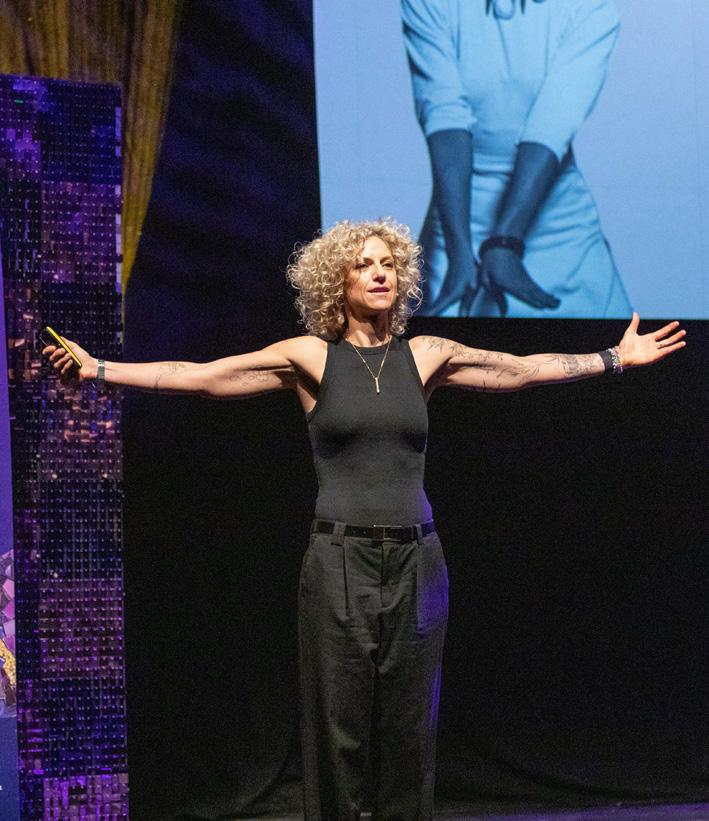
The BWN's inspiring line up PAGE 129
BCH LAW
Legal eagles making a difference PAGE 134
Kate Fenwick explains how and why PAGE 138
Saying no to botox PAGE 136
According to financial pros, the difference can be an emergency savings fund.
WORDS PHILIPPA PRENTICE

Experts agree a key difference between feeling stressed or sorted is an emergency fund and if you ask those at Sorted.org.nz, it doesn’t take much to get started. Some of us do so with just a few dollars, some by formalising our existing financial habits to optimise our outcomes, but all of us for our own good.
One thing’s for sure, it pays to expect the unexpected. Unscheduled costs may seem to arrive out of the blue, but truth be told, we know our cars will need repairing, our pets to be rushed to the vet, our teeth filled and our gadgets replaced. We’ll need to shell out for sudden medical needs and travel for tangi.
Just like taking out insurance to protect ourselves from big things, having
emergency money set aside for these types of expenses makes us financially resilient. Credit cards and overdrafts aren’t good safety nets, since they run up debt and come with interest and fees.
Plus, if you haven’t got a dedicated emergency fund, are you even saving? It’s hard to make progress towards other financial goals if it’s derailed every time an unexpected cost comes along.
Whatever your circumstances, the first step is taking the first step. Just do the admin and remember small amounts add up, so if necessary, shuffle your budget or sell stuff you no longer need to kick things off.
It helps to know the hallmarks of successful emergency savings funds:
1. They’re automated. Build your fund via automatic payments that funnel the money away every payday before you have a chance to miss it.
2. They’re separated. Use a no-fee, high-interest account that rewards you for not making too many withdrawals or is with a different bank to your everyday money, keeping it out of sight, out of mind.
3. They’re easily accessible but mostly untouched. Use your fund only in a genuine emergency.
Sorted recommends starting with an emergency savings goal of $1000, then increasing it to cover three to six months of expenses, but even smaller amounts like $50 can really help when you’re new to all this.
Along with freedom and flexibility, a bonus of your emergency fund is the enforced savings. Reach your target and you can siphon off some money to put towards other goals, investments or your mortgage.
Strung out today? Take action for tomorrow. You’ll be amazed how it makes you feel.
SORTED.ORG.NZ



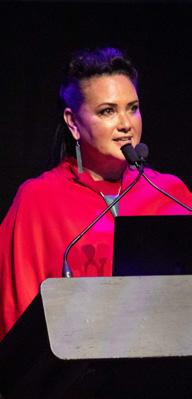
The BWN Speaker Series 2025 lit up Tauranga with some big names, bold stories and infectious energy.
When actor Robyn Malcolm, global thought leader Cassie Roma, broadcaster Toni Street and fashion designer Kiri Nathan are all on one stage you know something special is about to happen.
This year’s Business Women’s Network (BWN) Speaker Series brought together an extraordinary lineup of inspiring women, each sharing stories of resilience, leadership, creativity and confidence. Held at Baycourt Theatre in Tauranga, the 2025 event was the largest and most dynamic BWN event to date, drawing 450 attendees for a day of insight, empowerment and connection.
Toni Street opened the programme with a raw and heartfelt talk on navigating personal hardship, and how sharing your story can foster deep human connection. Kiri Nathan followed with her journey of cultural identity and purpose, offering a moving reflection on what it means to lead with authenticity.
Then came the laughs. Robyn Malcolm delivered a sharp, witty and candid talk that had the audience in stitches while also reflecting deeply on the power of living truthfully at every stage of life. Rounding out the speaker sessions, Cassie Roma brought electric energy to the stage with her call for women to lead with kindness and back themselves unapologetically.
The event theme ‘Unstoppable: Owning Your Story’ pulsed through every talk. Throughout the day, MCs Jase Reeves and Sam Wallace from Coast FM’s Morning Show kept the energy high and the atmosphere light, weaving fun and warmth through the entire experience.
Guests were welcomed with drinks and canapés before exploring the upstairs Connect and Nourish Hub, where a fresh, vibrant lunch was served alongside sponsor activations and tastings from local vendors.
Downstairs in the Style and Sip Lounge, the focus was on fashion, flair and indulgence.
Guests browsed Kiri Nathan’s garments and pounamu designs, enjoyed makeup touch-ups, sipped coffee and wine, and soaked up the relaxed, elegant atmosphere.
This year’s Speaker Series was more than just an event it was a celebration of women showing up, owning their stories and lifting each other up.
Tauranga Business Chamber offers a heartfelt thank you to the sponsors who made it all possible: principal partners Cooney Lees Morgan and Craigs Investment Partners, alongside partners Coast FM, KingSt Design, Hatch Consulting, Kale Print, Port of Tauranga, Rentlink Property Management, Toi Ohomai and Westpac. And to the hundreds of women who attended: thank you for being part of it.
The Business Women’s Network is a part of the Tauranga Business Chamber.
Karl Puschmann tries out the latest and greatest gadgets.

Even for a tech enthusiast like myself, the thought of downloading an app for a toothbrush gave me pause. Toothbrushes, in one form or another, have been around for thousands of years and have never previously required a Bluetooth connection to work optimally. Is it really necessary?
The first thing you do after opening the slick packaging of the futuristically sleek new Oclean X Pro Digital Sonic Electric Toothbrush is scan a QR code and download the Oclean app. Once your account is set, you choose which of the two included heads you wish to attach (‘Delicate’ or ‘Plaque Control’ for serious cleaning), then you’re ready to get brushing.
Boasting a powerful 84,000RPM motor, the X Pro does a superlative job of leaving your mouth feeling dentist-clean. A touchscreen built into the handle lets you choose from the three cleaning modes: a 3-minute deep clean, a 2-minute gentle clean or a customisable option you can tailor to your personal brushing routine. I’ve been using the deep clean mode, and the X Pro obliterates that furry feeling, leaving my mouth bright and fresh. A nifty feature of the touchscreen is that after you’ve finished cleaning, it shows you which of the eight mouth zones you missed or didn’t clean enough. It also awards you a cleaning score to gamify brushing your teeth. The app breaks this information down further, tracking your cleaning progress and score, and even reminding you when you need to replace the head.
I’ve been impressed with the Oclean X Pro. Its score-based system turns a daily chore into a fun challenge, its brushing feedback helps me stay on top of my oral health, and the clean, refreshed feeling afterwards is seriously satisfying. It makes me wonder how we lasted thousands of years without an app for our toothbrushes. RRP$255 from OCLEAN.COM.AU

If, like me, you find traditional dental floss unpleasant, this is a fantastic, if expensive, solution. This small portable device sprays a burst of pressurised air and water between your teeth and along your gums to provide a deep and effective flossing clean. With three modes to choose from, I’ve found the A10 gentler and far more refreshing than dental floss.
RRP$255 from OCLEAN.COM.AU
It may look like something out of an Alien movie, but each of this electric massager’s 10 arms will soothe away your stresses with its vibrating pads. Designed to mimic the movements of a masseuse's hands, there are four different massages on offer, and you can even play calming music via Bluetooth. It may look like an octopus is attacking you, but you’ll be too relaxed to care.
RRP$72.90 at ORTOREX.NZ

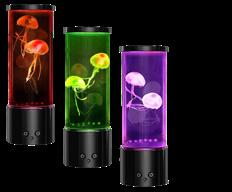
Remember when lava lamps were the go-to chill-out gadget? Well, this Jellyfish Mood Lamp can be considered the new wave as a soothing night-light for kids or a quirky desk companion. Simply fill with water, drop in the two included jellyfish and then enjoy the mesmerising, low-maintenance vibes in a soft LED glow.
RRP$39 at MIGHTYAPE.CO.NZ

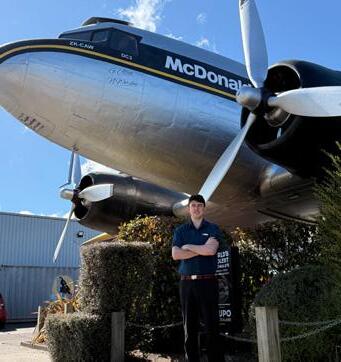
Young Kiwis are flipping expectations while quietly growing into tomorrow’s leaders.
Walk into any McDonald’s across the country and you’ll find something remarkable happening behind the counter. Teenagers and young adults are managing teams, solving problems on the fly, training others, and picking up life skills they’ll carry long after they leave.
As one of Aotearoa’s largest youth employers, McDonald’s employs more than 10,000 people across the country, with around 70 percent of them being under 25. While it’s often seen as just a stepping stone, what’s becoming increasingly clear is that Macca’s can be the launchpad for something much bigger.
Seventeen-year-old Hamish Lawes, from McDonald’s Fenton Street Rotorua, is proof of just how far a young person can go when given the tools and encouragement to grow. Having joined the crew a year ago, the John Paul College student and avid musical
performer, was drawn to the flexibility Macca’s offered.
“I liked the hours and the team,” he explains. “When I started, I thought I’d come and get the job done, but the more I learned, the more I realised how much opportunity there actually is.”
He’s now assistant shift manager, preparing to take on the shift manager role, and will soon be attending McDonald’s Advancing Your Leadership course.
“I love that no two days are the same,” he adds. “Teaching others different stations keeps things fresh, and the problem-solving skills I’ve gained are things I’ll use forever.”
Down in Taupō, Jaun Odendaal has had a similar experience. At 23, he’s been at McDonald’s for four years.
“I started while I was still in school, just to make some money,” he says. “I enjoyed the job so much I decided
to stay and work up the ranks.”
Now a crew trainer with a hand in kitchen operations and maintenance, Jaun is aiming for a management role.
“It’s not just about flipping burgers,” he says. “For me, being a crew trainer is about understanding people. I like figuring out how they learn and adapting the way I train.” Looking ahead, Jaun adds, “I want to be the best manager I can be for my crew.”
There’s still a tendency to underestimate jobs like these. But, in many ways, what young people learn at Macca’s, including valuable skills like communication, time management and teamwork under pressure, are the same skills that carry them forward in life, no matter what they choose to do.
For Hamish, Jaun and many others, it’s not just a job. It’s where they learned to back themselves.
MCDONALDS.CO.NZ/LEARN/ CAREERS


adviser can save you time, stress and money, while finding the right loan for you.
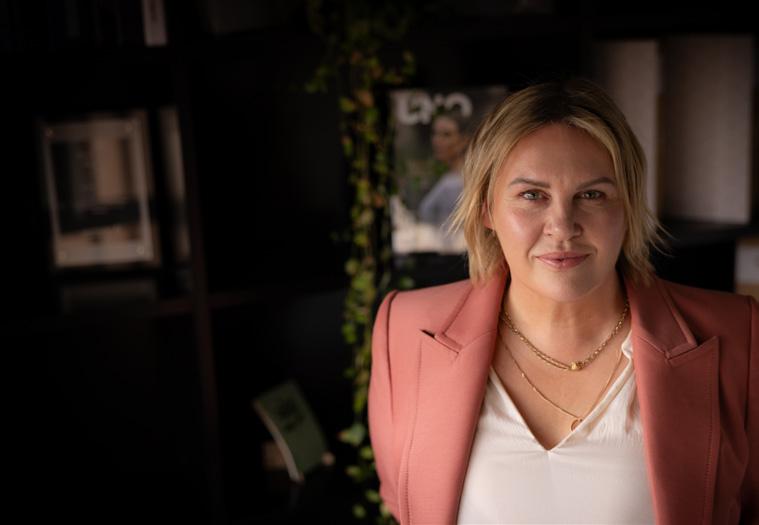
When you're looking at getting a home loan, working with a financial adviser can make a huge difference. Instead of going straight to a bank and being limited to their products, advisers have access to a wide range of lenders, including the big banks, non-bank lenders and even some specialist providers. That means they can compare a bunch of different mortgage options and help you find one that actually suits your situation.
They also know the ins and outs of lending policies, so if you've been declined or hit a wall with a bank, they might be able to challenge that decision or clarify things to get you across the line. It’s not just about finding a loan. It’s about finding the right one and getting it approved.
Advisers take the time to understand your financial goals, your current situation and how comfortable you are with risk. Whether you're buying your first home, refinancing or investing, they’ll tailor their advice to fit your long-term plans. And because they’re not tied to
any one bank, they’re working for you and not trying to sell a specific product. They’ve got access to all providers and all products, so you’re getting a full view of what’s out there.
Another great thing is that they stick with you beyond the initial loan. When your fixed rate is up for review, they can help you reassess your options, refinance if needed or even plan your next move if you’re thinking about investing. They’re a solid resource to have in your corner throughout your financial journey.
The best part is that most mortgage advisers are paid by the lender, not by you. So you get all that support and expertise without having to fork out extra fees. That said, it’s always good to ask how they’re compensated, just to keep things transparent.
In short, having a financial adviser on your team can save you time, stress and money. They know the market, they know the process and they’re there to help you make smart decisions. If you're thinking about a home loan, chatting with an adviser is definitely worth it.
RAPSONLOANS.CO.NZ
“IT’S NOT JUST ABOUT FINDING A LOAN. IT’S ABOUT FINDING THE RIGHT ONE AND GETTING IT APPROVED.”

Five years on, BCH Law continues to deliver trusted, down-to-earth legal support with a team clients know and rely on.
Walking into a lawyer’s office can often feel daunting. But for many who step out of Burley Castle Hawkins Law in Tauranga or Te Puke, there’s a noticeable sense of relief.
The team at BCH Law are known not just for their legal expertise, but for their calm, grounded approach to often complex and stressful situations. With decades of experience between them, they’ve built a reputation for solving tricky legal problems without losing sight of the human side.
“We are grounded, normal people who live grounded, normal lives,” explains director Nikki Burley. “We want our clients to know everything is under control and they’ve got someone on their side.”
Nikki is one of the most highly-respected and longestserving lawyers in the Bay, and has been involved in several partnership arrangements during her 35-year career. But her dream was to own a firm that was bigger than just the name on the door.
“I wanted to run a law practice that wasn’t about any one person – a firm that had a good reputation and solid systems in place so every team member can provide excellent service to clients whenever they need help.”
Senior lawyers Tom Castle and Holly Hawkins shared that vision, and went into partnership with Nikki in 2020, followed by senior lawyer Jude Spicer in 2024. BCH is now celebrating its fifth anniversary, and while five years have zipped by, the firm has many decades of legal experience to draw on.
Several of BCH’s 34 staff members have worked together for over 25 years. The firm’s outstanding team of lawyers, legal executives, and support staff, handle business, family, property, trust and estate law along with litigation and mediation. “Our assurance to clients is ‘life is a journey – with you all the way.’ Whether you’re a first home buyer, a property developer, or someone who is in the midst of a complicated employment dispute or messy relationship breakdown, we’re here to support you.”
The four directors, whose ages span four different decades, each specialise in different areas of law and have a close working relationship. They are ably supported by senior associate Brittany Ivil and practice manager Deborah Palmer. “It’s wonderful having
such diverse ages and opinions, and collective shared responsibility,” Nikki says. “I feel very lucky to work alongside such wonderful people and to see them grow wise and flourish in their own legal careers.”
While most staff are based in BCH’s Tauranga office in Monmouth Street, the firm also has a Te Puke office in Jellicoe Street. In 2018 Nikki's former partnership bought long-standing Te Puke law firm Manning Gibbs Brown, which now trades under BCH. “We are Te Puke’s only full service law firm and cater for everyone from elderly clients wanting to update a will, to clients needing to be represented in court matters, to multi-million dollar kiwifruit and farming operations,” she says.
“The thing I love most is that every single day is different. Every person and problem is different. You can learn so much from your clients and your staff. Law makes you think objectively and ethically, and many of my clients have become good friends.”
BCH’s five-year milestone is also an opportunity for Nikki and her colleagues to reflect on where the firm is heading next.
Fellow director Holly Hawkins says stability and longevity are shared goals, and the firm is proud to offer such a wide and diverse range of legal services. “What I love is that we don’t pigeonhole ourselves. Every file is so different.”
It’s also significant that the majority of BCH’s leadership team is female. “There are lots of excellent female lawyers, but not many make partnership. We’ve got three female directors and we genuinely care about our staff and our clients. We provide a lot more flexibility than other law firms do.”
Community connections are also a priority at BCH, with all four directors actively involved in school boards, trusts, sports coaching and many other good causes. Nikki also holds a voluntary position with the NZ Law Society.
While she isn’t retiring anytime soon, BCH will be in good hands when the time is right for Nikki to step back from directorship. “She is well-respected and such a hard worker,” Holly reflects. “She set out to create a firm that serves clients well, where great staff can flourish.” She’s definitely succeeded in that, and we are all proud of the firm BCH has become.”
BCHLAW.CO.NZ
“LAW MAKES YOU THINK OBJECTIVELY AND ETHICALLY, AND MANY OF MY CLIENTS HAVE BECOME GOOD FRIENDS.”
Hayley Bath takes a wrinkle-filled stand against the pressure to freeze by embracing her unapologetic laugh lines.
If Hamlet were written in 2025 instead of 1599, the iconic line wouldn’t be “To be or not to be?”
It’d be “To Botox or not to Botox?”.
Last month, I found myself at an event surrounded by a sea of unwrinkled, unmoving brows. Scanning the room, I realised only myself and one other woman were left in the natural-forehead resistance. Even some of the guys had it. I felt like the last raisin in a bunch of juicy grapes.
Now I’m a fairly expressive person. My forehead alone could star in its own play, and these wrinkles are starting to take center stage. Even in my 30s, I see them while doing my makeup, in videos, and sometimes I catch myself smoothing my forehead mid-mascara, just to sneak a peek at the alternate Botox universe me. She looks oddly surprised.
As a voice and face on radio and in the media, I’ve been offered free injectables. Twice actually. From real, professional places promising no wax-figure vibes. Yet, I haven’t done it. Can’t do it. Every time I think, “Maybe it’s time,” but some inner part of me screams, “Over my wrinkled forehead!” Blame personal hang ups, a weird sense of loyalty to my wrinkles or just stubbornness.
So why haven’t I joined the Botox parade? Especially when many people look great with it.
First, the niggle at the back of my head whispers ‘what about my daughter?’. She’s a quiet observer, learning from my life. I don’t want her to feel like she’s got to change or alter herself, because she’ll already be swimming in a sea of filtered, curated and perfectly polished faces online.
Secondly, people die young. Yikes. Apologies, that got heavy fast. My late-cousin sadly never got to have wrinkles. These lines are proof I’m still here. Laughing and squinting at emails I don’t fully read. Wrinkles are my life’s receipts. I’m trying to see them that way.

And, of course, there’s always a little fear stopping me. What if the results aren’t great? I don’t want to end up looking like you could crack a walnut on my forehead for six months. Or what if I get the dreaded eyebrow droop? And we ’ ve all met someone who looks like their upper face missed the memo that their lower face is trying to have a conversation. I like having full facial expressions.
To be clear, this isn’t Botox-bashing. Botox can boost self-confidence, make people feel good about their appearance and even be used for relief from migraines. But for me? This might be the hill I grow old, and wrinkly, on.
I haven’t shouted, “This is my wrinkle revolution!” I want to. But what if, in years from now, I wake up feeling worse for wear and the voice whispers, “Just one little jab…?”. Easy to be bold in your 30s, harder later. Do I have the guts to do nothing? I think so. I hope so.
In a perfect world, everyone would stop cosmetic injectables. Then we’d all be back on an even-aging playing field. But what if we revolted? What if laughter lines became badges of honour and we felt the freedom of not giving a toss? What if looking ‘old’ wasn’t something we avoided?
Until then, I’ll keep stretching my forehead in the mirror, wondering what could be, but probably sticking with what is. Because just like Hamlet, the internal conflict is the biggest battle. Having the courage to leave the sword (or in this case, the needle) could mean surviving all five acts with a face that tells the whole story.
There’s also something bad-ass about letting gravity have a go.
Catch Hayley on The Hits 95FM weekdays 9am to 3pm.
“ WHAT IF WE REVOLTED? WHAT IF LAUGHTER LINES BECAME OF HONOUR
WE FELT THE FREEDOM OF NOT GIVING A TOSS.

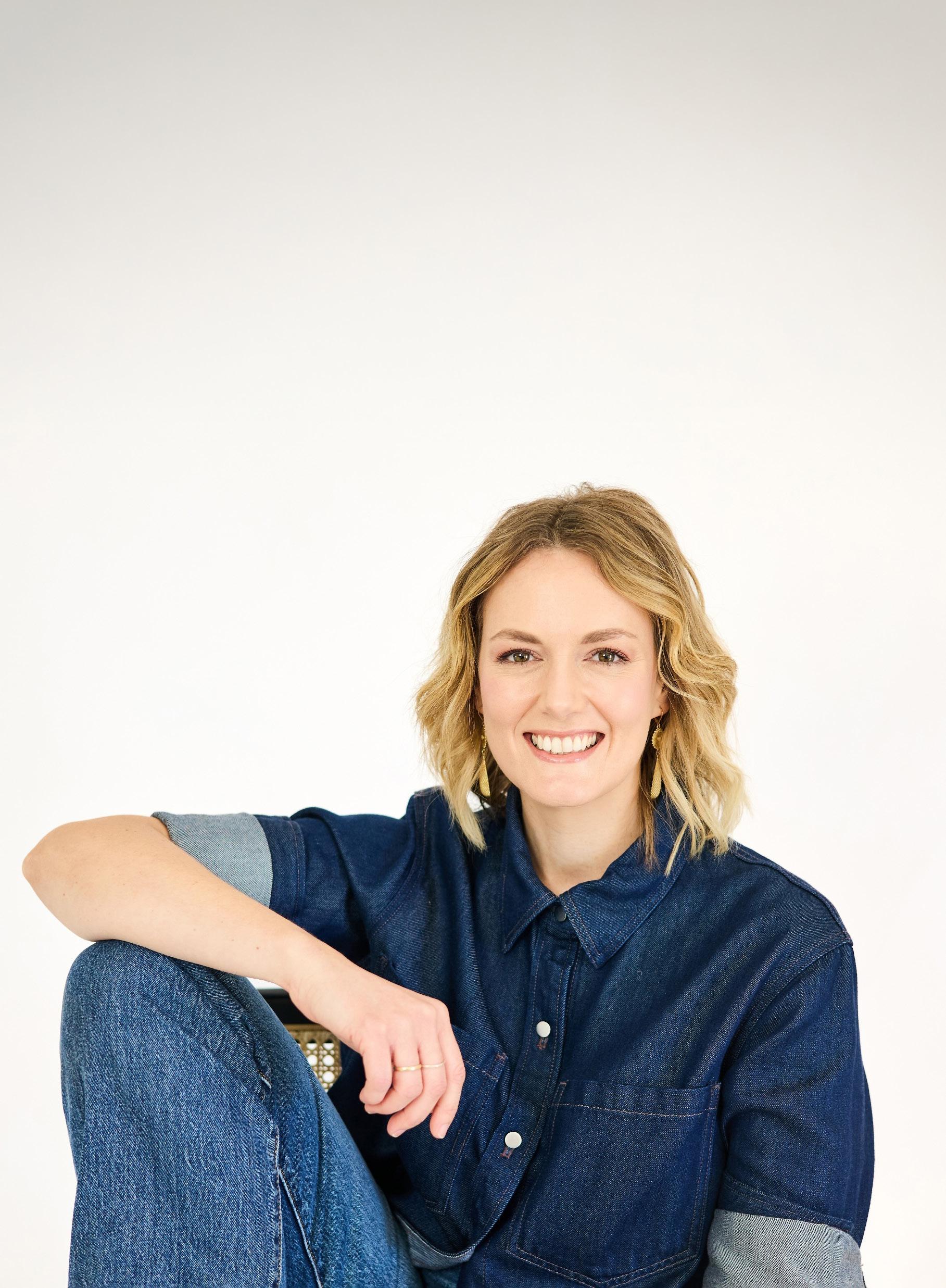


Let’s be real: one of the most common things I hear when talking about recycling is, "Oh, but it all ends up in landfill anyway!" And look, I get it. We’ve all heard the horror stories. But I’m here to tell you hand on heart and wearing my hi-vis vest that recycling does happen in New Zealand. The catch? We’ve got to do it right for it to work.
Think of it like making a smoothie. If you toss in the stickers from your fruit and the plastic bag it came in, you're not going to get a refreshing drink but a lumpy disaster. Recycling works the same way. If you keep the bad stuff out and you get great results. The system relies on us not contaminating the load with things that shouldn't be there. When we get it right magic really does happen. So if you need a little nudge to keep the faith, here are five real-life, right-here-inNZ examples of recycling in action.
Your wine bottles (still not judging) and pasta sauce jars don’t just disappear into the void. They get collected, sorted by colour and recycled right here in New Zealand. Places like Visy in Auckland remelt them into new bottles over and over. Glass is endlessly recyclable.
Think recycling’s a myth? Think again. Discover the real, local proof that recycling works. But only if we do it right.
WORDS KATE FENWICK
That mountain of online shopping boxes? Fear not. Most councils send this to local or Australasian paper mills. They turn it into new cardboard boxes, paper packaging and more. Your recycling bin is literally helping close the loop.
These little legends are sent to places like Glucina Alloys in New Zealand, where they're melted down and given new life. Your cans or even old wheel rims can come back as park benches, bike racks, manifolds or other useful products, proving recycling really does close the loop.
Aluminium is exported for smelting and comes back as new cans in a matter of months.
Clear drink bottles and milk bottles aren’t just wish-cycling dreams. They’re actually recycled in Aotearoa. Flight Plastics in Wellington turns PET bottles back into food-grade packaging. Your milk bottles? They're shredded, cleaned and remade into new containers and pipes.
Yes, even the controversial soft plastics have a second life. Collected through the Soft Plastics Recycling Scheme (those bins at supermarkets!), they’re turned into fence posts, bollards and planter boxes by
companies like Future Post in the Waikato. So your chip packet could be holding up a farm fence someday. How good!
Even those tricky cartons don't have to go to landfill. In New Zealand, collected cartons are sent to SaveBoard, where they're turned into durable building materials like wallboard and ceiling panels, giving them a whole new life.
Let’s
Recycling isn’t perfect, but it’s a heck of a lot better when we do it right. That means rinsing containers, no sneaky food scraps and keeping those recycling bin wish-list items out. If you’re ever unsure? Check your local council’s guidelines or take five minutes to learn what goes where.
Because at the end of the day, when we get it right, we’re not just feeling virtuous, we’re keeping resources in use, cutting down on landfill and proving that yes, recycling absolutely does happen.
Happy (correct) recycling.
Kate has made videos on glass, tyre, aluminium and SaveBoard recycling, and is working to film paper, plastic and soft plastic recycling too.
Kristin Ward , a parenting coach at Parenting Place, shows us how to reconnect, show up and grow stronger together.
It takes a village to raise a child, goes the saying, and I absolutely agree. But I’d add that it takes a village to raise a parent. No one thrives in isolation not parents, not children.
Being part of a village isn’t just about receiving support, it’s also about showing up for others, which is a great thing to model to our kids. It could look like offering to drive another child to Saturday sport one week, to take some pressure off their parent who seems pretty hassled. Or buying some fruit for the neighbours who have all got the flu. Or looking after a few cousins in the school holidays to help out their working parents.
A meta-analysis from Brigham Young University found that strong social connections increase our chance of survival by 50 percent. Researchers found that low social interaction was as harmful as smoking 15 cigarettes a day or being an alcoholic. It was more damaging than not exercising and twice as harmful as obesity. In short: human connection is vital to our wellbeing.
The transition to parenthood can be a shock, hence why social connection is especially important in those early weeks and months.
A strong village includes friends our own age, parents who’ve just been through it, and elders with years of wisdom.
New fathers are also at risk of postnatal depression and anxiety, even more than most people realise. Dads just because you’re a parent, doesn’t mean your days of
hanging out with your mates are over. In fact, you probably need them more than ever. And when you gather and banter, make space for real talk too about parenting, relationships and what’s hard right now.
Some of the best connections are the ones we don’t plan. Laughing with another parent outside school about the pressure of Book Week costumes, or rolling the bins out at the same time as your neighbour and stopping for a chat. Even bumping into a new mum friend at the supermarket and checking in on how you’re both coping.
These spontaneous interactions boost wellbeing. Plus they don’t require tidying the house or sending a calendar invite. No mental load whatsoever! But, to make the most of them, we need to be interruptible. We need to slow down and embrace the pause.
Of course, intentional connection matters as well. And it can be simple things like a fish and chips night with another family or inviting another parent in for a cuppa while your kids have a playdate.
Social connection often falls to the bottom of the list when we’re busy but we can’t afford to let it slide. We need to prioritise it just like we do sleep, exercise and nutrition. Our health, happiness and sense of belonging depend on it.
So ask yourself: Who’s in your village? And just as importantly: who needs you to be in theirs?
Ēhara tāku toa i te toa takatahi, engari he toa takitini.
My strength is not that of one but of many.
PARENTINGPLACE.NZ























Hit the road and explore our surrounding treasures.
A journey of spirit and colour
PAGE 148
Rolling through the East Coast loop
PAGE 142
Layers of discovery in Seoul
PAGE 150


Somewhere past Ōpōtiki, where the coastline starts its slow exhale and State Highway 35 begins to wind and dip like it’s dancing, you’ll find a different rhythm. Welcome to Tairāwhiti Gisborne.
Need a change of pace? This East Coast loop from the Bay of Plenty to Gisborne and back through the Waioeka Gorge is the kind of trip that offers wide roads, coastline and a few surprises along the way. Give it three or four days, and you’ll get much more than you bargained for, along with some very decent stories.
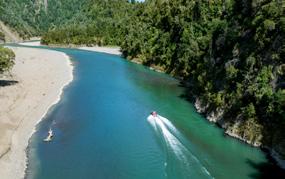
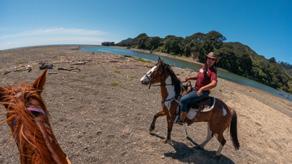
ONE: RIVERS, HORSES AND THE OPEN COAST
Hit the road early from the Bay and follow the coast east. By mid-morning, you're in Motu country, with its remote, green landscapes and winding rivers. Hop on a jet boat with Motu River Jet for a ride that’s part thrill, part history lesson.
Next, swap horsepower for actual horses at Standfast Horse Treks in Te Kaha. These aren’t your standard tourist trails. You’ll cross rivers, ride through native bush and get a salty breeze off the sea. Go for a short trek or stay overnight and wake up to birds and surf.
Stay: Stay in Te Kaha, Waihau Bay or Te Araroa, which has a range of accommodation options from hotels, motels, holiday parks and baches.


The drive to Gisborne along SH35 isn’t long, but you’ll want to stop often. The route passes through quiet bays and towns like Waihau Bay and Tokomaru Bay, where everything moves slower, but in a good way.
As you head down the coast, pull into St Mary’s Church in Tikitiki, then be sure to try a pāua pie in Tokomaru Bay before continuing south to walk along Tolaga Bay Wharf.
BONUS ADD-ON: If you’ve got time, book a guided tour up Maunga Hikurangi near Ruatoria. It’s one of the first places in the world to see the sun, and the mountain has deep cultural significance to Ngāti Porou. Stand among the sacred pou (carvings) and watch a once-in-a-lifetime sunrise unfold before you.
Once in Gisborne, head to Dive Tatapouri for a close encounter with wild stingrays on the reef. No tanks or tricks, just wading into their world. Later, head
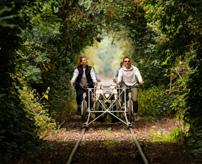
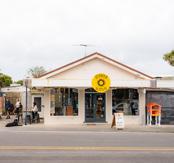
inland to Eastwoodhill National Arboretum, home to over 135 hectares of diverse, world-class botanical collections.
Stay: From boutique motels and vineyard cabins to farm stays and holiday parks, Gisborne has a great range of places to stay. Or keep it coastal and fall asleep to the sound of the surf.
If you’re up early, start the day with a famous East Coast sunrise. There’s nothing quite like it. Afterwards, ease into a leisurely brunch at Flagship Eatery or Zephyr in Wainui, both beloved local favourites. Experience Gisborne Railbikes and pedal along a disused railway line, winding through orchards and soaking in stunning coastal views.
Enjoy an afternoon at one of the local wineries. Matawhero, Wrights and Bushmere Estate each offer unique tastings and mouth-watering food to enjoy.
Evening: Try one of the many amazing dining options, such as Crawford Road, Tahu or check out a unique evening experience at Dome Cinema.
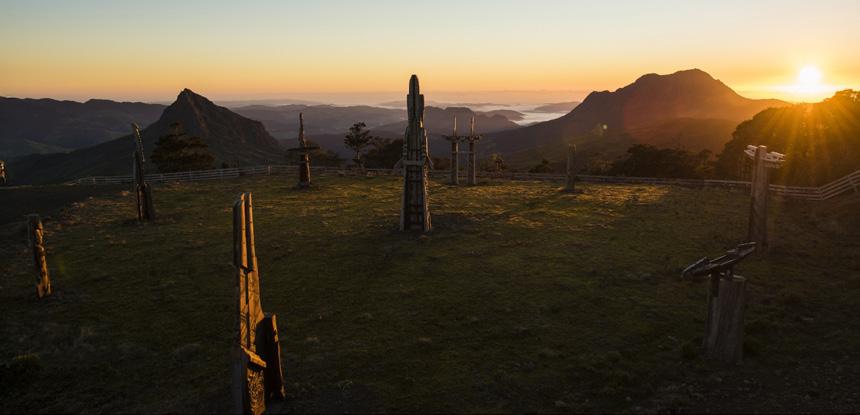
“ STAND AMONG THE SACRED POU... AND WATCH THE SUNRISE UNFOLD BEFORE YOU. ”



Loop back to the Bay through Waioeka Gorge, where the road snakes between thick bush and river cliffs. It’s a scenic end to a trip that packs more into a few days than you'd expect.
TAIRAWHITIGISBORNE.CO.NZ
• Bring layers, swim gear, decent shoes and a curious attitude.
• Choose your level of comfort. Accommodation ranges from campsites and retro motels to lodges.
• If you’re going during summer or school holidays, book ahead.
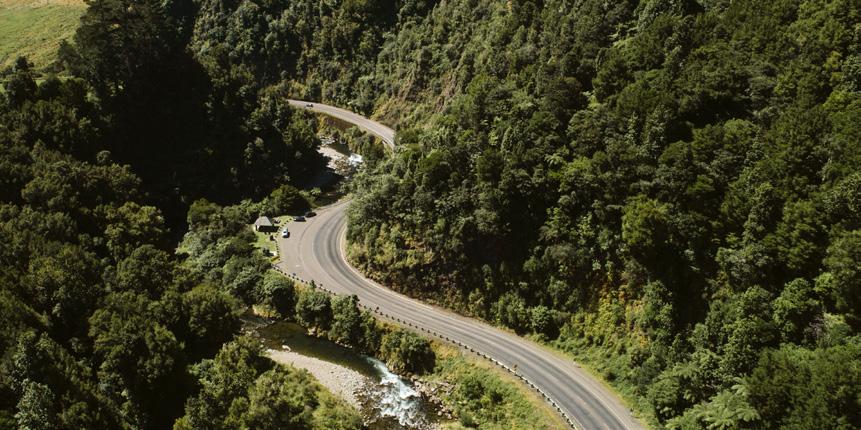
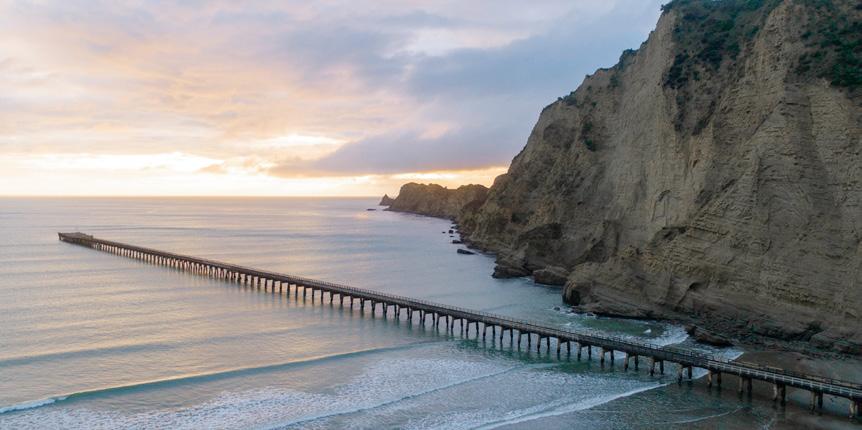
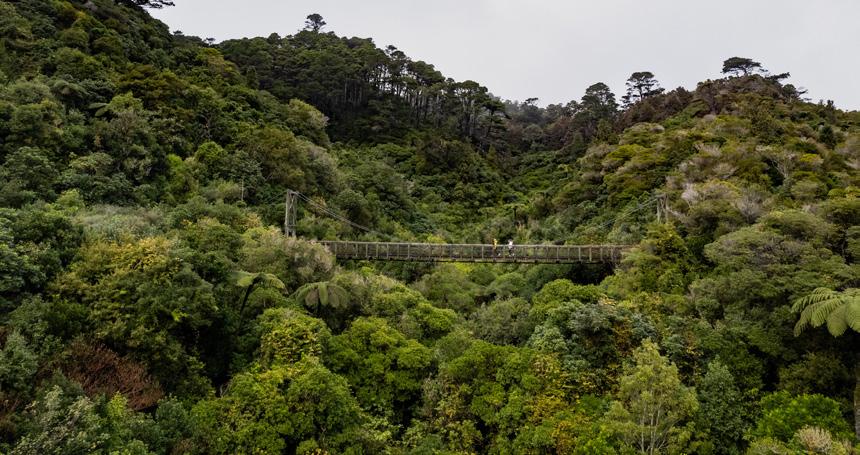
Escape the city buzz and immerse yourself in wild beauty at Wellington’s lush, predator-free haven.
Wellington is a thriving metropolis, seat of government and a vibrant capital of corporations, culture and coffee. In complete contrast it also boasts the world’s first fully fenced urban ecosanctuary.
You would not expect to find 225 hectares (more than 500 acres) of regenerating forest and rare birdlife within a few minutes’ drive of Wellington’s CBD. This is Zealandia Te Māra a Tāne (The Garden of Tāne Māhuta, the Māori god of the forest).
The idea of protecting Wellington’s biodiversity began in the 1990s with a plan to manage the preservation of the national assets of the city. Its theme, “Bring the Birds Back to Wellington”, was the inspiration for Zealandia, a sanctuary that is doing exactly that.
The decommissioning of the Karori reservoir allowed this ambitious project to begin in the valley it occupied. The reservoir, with its historic dam crossing, is now an attractive feature of Zealandia.
Bringing back the birds and other New Zealand native and endemic species required eradicating and preventing entry by the human introduced mammalian predators that have decimated our native flora and fauna over hundreds of years. To restore a valley to its pre-human state does not happen overnight, hence Zealandia’s far sighted vision. The defining feature was

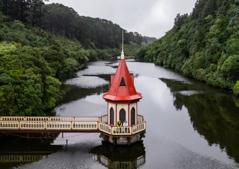
the construction, in 1999, of an 8.6 kilometre-long predator exclusion fence completely surrounding the sanctuary.
Thanks to the fence, and to community conservation efforts like Predator Free Wellington, the 500-year project has progressed dramatically in just 25 years.
Wellington is one of the only cities in the world where bird biodiversity is increasing. Tūī and kererū, once rare, are now an everyday sight around the region.
Kākā and kārearea (NZ falcon) are now commonly seen in the city and nearby suburbs.
Zealandia’s vision would not be possible without support, funding and sponsorship. Visiting also contributes to the ongoing conservation work.
So, if you are in Wellington, take a break for a walk in the bush where you will hear only birdsong and where you can witness rare native birds like the hihi (stitchbird), tīeke (saddleback), kākāriki (NZ parakeet) and takahē and see prehistoric tuatara sunbathing.
If you take a guided night tour, you may spot the kiwi pukupuku (little spotted kiwi), some 200 of which now call Zealandia home.
Free shuttles to Zealandia leave from Wellington’s isite and the top of the cable car.
VISITZEALANDIA.COM

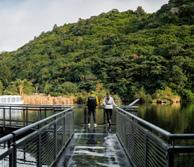
girls’ golf getaway to Ōhope and Whakatāne serves up the ultimate weekend escape.

Planning a girls' weekend that mixes great golf with good food and a bit of beachside downtime?
Ōhope and Whakatāne deliver the goods, whether you're a near-pro or just tagging along for the eats and views.
Tee off and chill out
This trip starts on the green. You’ve got two standout courses close together, each with its own vibe.
Ōhope Beach Golf Links is the kind of course where your phone camera might get more action than your driver. With views of the Pacific Ocean on one side and Ōhiwa Harbour on the other, it’s a
classic links course with a relaxed pace, plenty of fresh air and a few playful challenges to keep things lively.
Over and around the hill, Whakatāne Golf Club offers something different. It’s lush, tree-lined and loved for its pristine greens. Ideal if you want a slightly more structured round, or to show off your short game.

Ōhope offers beachside motels, modern apartments and the well-loved Ōhope Beach Top 10 Holiday Park, complete with spas and saunas that are perfect after a day of golf or shopping.
After your round, the real fun begins. Start at Fisherman’s Wharf in Ōhope for cocktails and seafood with a view, or head to Moxi for great coffee and brunch bites. The Ōhope Beach Tavern brings the post-golf pub vibes, with a side of ocean breeze. Whakatāne steps it up after dark. Grab fusion dishes and fizz at Cigol, hearty burgers and beers at The Comm, or something more refined (and wine list–friendly) at Roquette. Craft lovers, don’t miss Mata Brewery for a tasting flight and Smokin’ Goose for next-level BBQ.
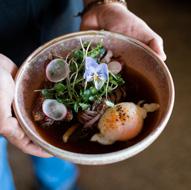
In Whakatāne, stay central with chic motels and easy-access apartments, or find a tucked-away spot if you're craving a quiet wine-and-face-mask night.
Got some downtime between tee times? You’ll find it easy to fill. Boutique stores in Ōhope Village and along The Strand in Whakatāne are great for a slow wander, especially if your crew loves homewares, beachwear and little local gems. For something more active, explore the trails around Ōhiwa Harbour by bike, take a scenic bush walk on the Nga Tapuwae o Toi trail, or soak up some sun along Ōhope Beach. Feeling adventurous? Book a fishing charter or a kayak trip and make some salty memories together.
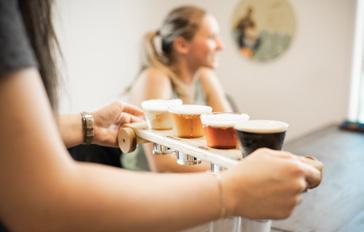
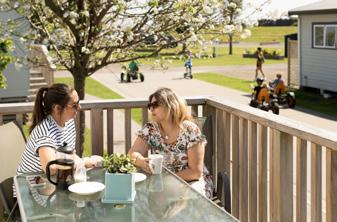

A golf getaway with the girls doesn’t have to be all about the game. Whakatāne and Ōhope serve up the perfect blend of swing, sip, shop and soak, all in one sunny, easy-to-reach package. Whether you're lining up birdies or just enjoying the weekend vibes, it’s a trip worth planning.
WHAKATANE.COM

YOU Travel’s
Brenda
Stephen experienced sensory exhilaration and soulful serenity on a recent Uniworld trip: India’s Golden Triangle and the Sacred Ganges.
WORDS LIZ FRENCH
How to compare the experience of sunrise at the Taj Mahal with that of visiting the Calcutta Rescue Centre that supports children from the slums? “Wonder and awe for one and touched at the heart by the other,” says Brenda.
This is India, land of colour and contrasts, pace and peace. Uniworld’s tour delves right in by pairing the classic golden triangle of New Delhi, Agra and Jaipur with visits to rural communities off the beaten track. This provides a fine balance between the experience of huge cities with fabulous hotels and that of cruising the Ganges, mooring at villages seldom on travel itineraries.
The trip begins on land with five luxurious nights in the Golden Triangle, staying in Oberoi hotels. Each property
exudes its own distinct personality and sense of place which delighted Brenda.
“Agra’s Oberoi Amarvilas has a view of the Taj Mahal from every room and is just 600 metres from the Taj itself,” she explains. “Rose petals wafted from the roof as we arrived at Jaipur’s Oberoi Rajvilas, which is set around an ancient Shiva temple on 32 manured acres.”
The hotels are oases of calm after daily excursions by tuktuk, rickshaw or coach, with local guides, where you embrace the unique architecture, atmosphere and culture of each destination without worrying about the logistics.
Then it’s onto your floating hotel after a flight to Kolkata to embark Uniworld’s Ganges Voyager II, the last word in riverboat luxury. The boat holds 56



passengers, 36 crew and colonially inspired suites with vantage points for watching the light over this everchanging river, sacred and central to life in the fertile and densely populated Ganges Delta.
This is home for the next seven nights. While the ship sails gently up the Ganges you settle into serenity, sip cocktails on the deck, dine on an Indian and international menu with ingredients from the local villages you visit enroute and even learn Indian culinary skills in cooking demonstrations. Informative nightly talks prepare you for your daily adventures, which include a river port dating to 1809 with magnificent Hindu temples, an authentic artisan market in a riverside village and the “Garden of Happiness”. Local guides complement the vast knowledge of the onboard experts.


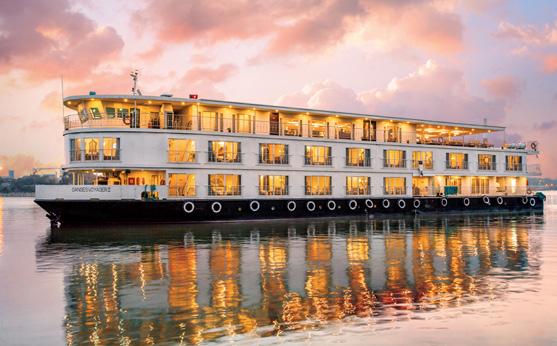

“A BIG TAKEAWAY FOR ME WAS THE SPIRITUALITY OF THE PEOPLE AND THE JOY IN SIMPLICITY.”
Happiness is also wellness on the Ganges Voyager II, with daily yoga classes on the sundeck and Ayurvedic spa treatments and massages. “Very soothing after a day’s sightseeing!” Brenda enthuses.
At YOU Travel and Cruise the experienced staff are not about enabling you to simply tick off your bucket list. The question, “What do you want to get out of it?” is as important as, “Where do you want to go?”
If India really appeals, but you are a little apprehensive, and if you want to revel in its infinite variety without sweating the small stuff, group travel is the answer. Uniworld’s boutique itinerary exposes you to India’s myriad of sights, smells and
sounds while providing a peaceful refuge to recover and recharge ready for the next foray into the unknown, with every detail thought of.
While this journey only covered a small corner of India, it has whetted Brenda’s appetite for more. “Because I was with a group, I did not find it daunting, quickly becoming comfortable with India’s ‘normal’,” she says. “Despite the luxury aspect of this tour, a big takeaway for me was the spirituality of the people and the joy in simplicity,” she says. “India is like Africa. It gets under your skin.”

India’s Golden Triangle & the Sacred Ganges

• Luxury Uniworld Ganges river cruise
• UNESCO sites, expert guides
• Oberoi hotel stays
• All-inclusive gourmet dining
• Accommodation, transfers, gratuities included
South Korea may not be on every traveller’s radar in Asia but as Jamie Troughton found, beneath the skyscrapers and beyond the gates lies a capital that keeps revealing more, one encounter at a time.
WORDS JAMIE TROUGHTON
It was only on the fourth day in Seoul, when we climbed 270m to the peak of Namsan Park, that we fully understood how insignificant our explorations had been.
Gazing through the haze on another warm autumn morning was a chance to retrace our steps. And there had been plenty of them; 28,000 Garmin-tracked perambulations through the intoxicating South Korean capital on the second day alone.
But our exertions, from what we could see from the summit, appeared pitiful. The ethereal Gyeongbokgung Palace, a 7,700-room 14th-century estate, appeared tiny amidst the office buildings and parks. The 18km Seoul City Wall, encompassing the old city centre and featuring four colossal main gates, seemed to weave a small and delicate thread over the hilly metropolitan terrain.
From our vantage point, everywhere we looked was teeming with city; 360 degrees of skyscrapered, multilayered population. The bit we̓d ‘conquered̓ occupied a couple of degrees of view. We’d daintily dipped a toe into the teeming city waters of Seoul. But what a dip it was.
Tastes, sights, smells, feels, textures and sensations much about Seoul is like an ADHD delight; it's a symphony of over-stimulation.
We based ourselves in the Jung District, the smallest (less than 10km²) and least populous of Seoul’s 25 districts, but still with the population of Tauranga. Our first meal set the tone we crossed the road from our hotel, straight into the sprawling Namdaemun Market, which has been operating continuously since 1414, and promptly got lost.

Twisting and turning from street into laneway, from laneway into alleyway, then from alleyway into impossibly crowded, narrow corridors of colour and aroma; restaurant, kitchen and path all blended into one.
We ate a medley of fried fish with gusto, crunching small bones and experiencing for the first time the culinary magnificence of banchan small side dishes served with most Korean cuisine. From ever-present kimchi (fermented and spiced cabbage), namul (vegetables seasoned with sesame oil, garlic and chilli), danmuji (pickled radish) and gyeran-mari (rolled omelette served in slices), every mouthful was both wildly exotic and perfectly matched.
We dined on delicious Korean BBQ, and on Chimaek, probably one of Korea’s most famous culinary exports of recent years, combining fried chicken (chikin) and beer (maekju). It may have been all the walking but both went down unerringly easily.
The layers of food matched the city too. October was still hot and humid but within six weeks of our visit, temperatures had plummeted from 50°C to –19°C.
Such a wide array of temperatures needs a clever cityscape, and so much of our meanderings were done in three dimensions vast underground shopping plazas spreading beneath, then spiralling up into the low clouds.

“ TASTES, SIGHTS, SMELLS, FEELS, TEXTURES AND SENSATIONS – MUCH ABOUT SEOUL IS LIKE AN ADHD DELIGHT; IT'S A SYMPHONY OF OVER-STIMULATION. ”

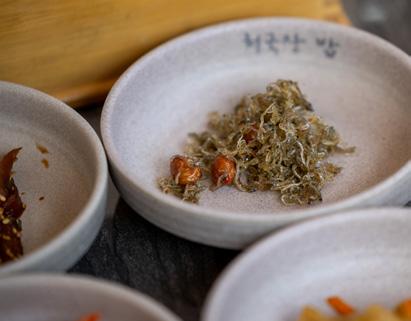


And amidst the concrete and steel are remarkable areas of tranquillity. A large untamed field of wildflowers, sandwiched between two busy avenues, provided an unexpected highlight when apparent masses of bumblebees turned out instead to be hummingbird hawk-moths.
Walking sections of the Seoul City Wall also dipped in and out of serene, stylish neighbourhoods, through parks and erupted into glorious city vistas.
The layered approach is evident in the culture too. Korea, both North and South, is a peninsula seemingly forever being conquered and collected by two neighbouring imperialists, China and Japan.
And while those two nations infuse much of Korean culture, the endemic traditions are rich and vibrant in their own right. Having fought hard, firstly for independence, then for democracy, South Koreans gather, celebrate and protest frequently and spontaneously.
Old news-gathering instincts kicked in hard on a Saturday morning in Seoul, when we rounded a corner to find masses of marchers shouting, trumpeting and waving banners.
Thousands upon thousands of police disembarked from buses, bedecked in riot gear, while spotters lined windows in high buildings as things seemingly built to a crescendo.
A helpful guide at a neighbourhood information kiosk chuckled at our concerns. “It happens every Saturday,” she explained. “Most weekends, the police outnumber the protestors.”
Ironically, mere weeks after our visit, President Yoon Suk Yeol was suspended after trying to impose martial law. Those same protestors were out again in force, this time in earnest, demanding they retain
“ ...AMIDST THE CONCRETE AND STEEL ARE REMARKABLE AREAS OF TRANQUILLITY. ”


their right to protest and have a voice in their nation.
Meanwhile, we turned another corner during our trip, walked a block and stumbled into the midst of a Joseon dynasty celebration, where a dazzling wedge of performers twirled in traditional costumes, surreptitiously checking coiffures on latest Samsungs.
People who dress in period costume are afforded free entry into the numerous palaces and cultural sites throughout Seoul it’s a clever way to both promote and immerse tourists and locals alike in tradition.
Those layers continue in architecture and ambience. Sejong-daero, the street that runs through part of downtown Seoul, has Gyeongbokgung Palace at one end and walls of new shimmering office steel at the other. A statue of Admiral Yi Sun-sin, who saved the country from the brink of collapse during the Japanese invasion of 1592, stands proudly on a plinth, astride both the ancient and the modern worlds.
In the famous Seoul street markets, meanwhile, this translates into a fusion of flavours.
Hangover soup, roast lobster with cheese, an array of spectacular custard-based pastries and deboned chicken claws fit seamlessly next to Zespri kiwifruit and dragon fruit smoothies.
We wandered, for hours, every side street an adventure, every staircase a portal.
Step counts bloomed, as the layers upon layers of a remarkable city unfurled before our dazed eyes.



Mount Maunganui’s cheekiest café is shaking up the scene with matcha magic, cult-status offcuts and a drinks menu that’s anything but ordinary.
WORDS HAYLEY BARNETT
PHOTOS RACHEL HADFIELD , TIMMO AND SARAH BROOKY

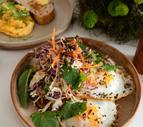

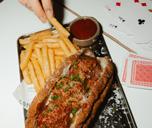
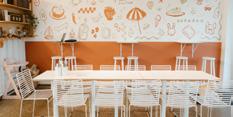
Tucked behind a couple of shops on Mount Maunganui’s Heath Street is a café where somethin’ cool is brewing. And I don’t mean the coffee, though that’s good, and super cool, too.
The old Heath Street Caf é is now being run by dynamic husband-and-wife duo Nathan and Ash, a foodie couple who admit Somethin’ Somethin’ wasn’t always the plan. In fact, Ash didn’t even know Nathan had bought the place until it was a done deal.
“I think if I’d known, I probably would’ve talked him out of it,” she laughs. Thankfully, she didn’t. What started as a spontaneous leap into hospitality has turned into one of the Mount’s most loved destinations for coffee, creative snacks and viral drinks.
Ever tried a white chocolate or strawberry matcha? Ash, now the mastermind behind the drinks menu, didn’t know what matcha was at first, but, since learning about the healthy beverage, she’s gone deep down the rabbit hole.
“I just started Googling and experimenting,” she says, “and now people literally drive from out of town for our drinks.”
These drinks aren’t just photogenic, they’re genuinely delicious. And yes, they make great content for the ‘gram, but what really sets Somethin’ Somethin’ apart is how it doesn’t try to be just another café.
“We didn’t want to open a regular place,” Ash says. “We wanted to do something a little different. We wanted to make it a place people go out of their way



for.” And they have. From their now-iconic “offcuts” (random bits of delicious baked goods that became so popular they now sell out daily) to their ever-evolving menu inspired by international coffee trends, Somethin’ Somethin’ is always doing, well, something.
Take their trip to the Melbourne Coffee Expo earlier this year, for example. That sparked an entire menu revamp.
“In Melbourne, people take their coffee so seriously,” Ash says. “Every café had its own coffee menu, cocktail-style. We came home and thought, why aren’t we doing that?”
Now, they serve up seasonal coffee specials that go beyond the flat white, like their signature Mount Blanc.
Food-wise, Nathan brings the ideas. A self-proclaimed foodie who never wanted to be “on the tools”, he’s the brain behind the food menu, while their tight-knit kitchen team brings them to life. After winning Battle of the Snack at the Flavours of Plenty festival, they also took out the People's Choice Award, beating local heavyweights. “We didn’t think we’d win again,” Ash says. “I didn’t even go into work that day!”
And while it still looks and feels like a café (for now), Somethin’ Somethin’ is constantly pushing the boundaries. With event catering and collabs with local brands, Ash and Nathan are dreaming bigger than just brunch. “We want it to be a community hub,” says Ash, “but also a destination café. The kind of place you tell your friends about.” They’ve nailed both.
SOMETHIN-SOMETHIN.NZ
Hand-sculpted from recycled aluminium by acclaimed Indonesian artist Timboel, these striking horse forms are designed to captivate and endure.



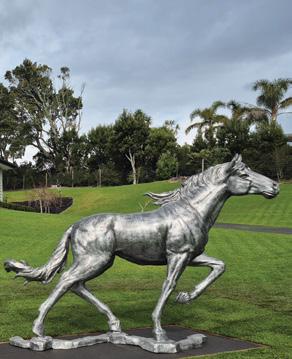




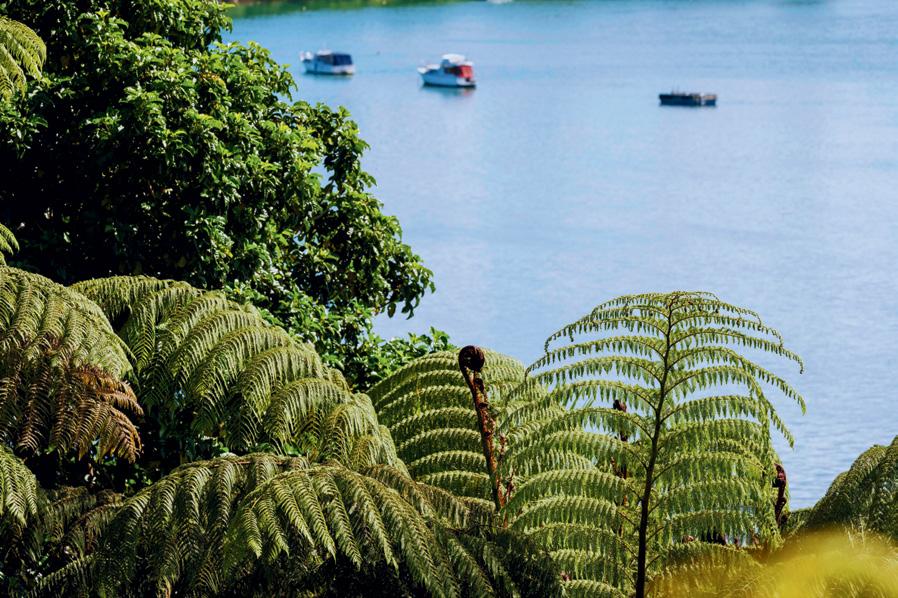
With a curated portfolio of luxury homes, award-winning marketing and our bespoke approach, we deliver exceptional outcomes.
Situated in the highly desirable and exclusive Tides Reach coastal gated community, this country pavilion features a French provincial style, central allée, stunning landscaping and the most private of pool areas. A quality-adorned modern home, elegant in its simplicity and rich in details, offering easy, beautiful lifestyle living in safe and secure surroundings.
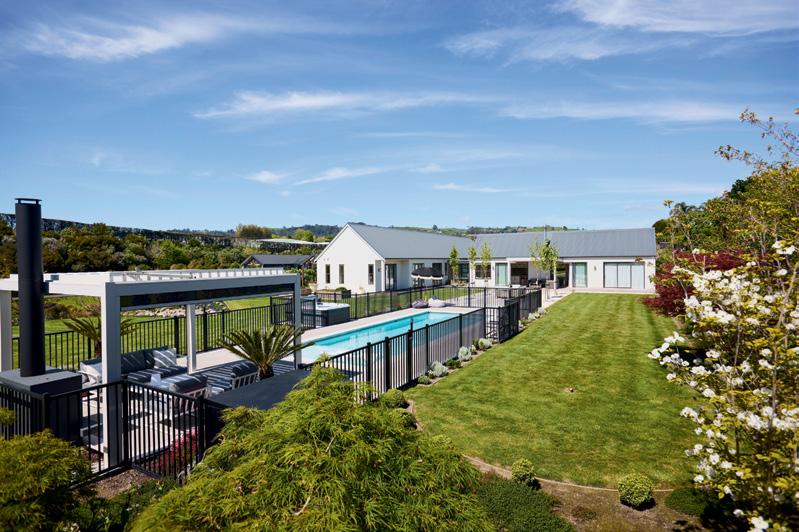

A striking, well-presented contemporary home that will be turnkey for many couples and families, and also offers those requiring more bedrooms and multiple living arrangements some excellent lifestyle options This prime, protected water views Matua location, is alongside the beach access walkway and adjacent to the Kings Ave Reserve, offering the peace, privacy, community and convenience that Matua is renowned for.